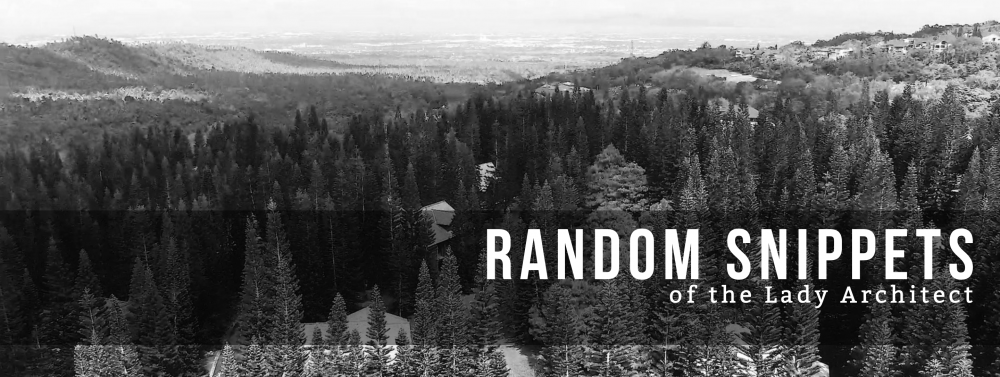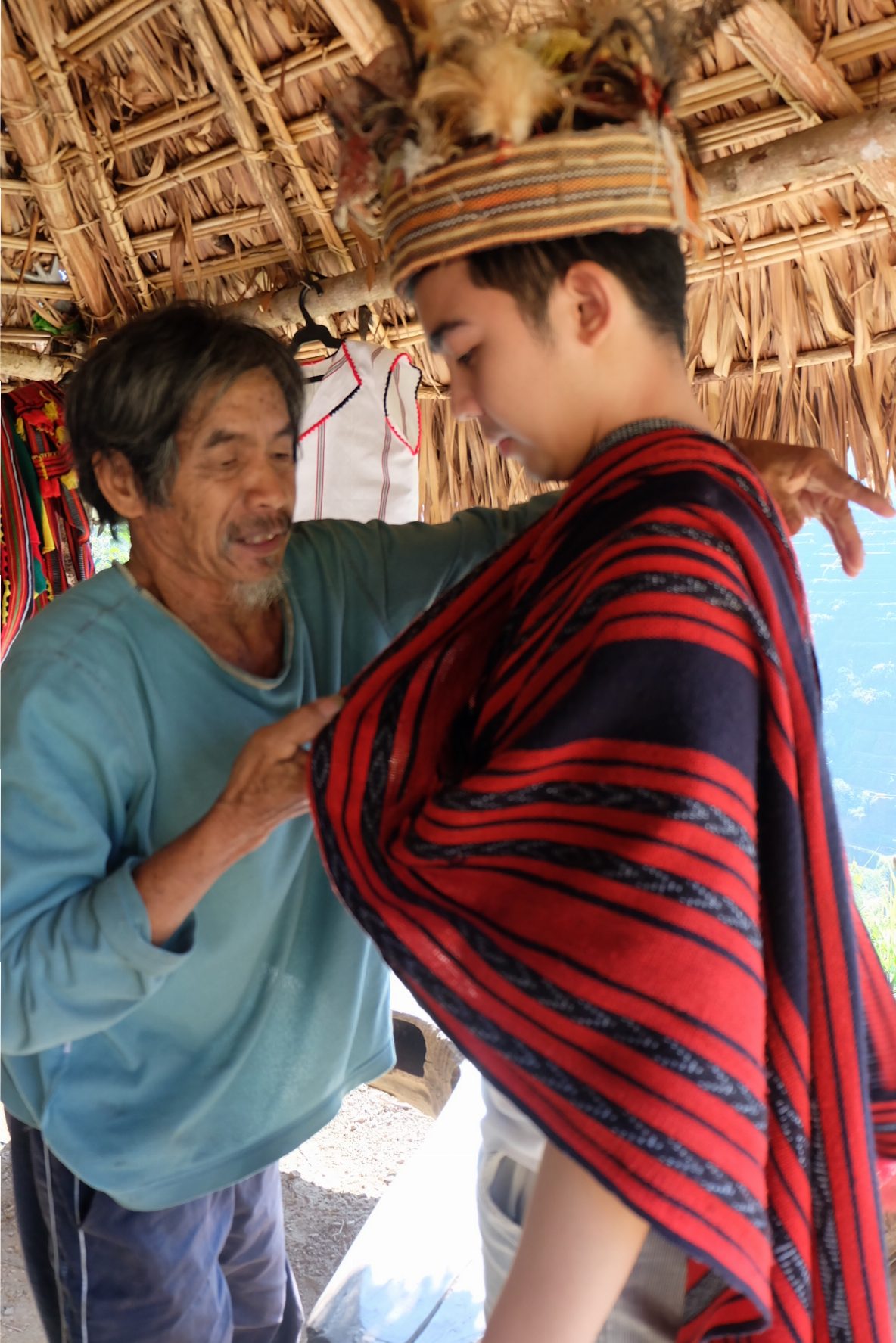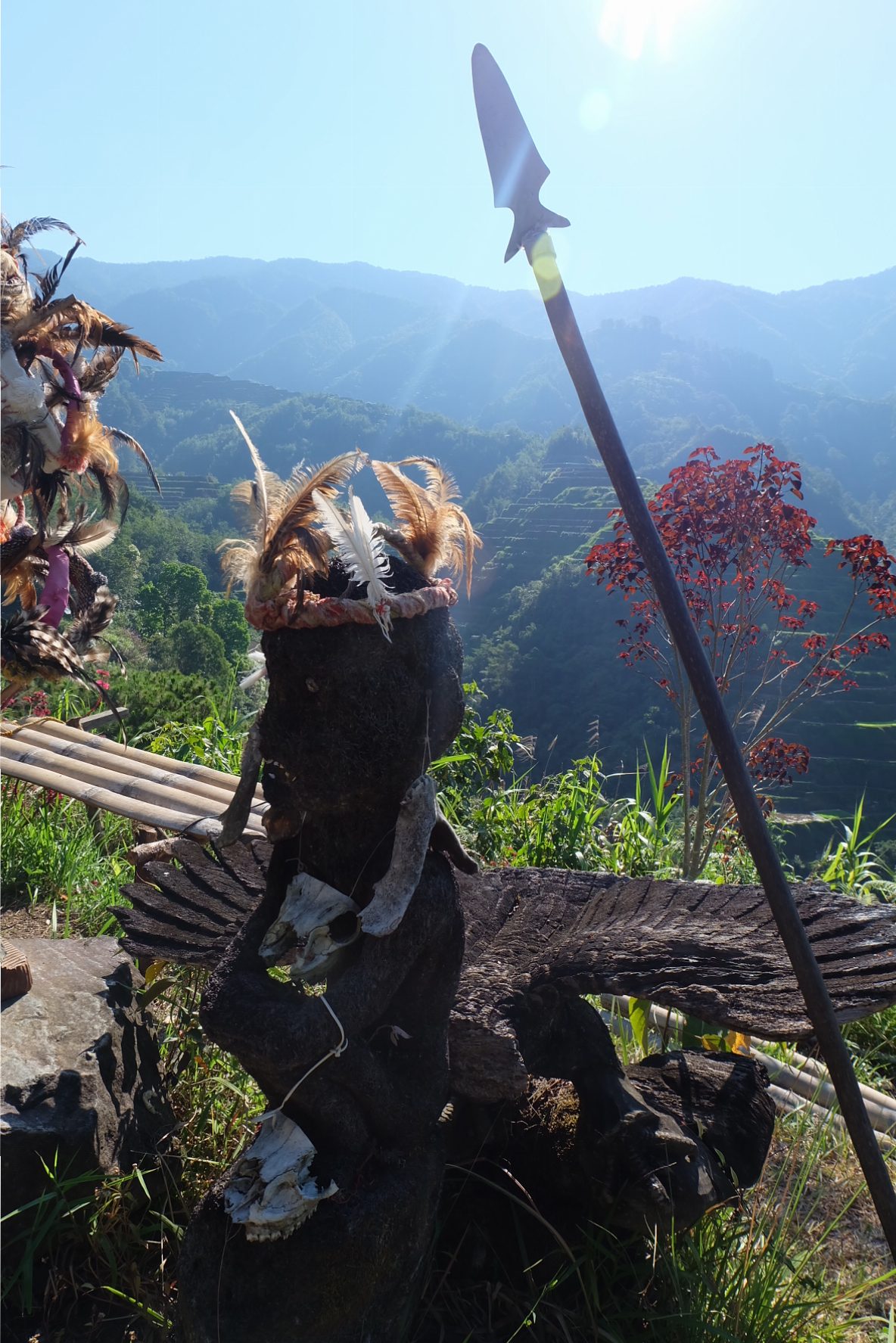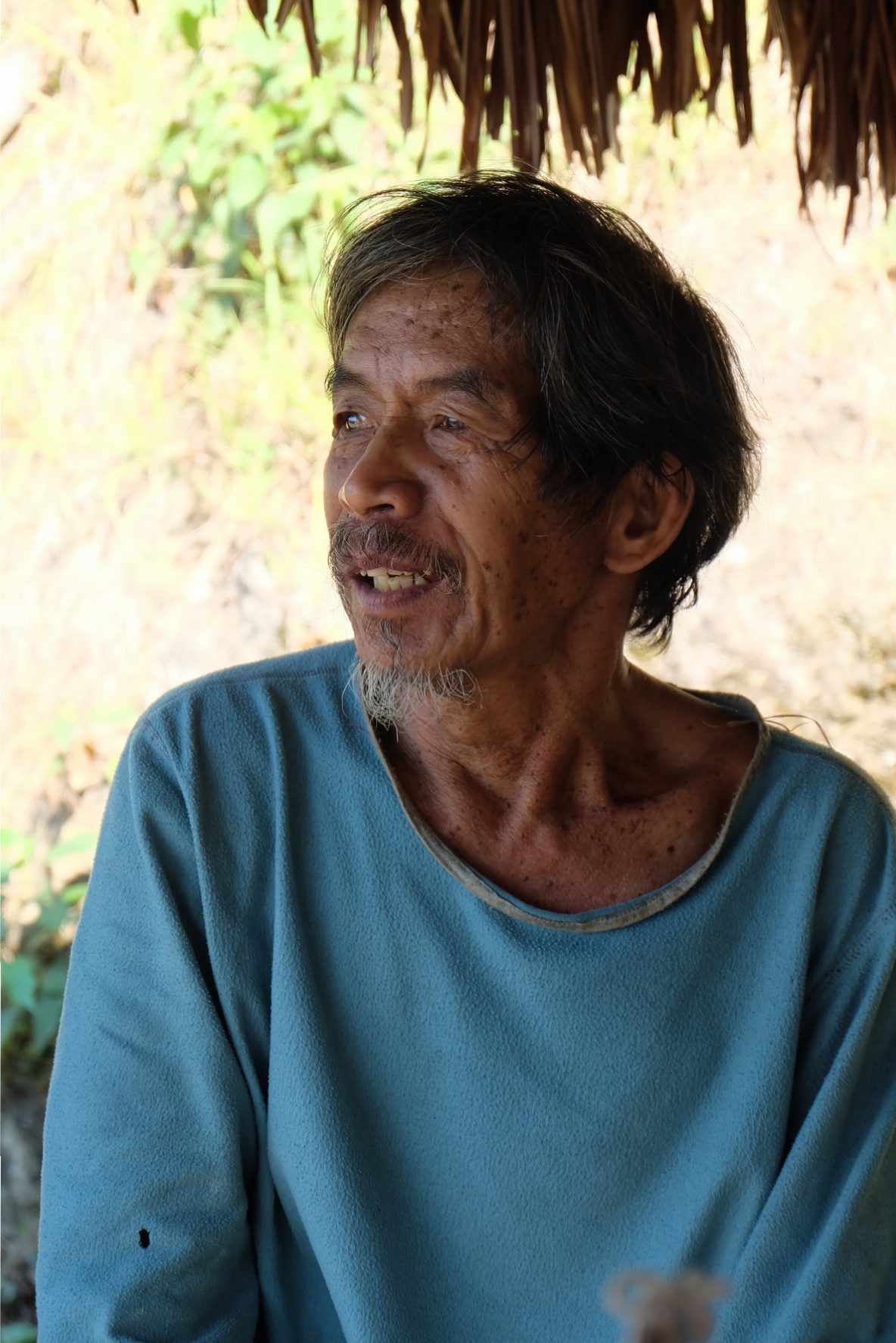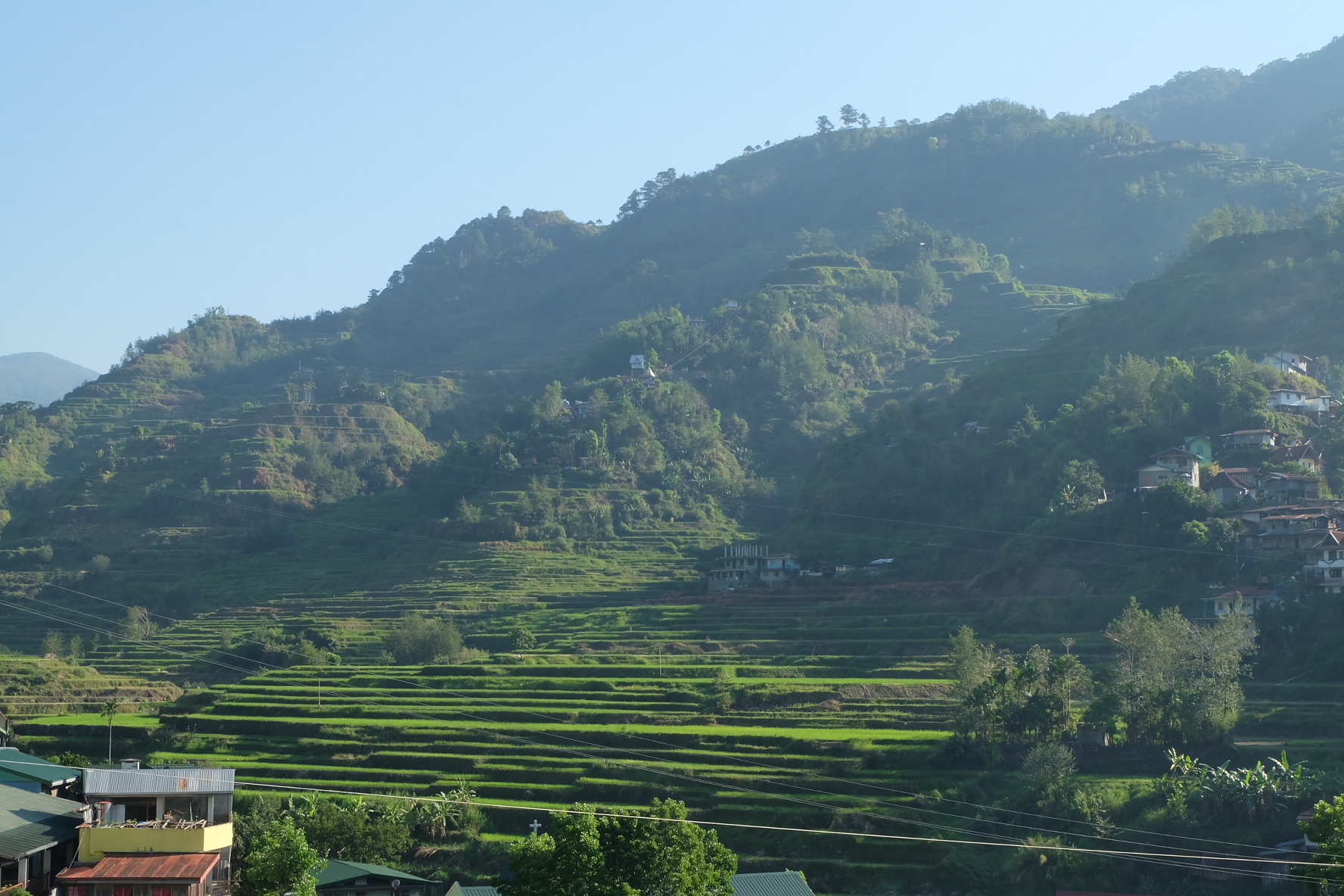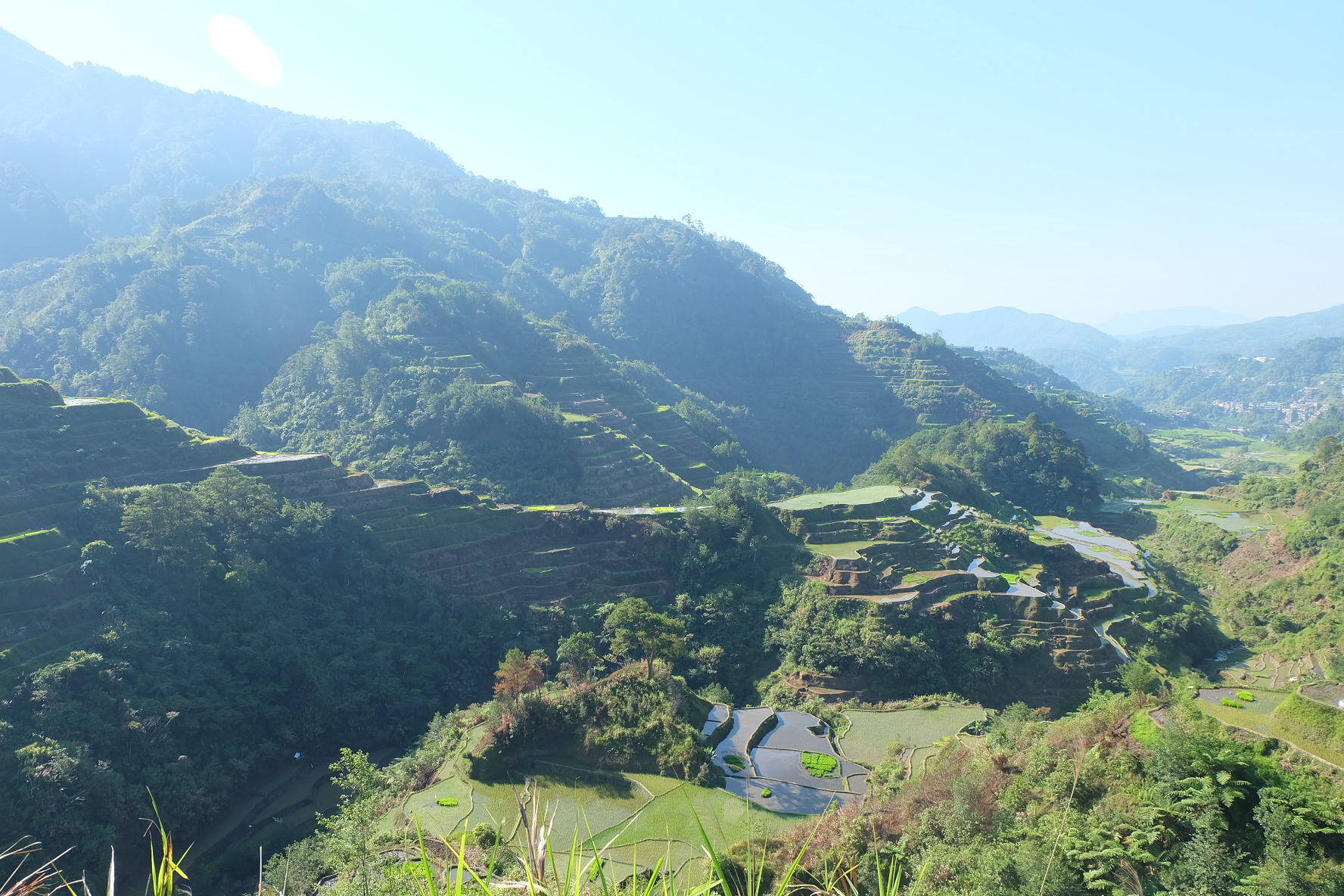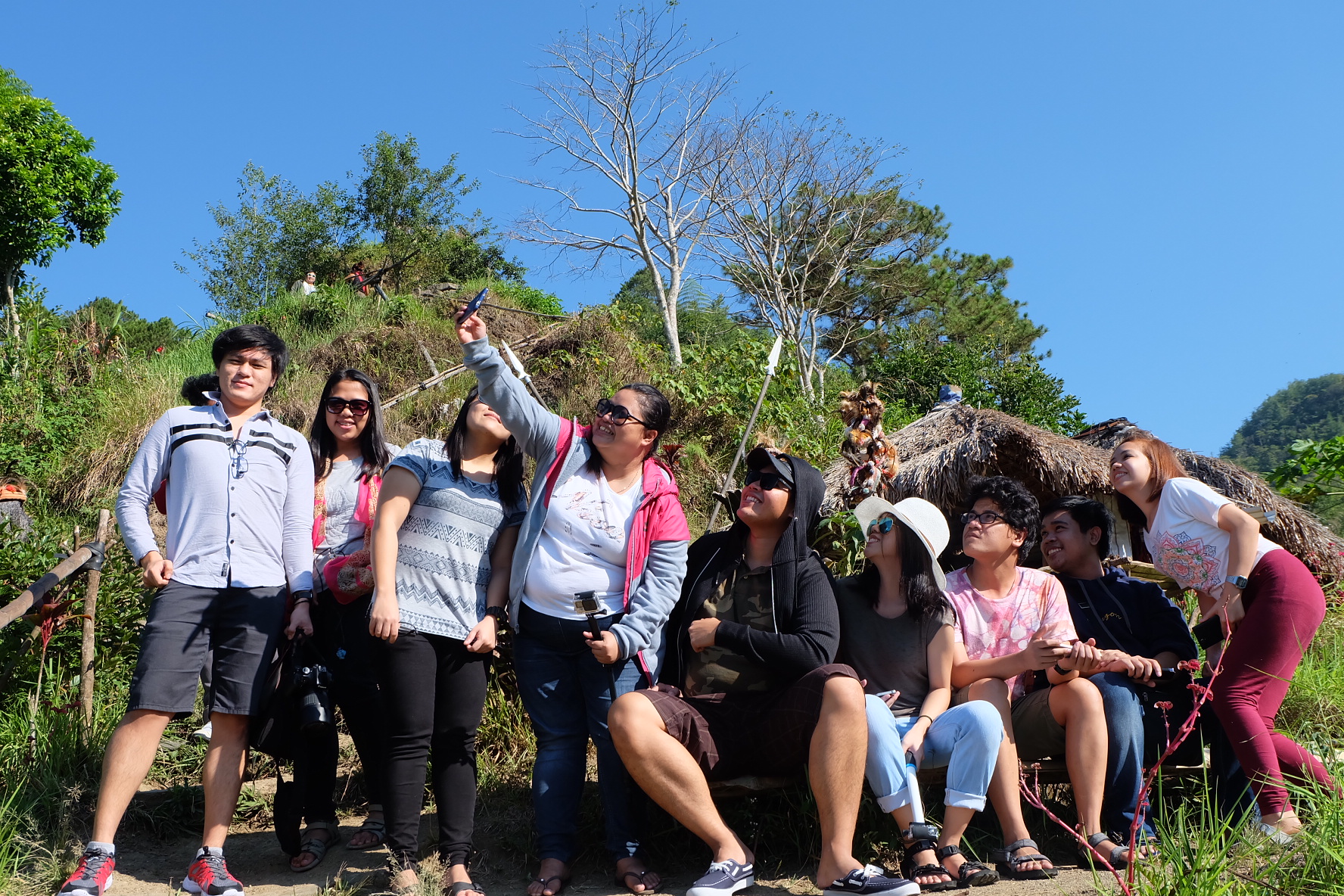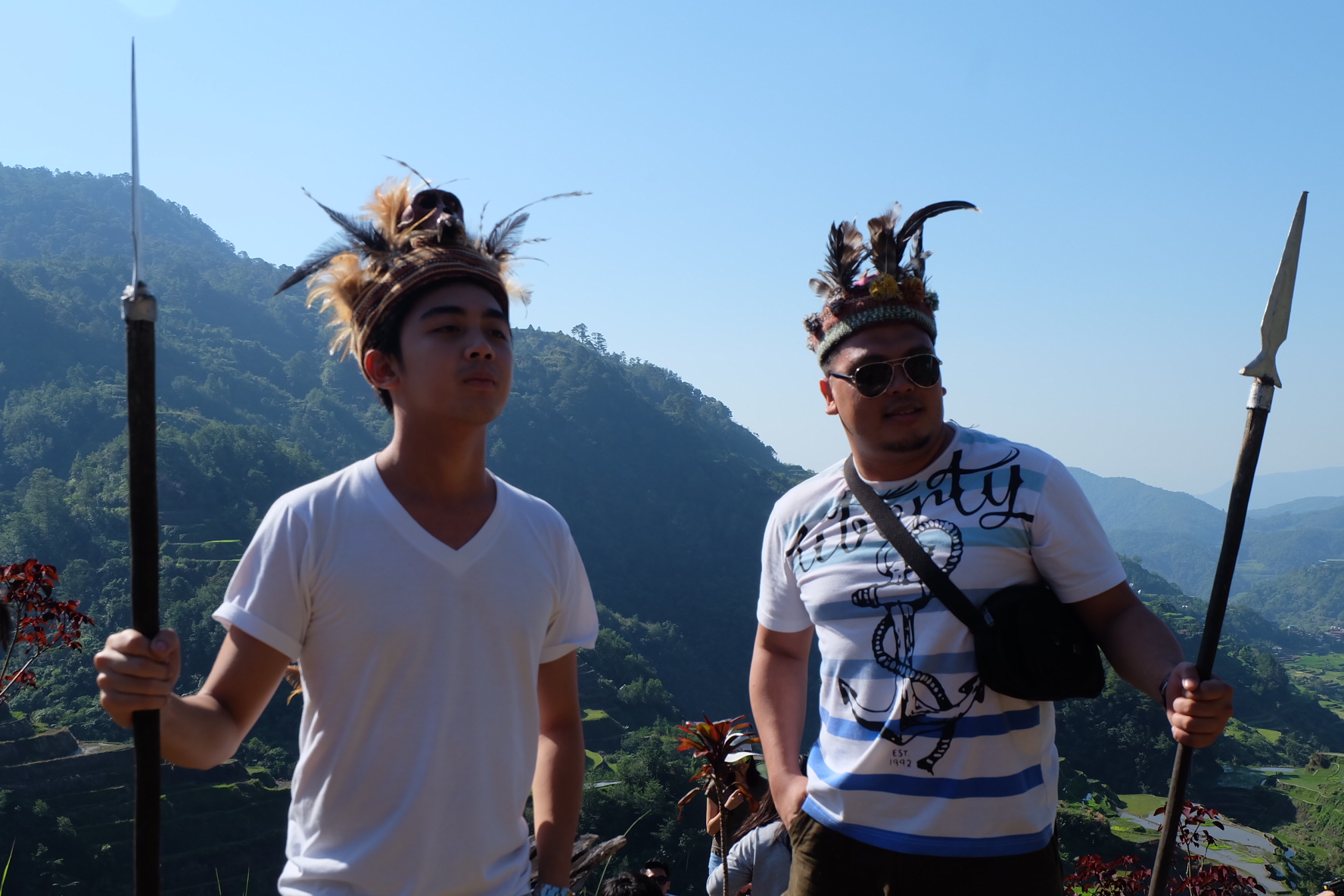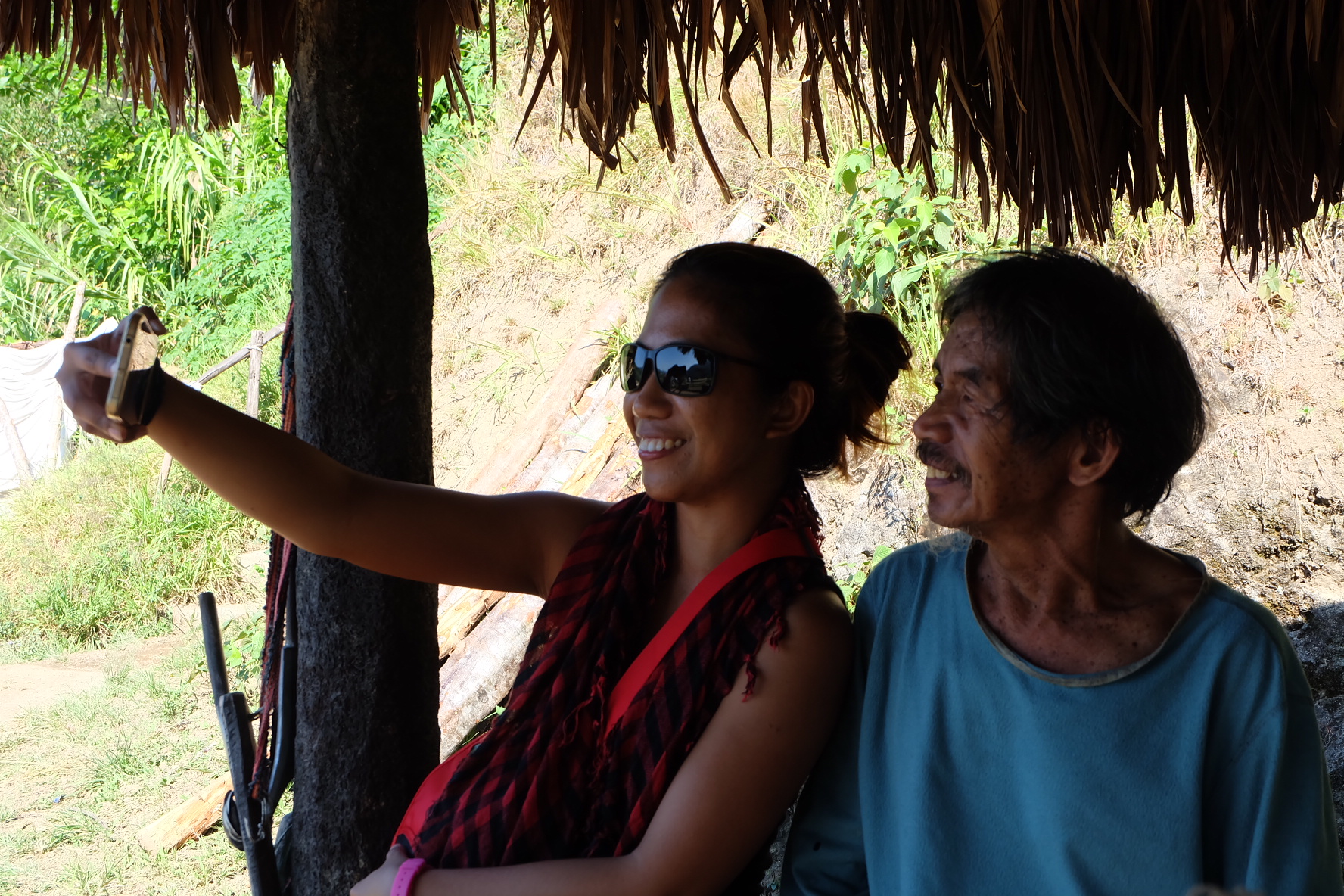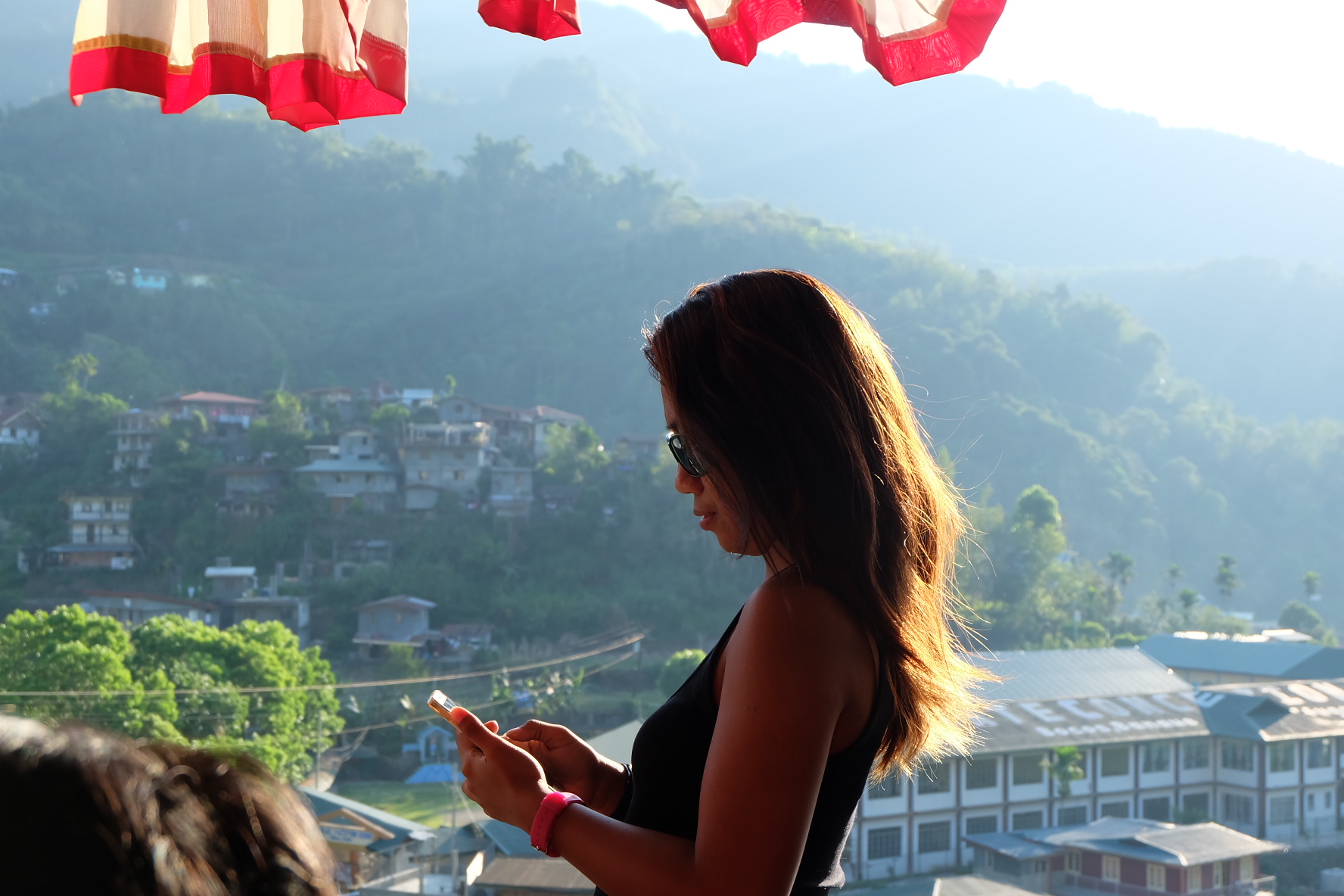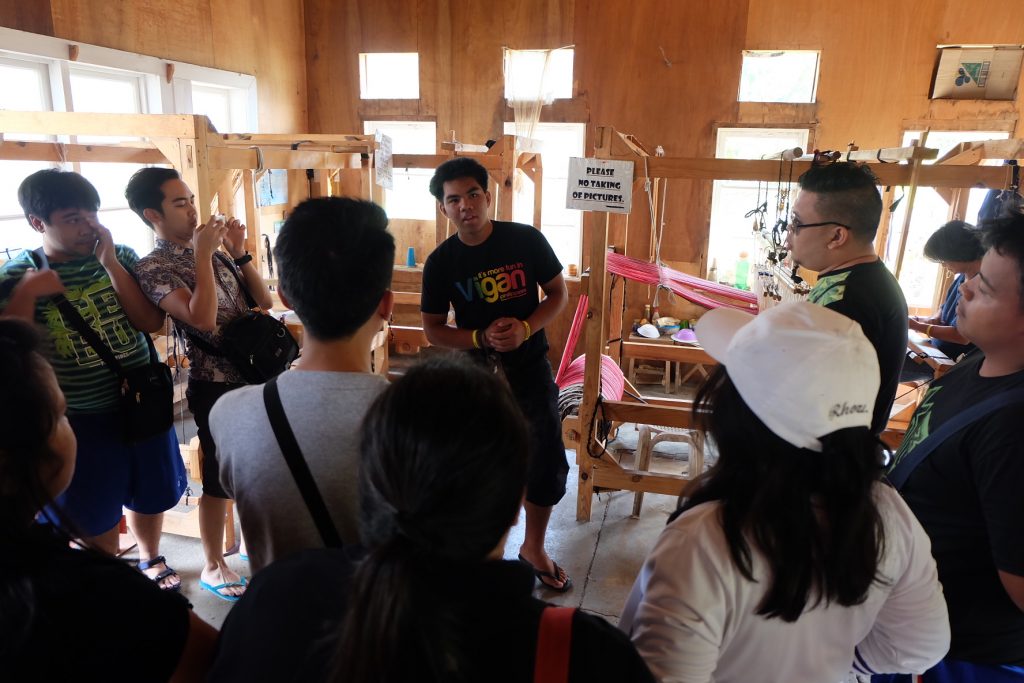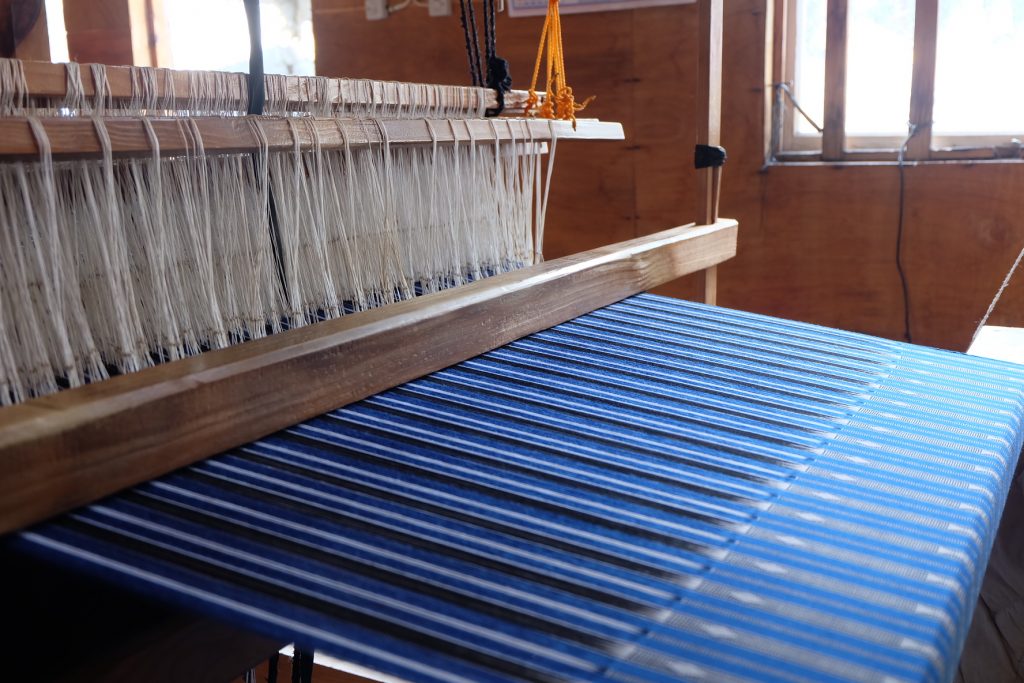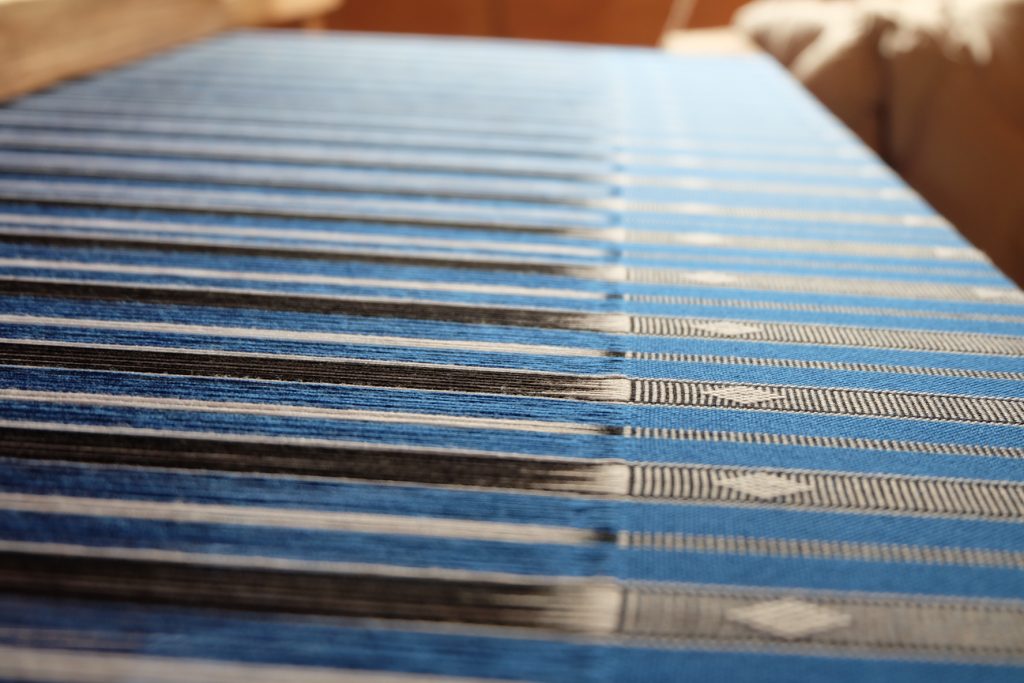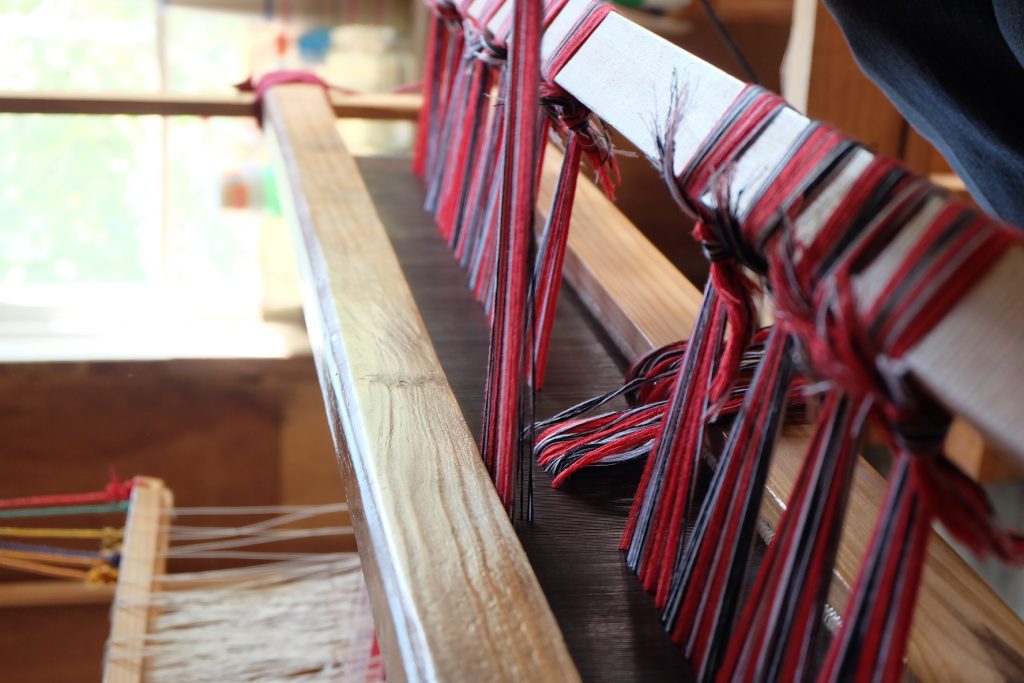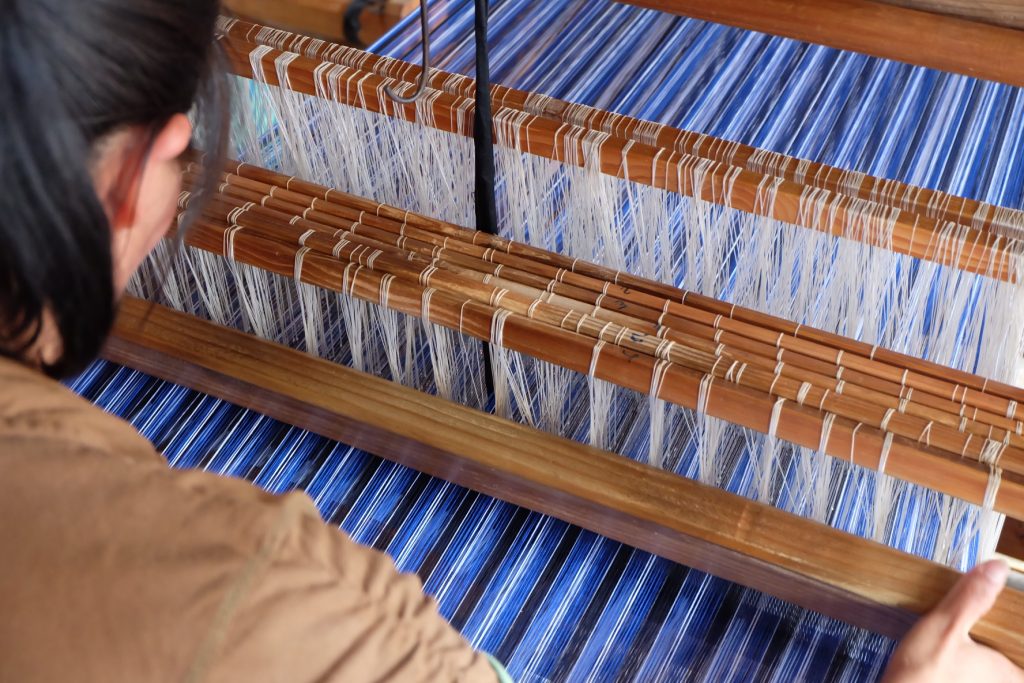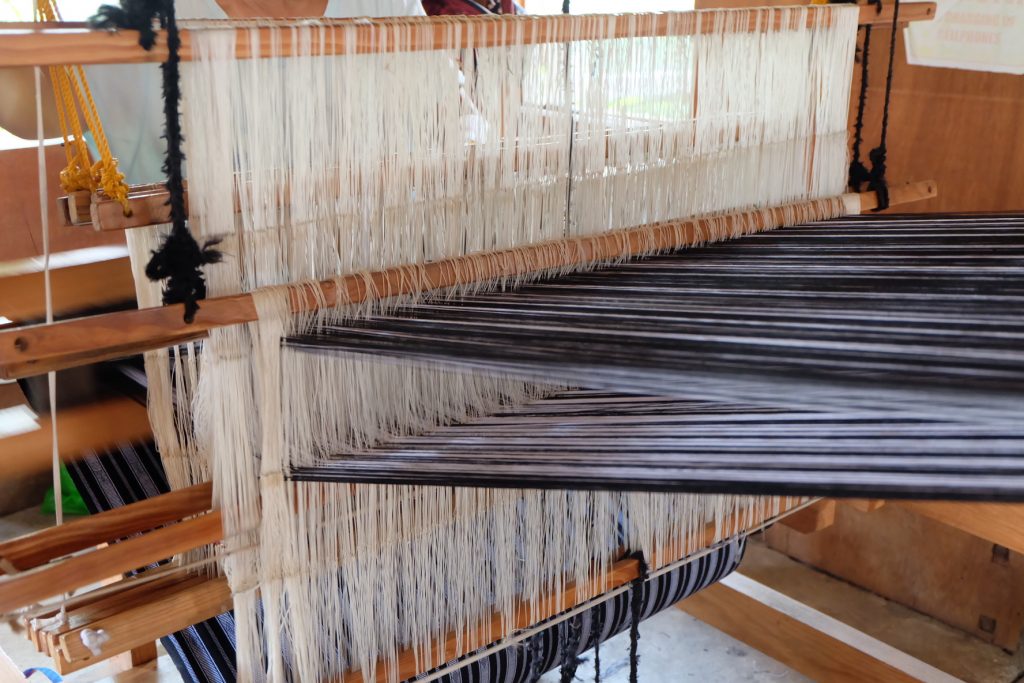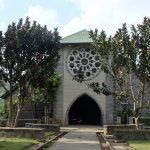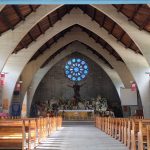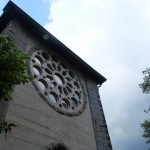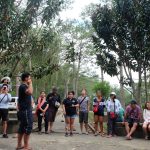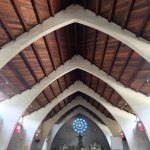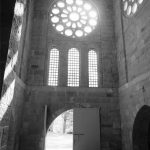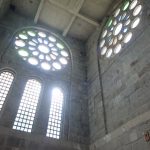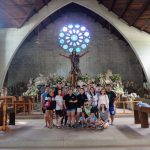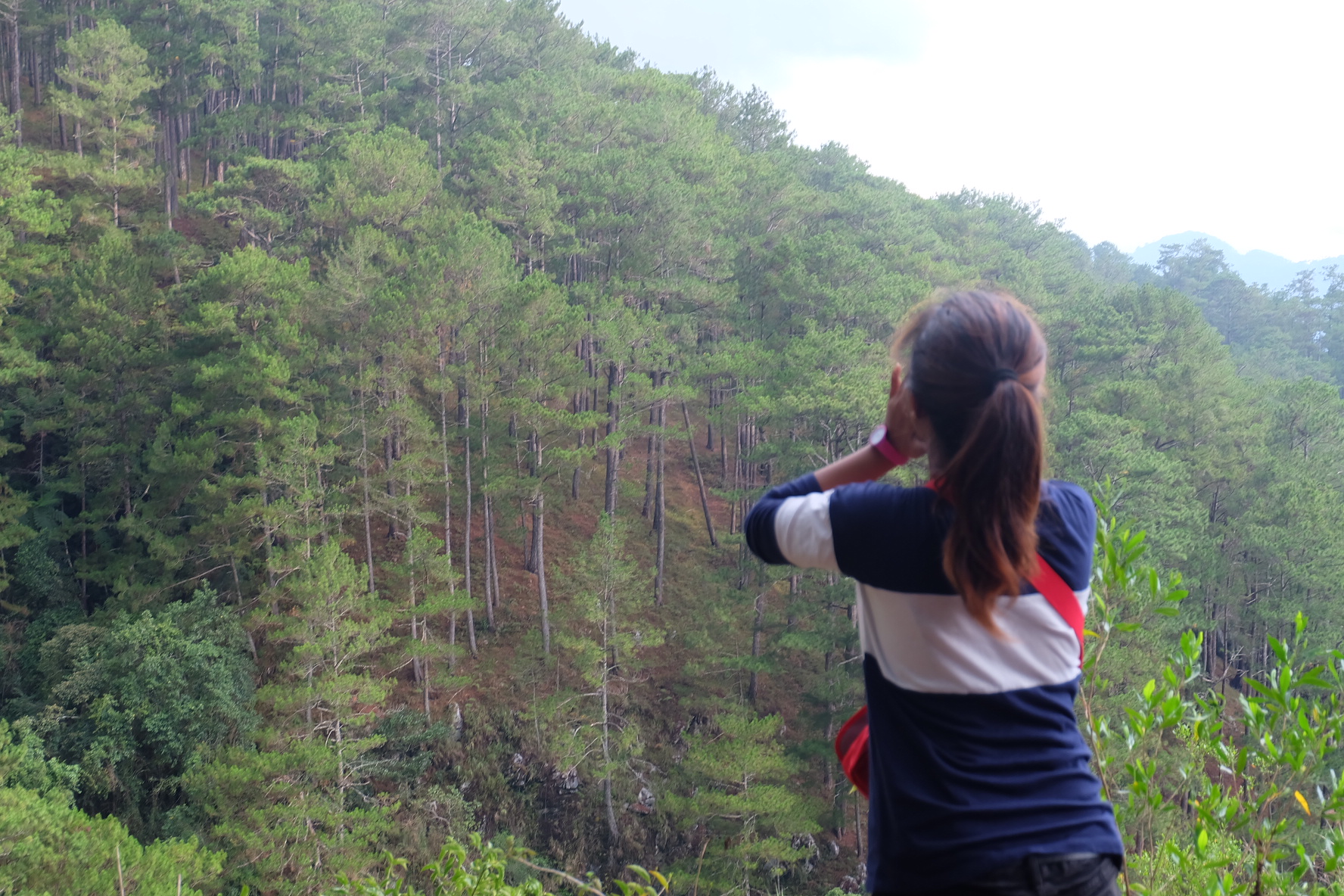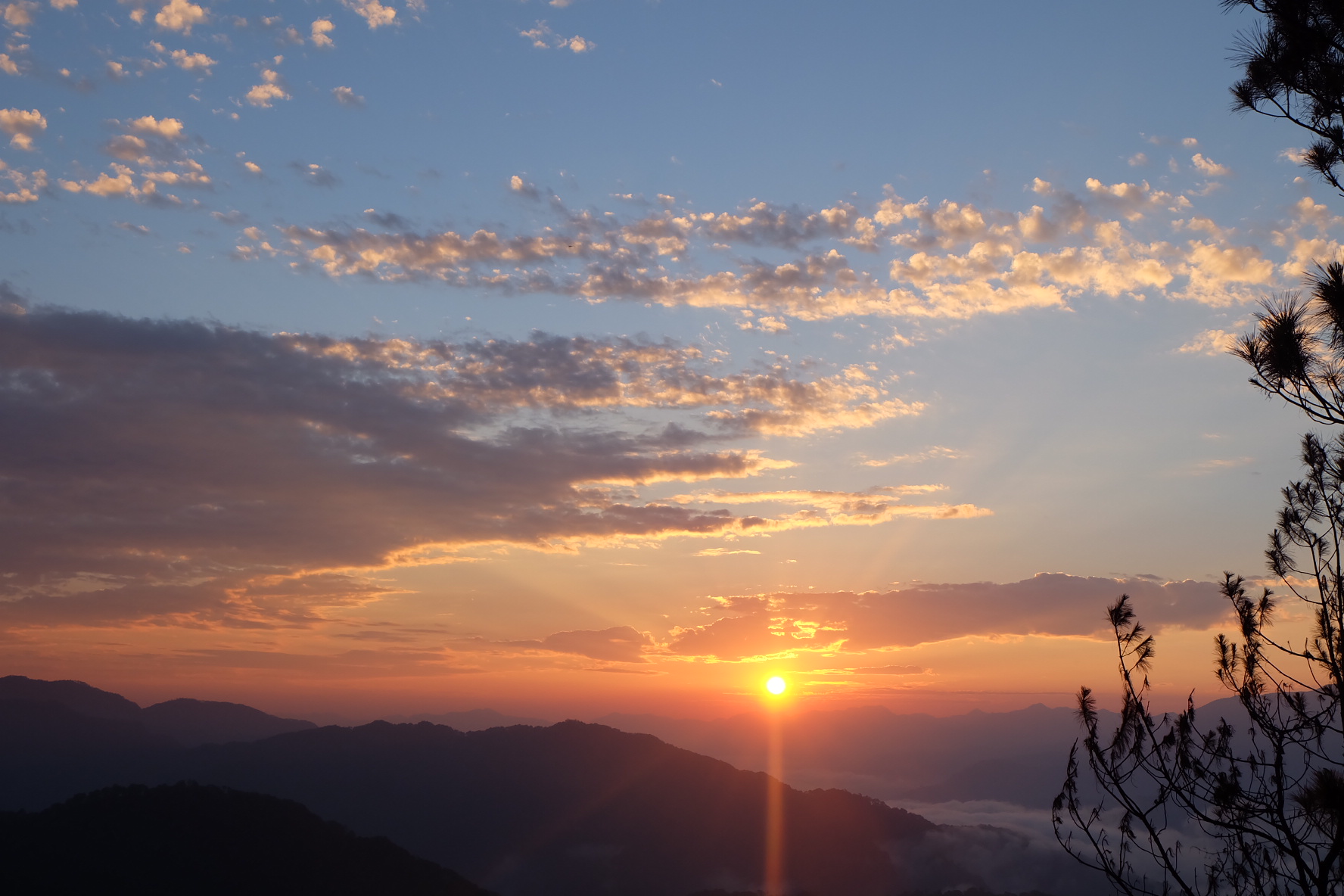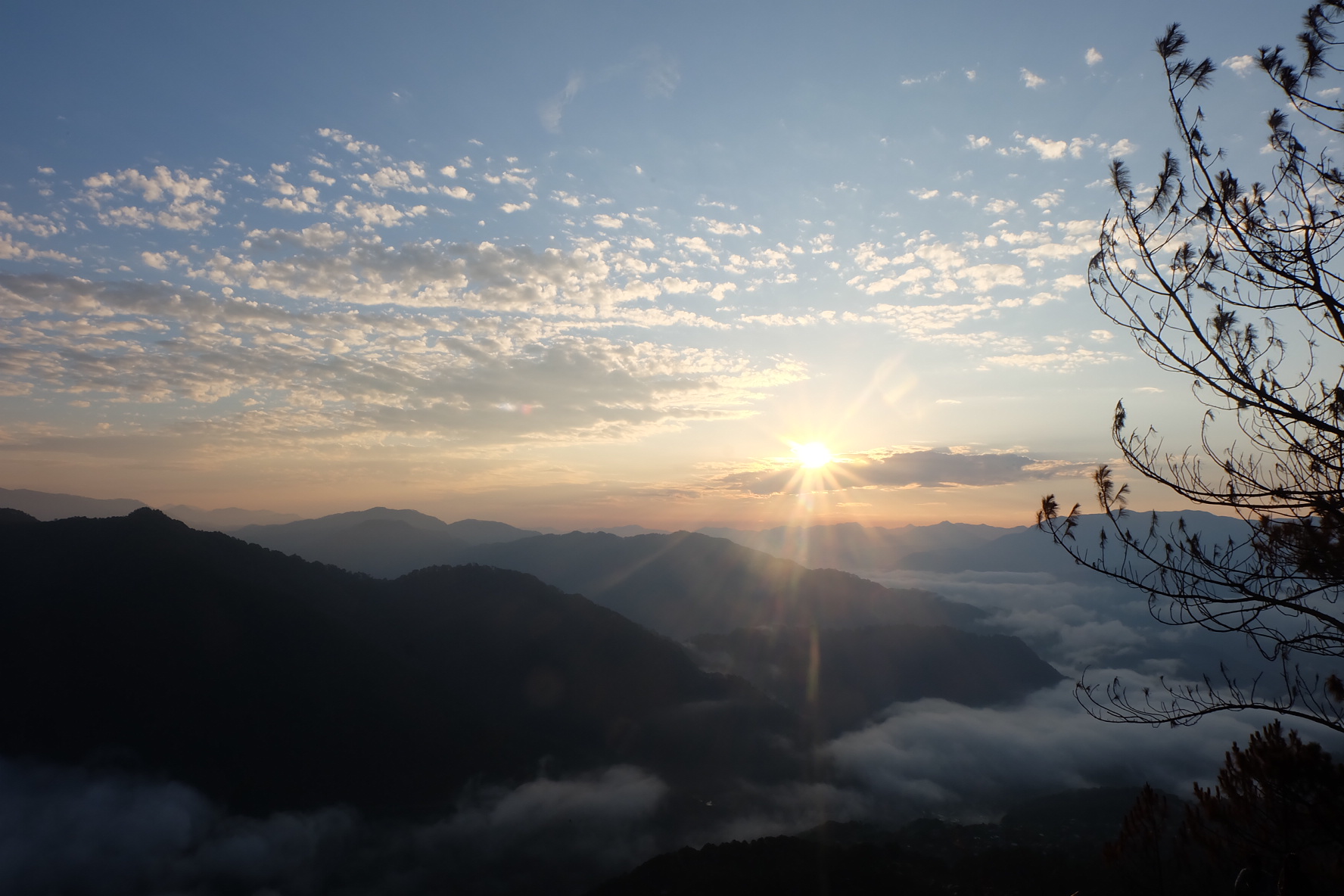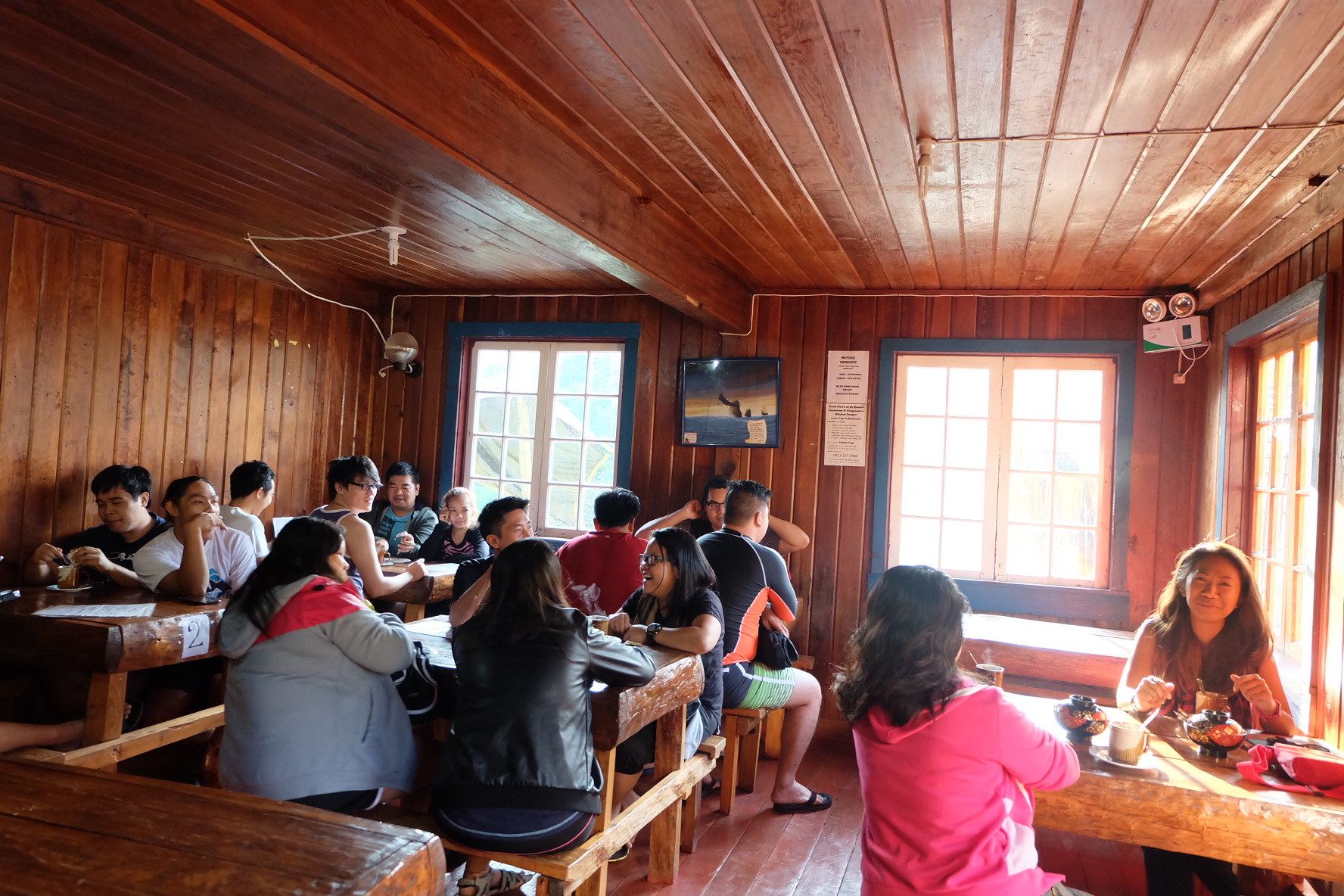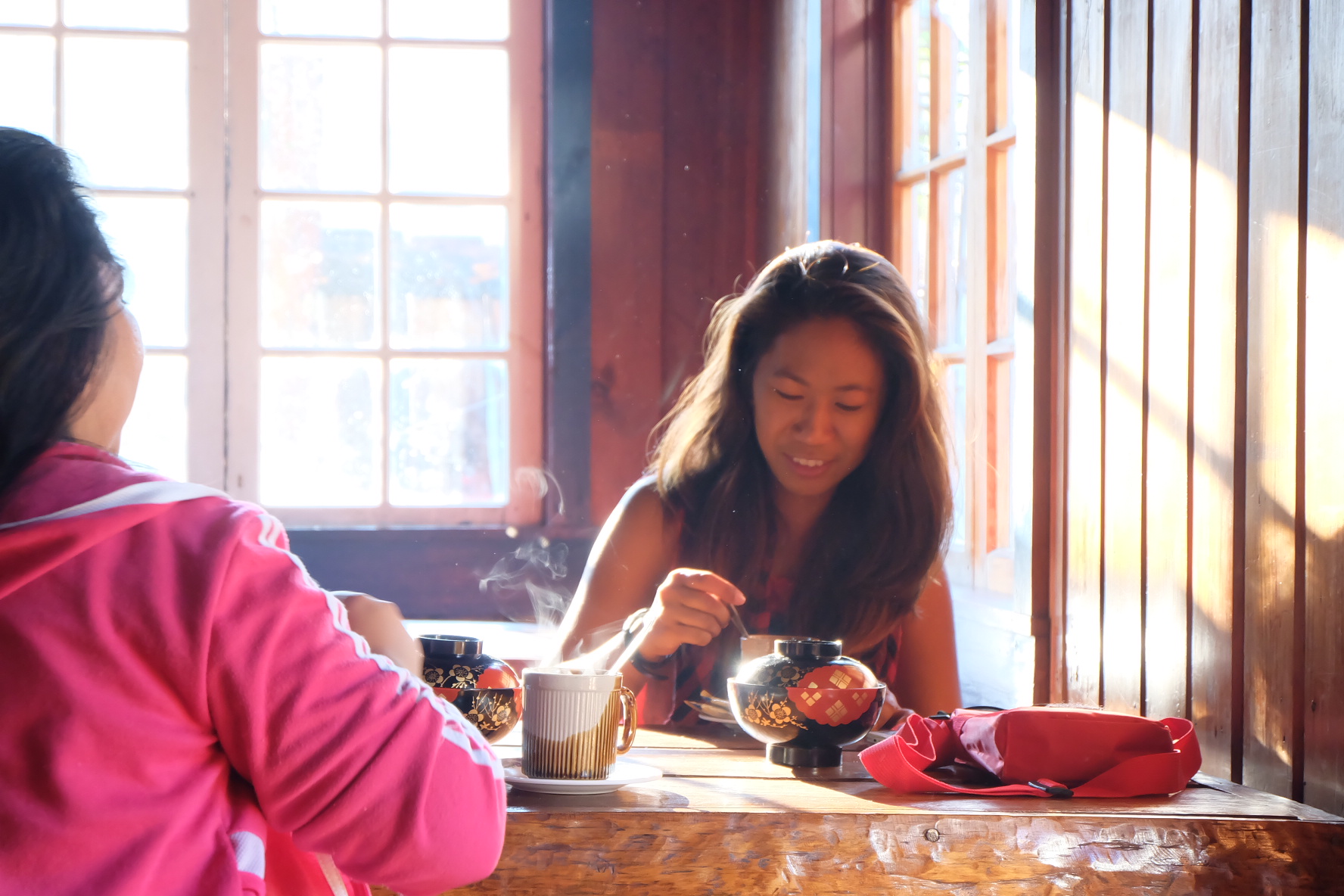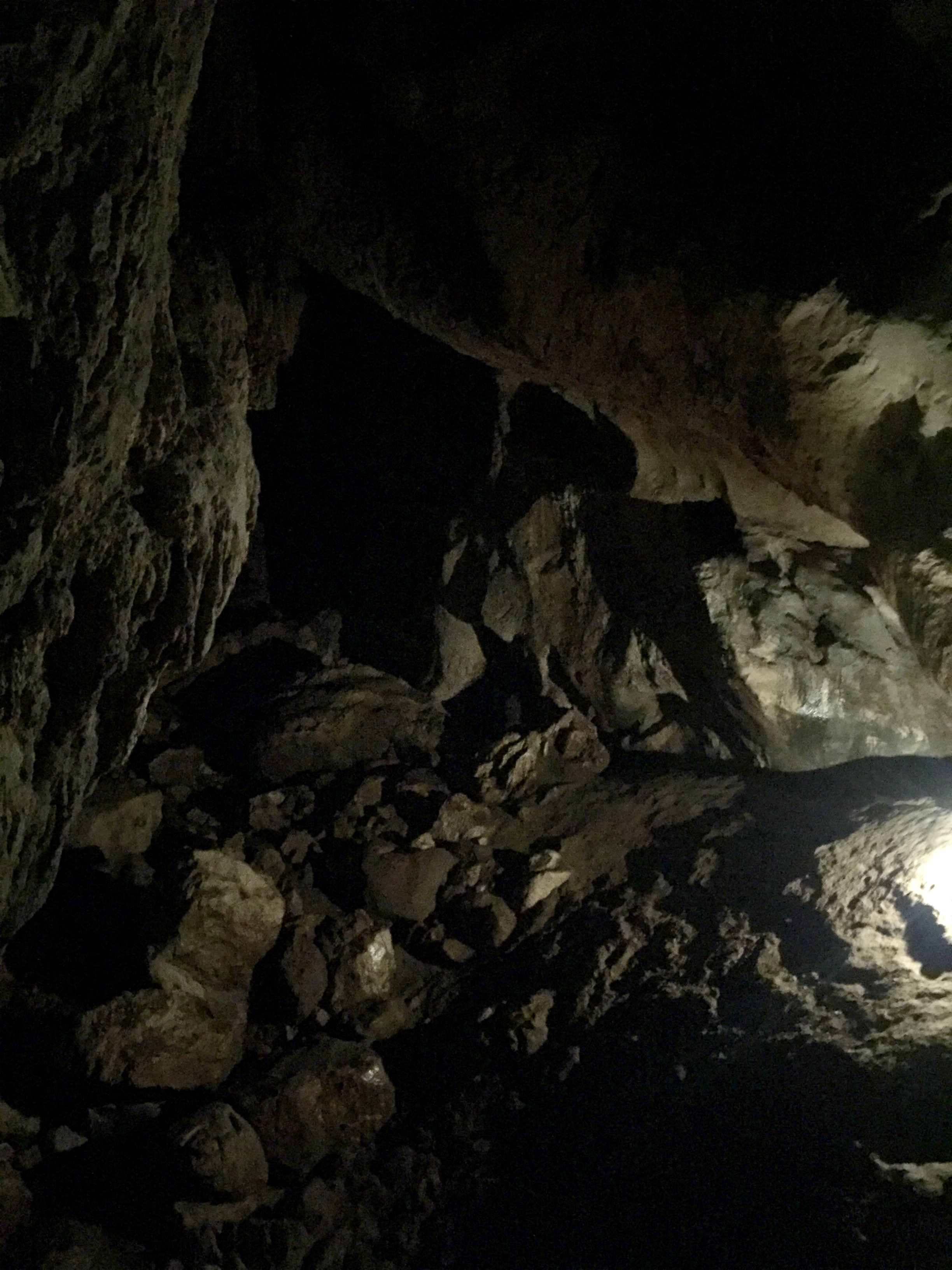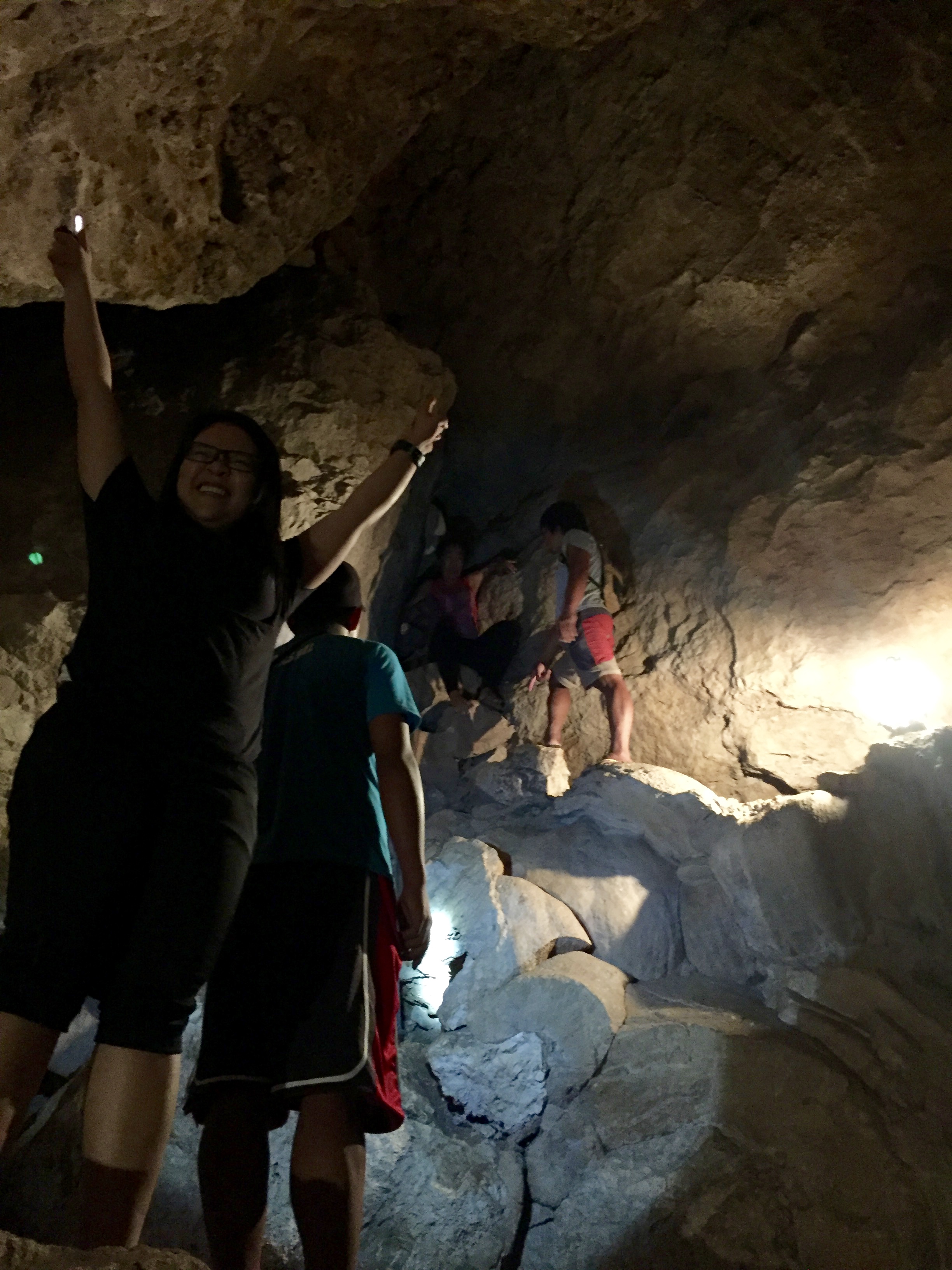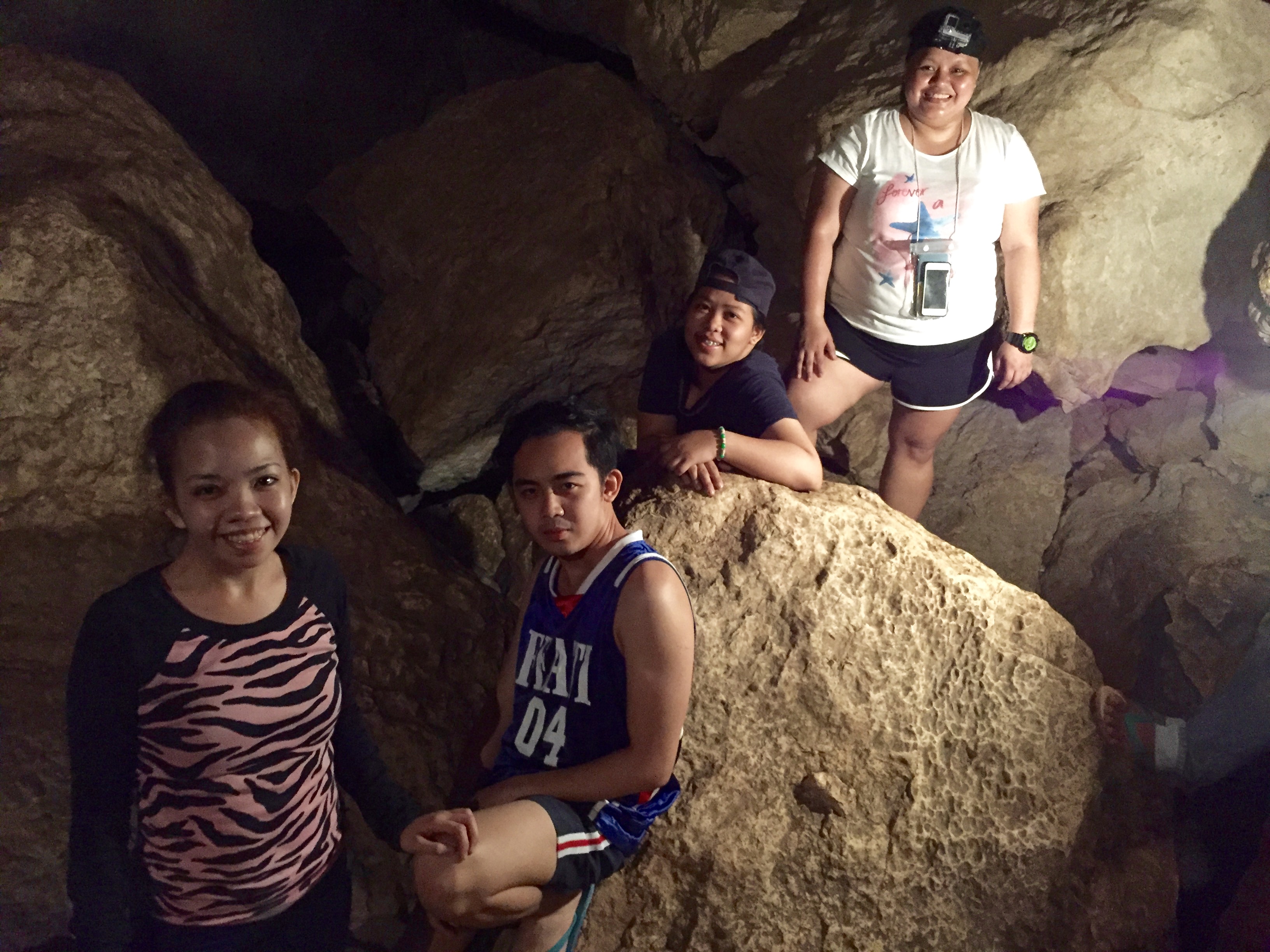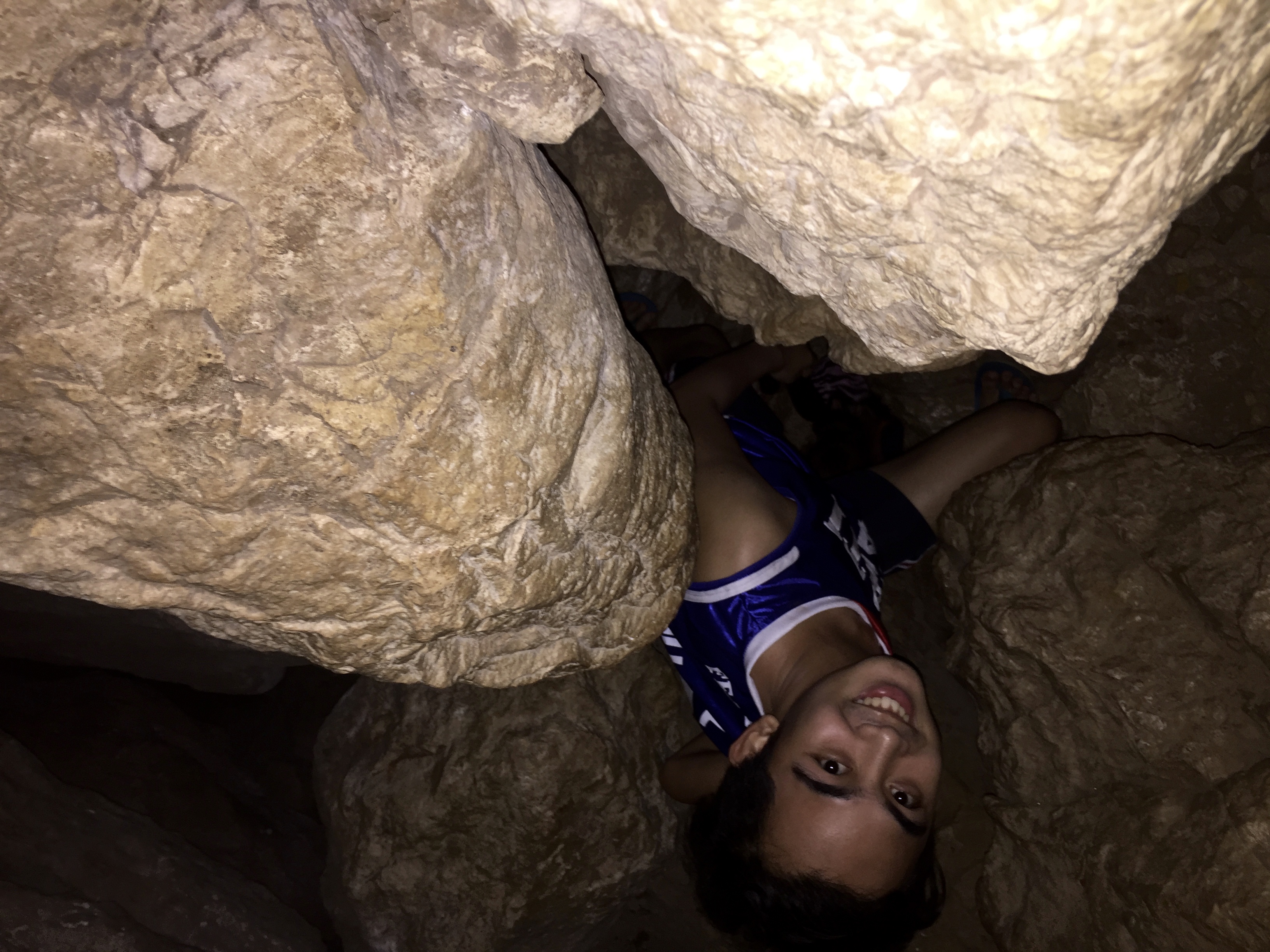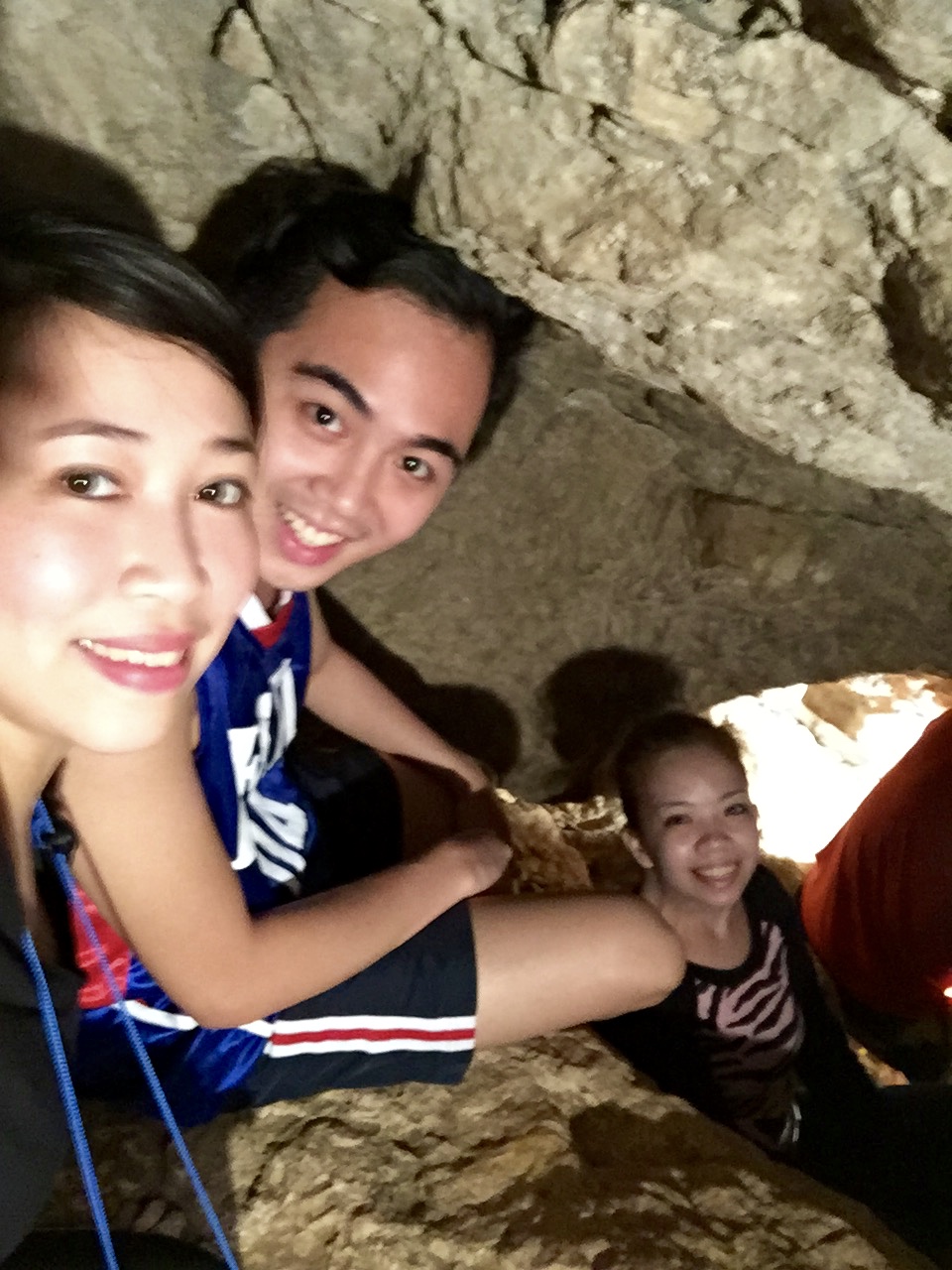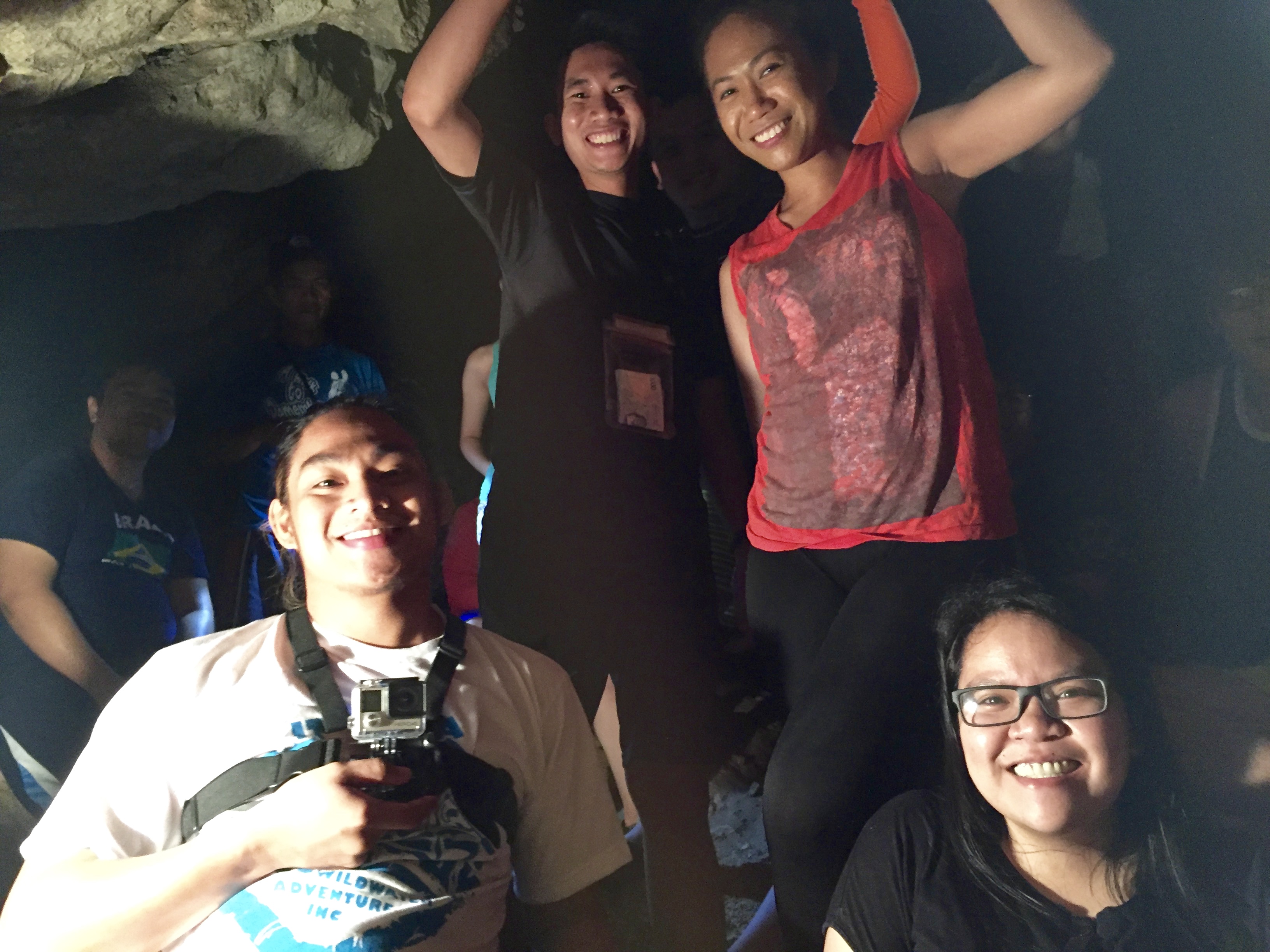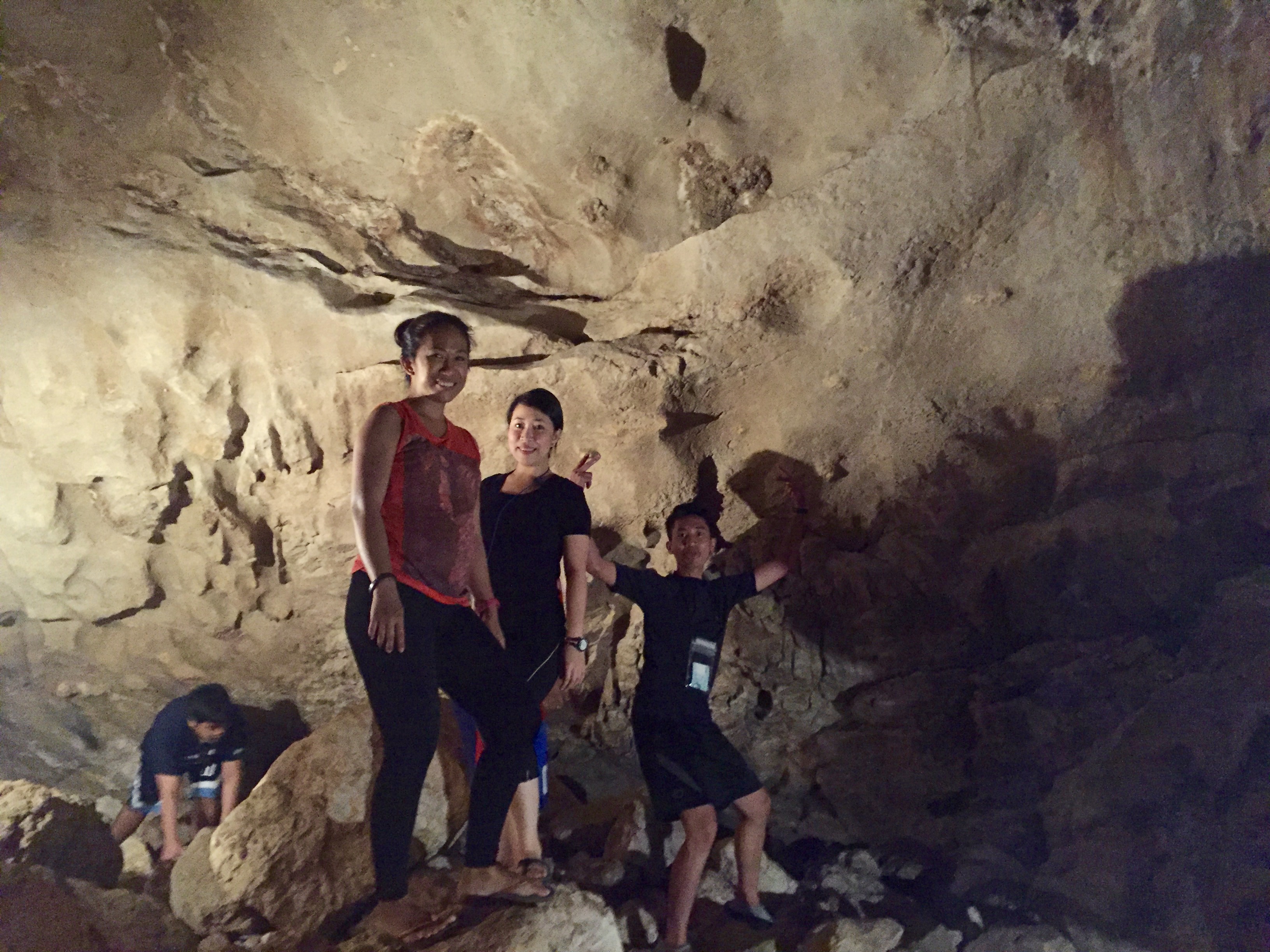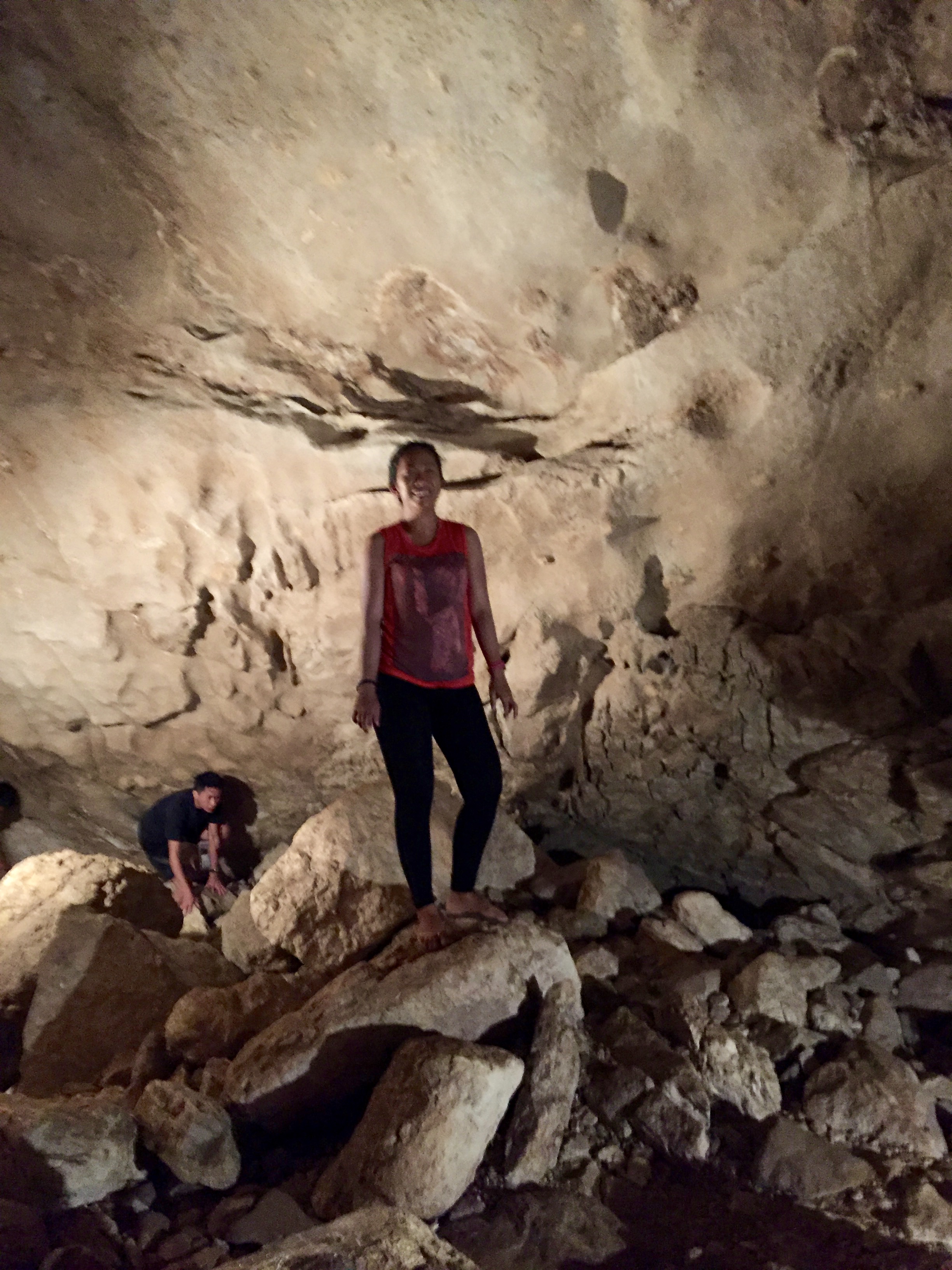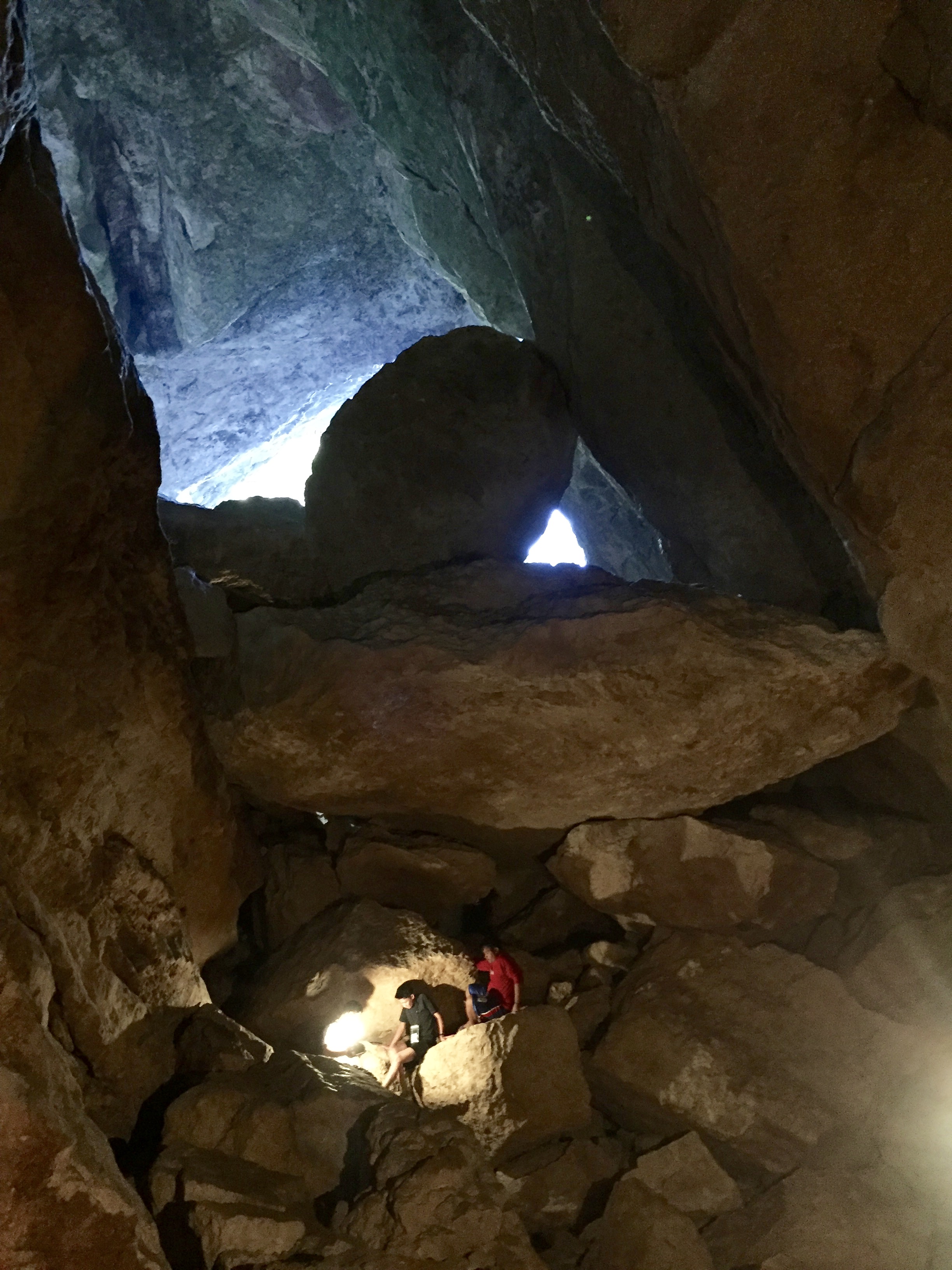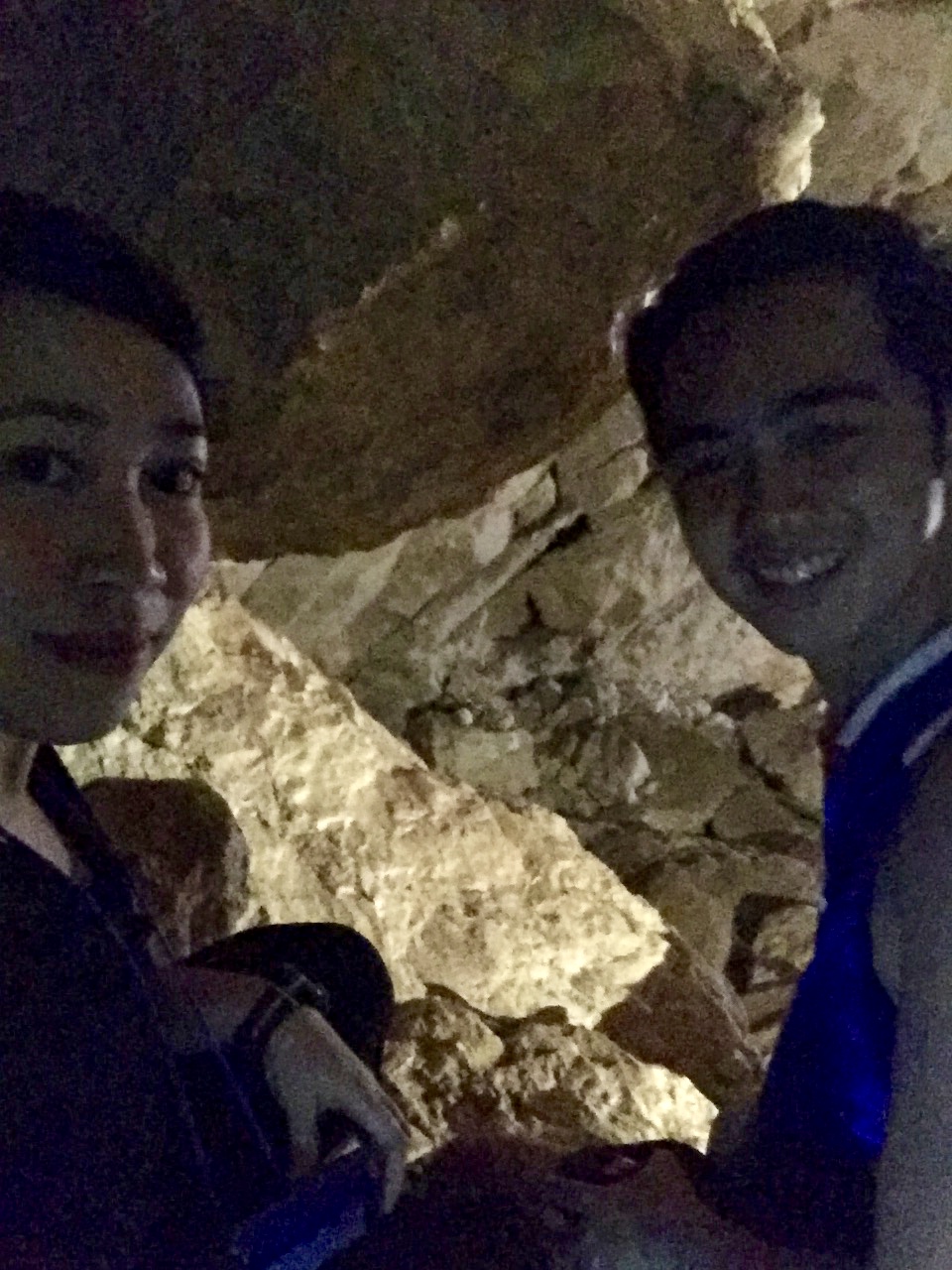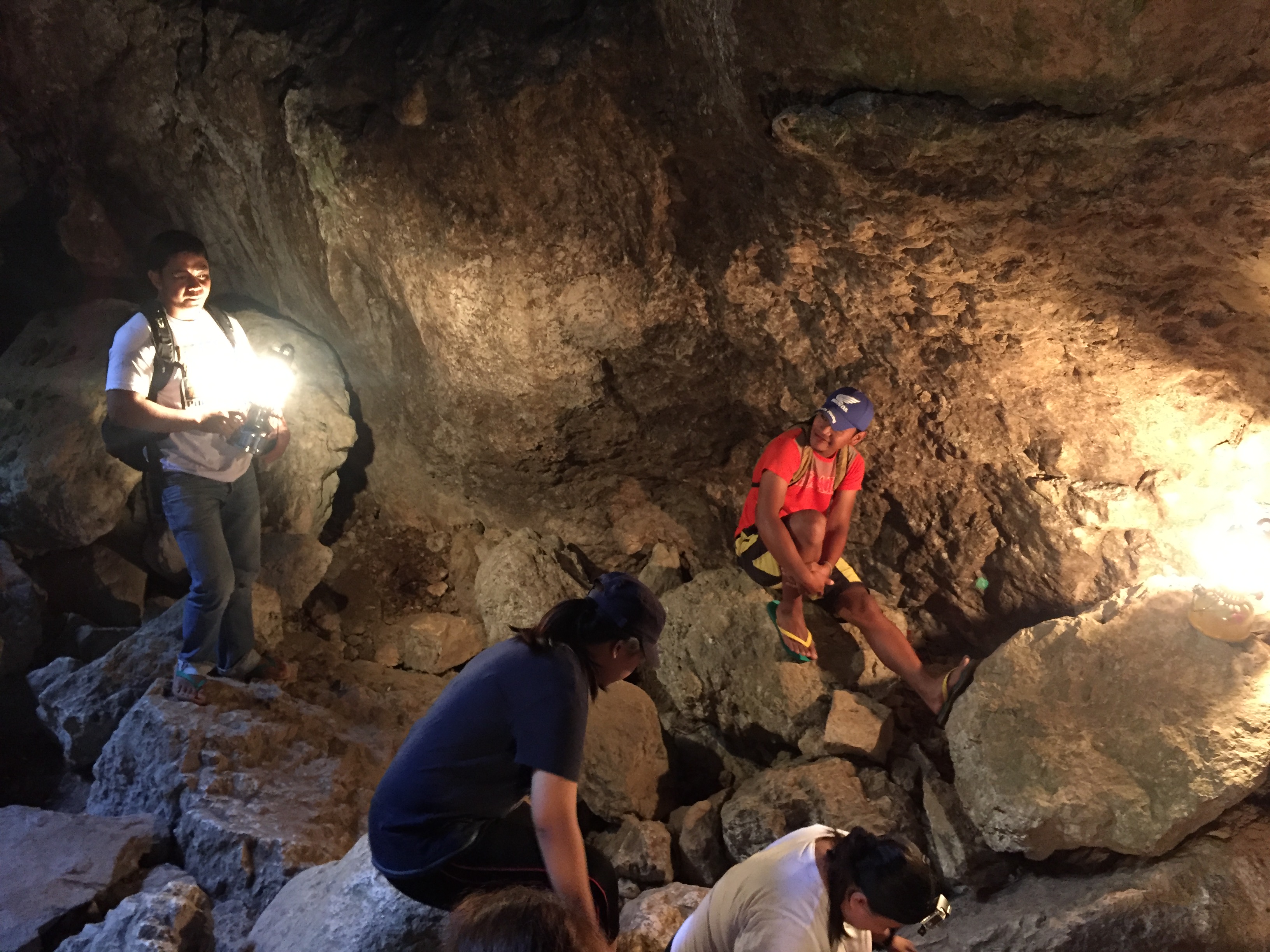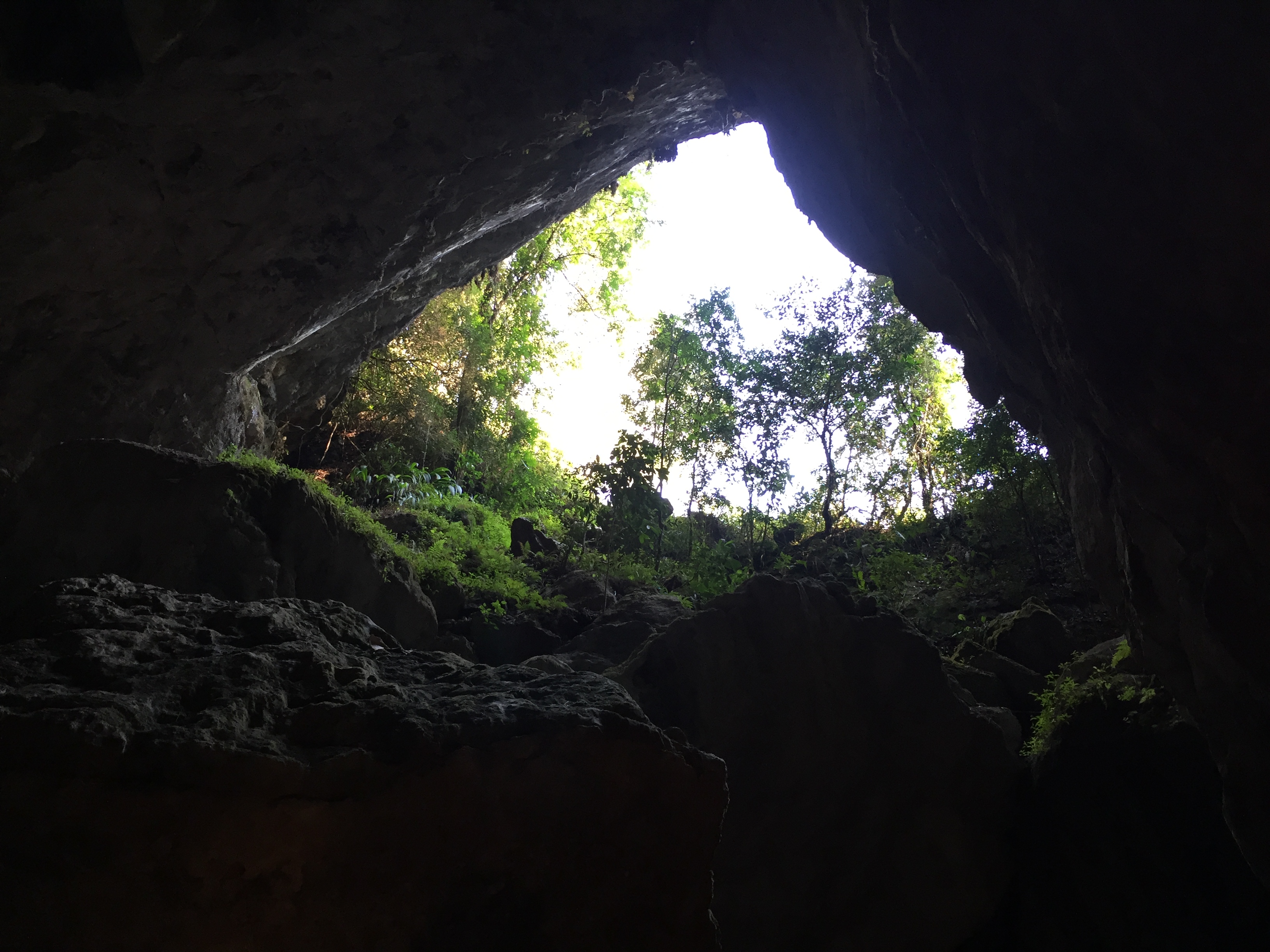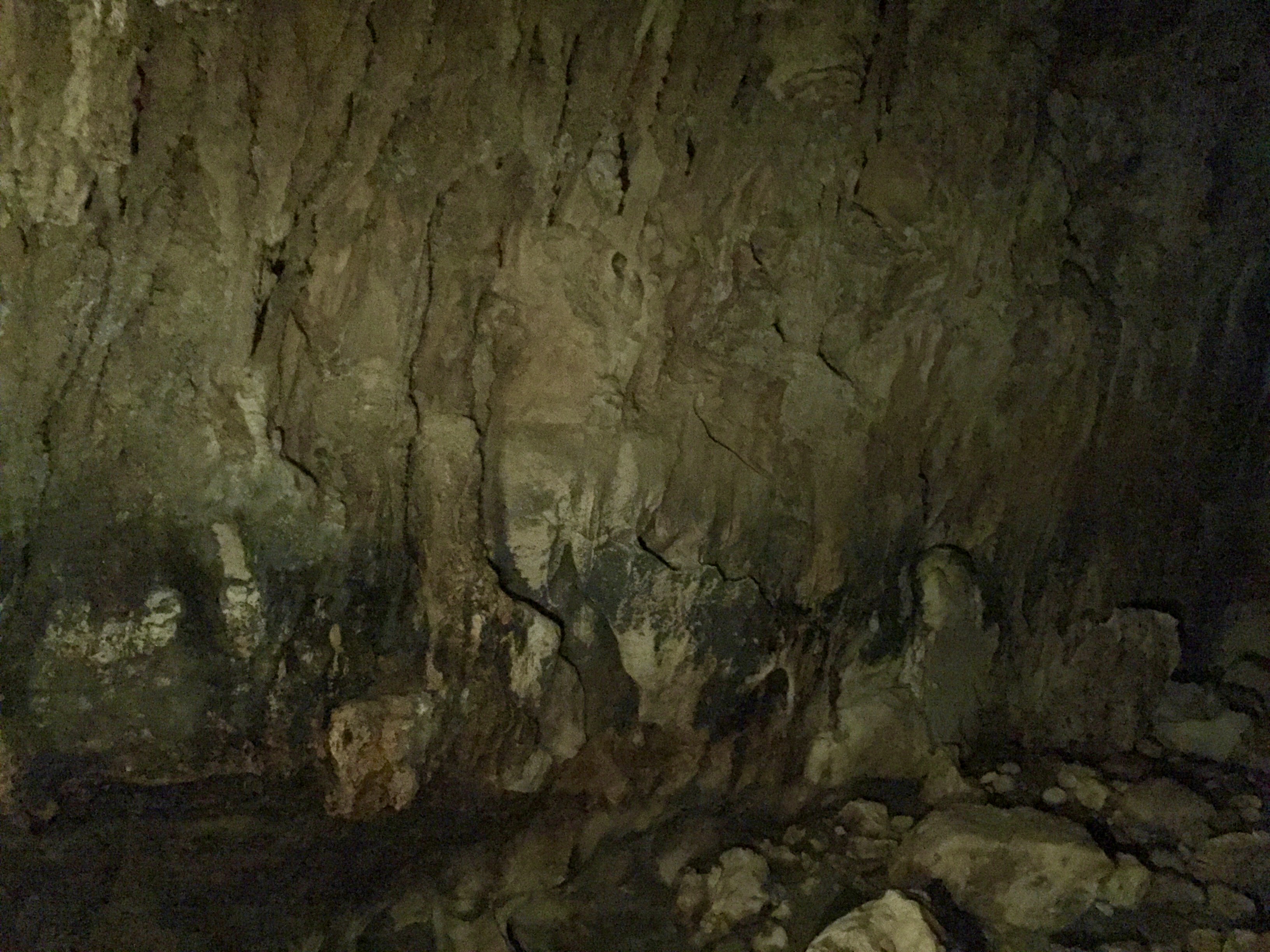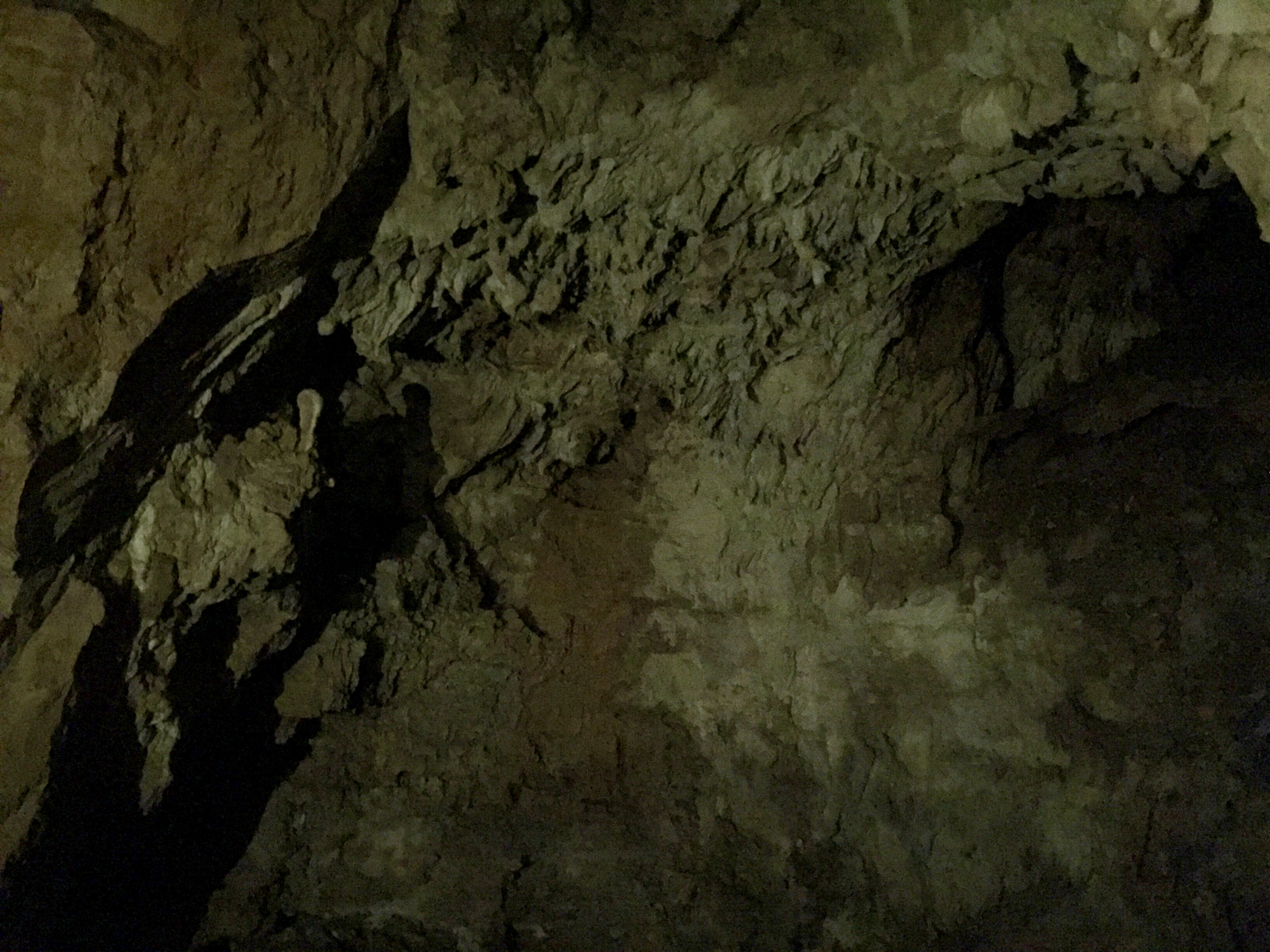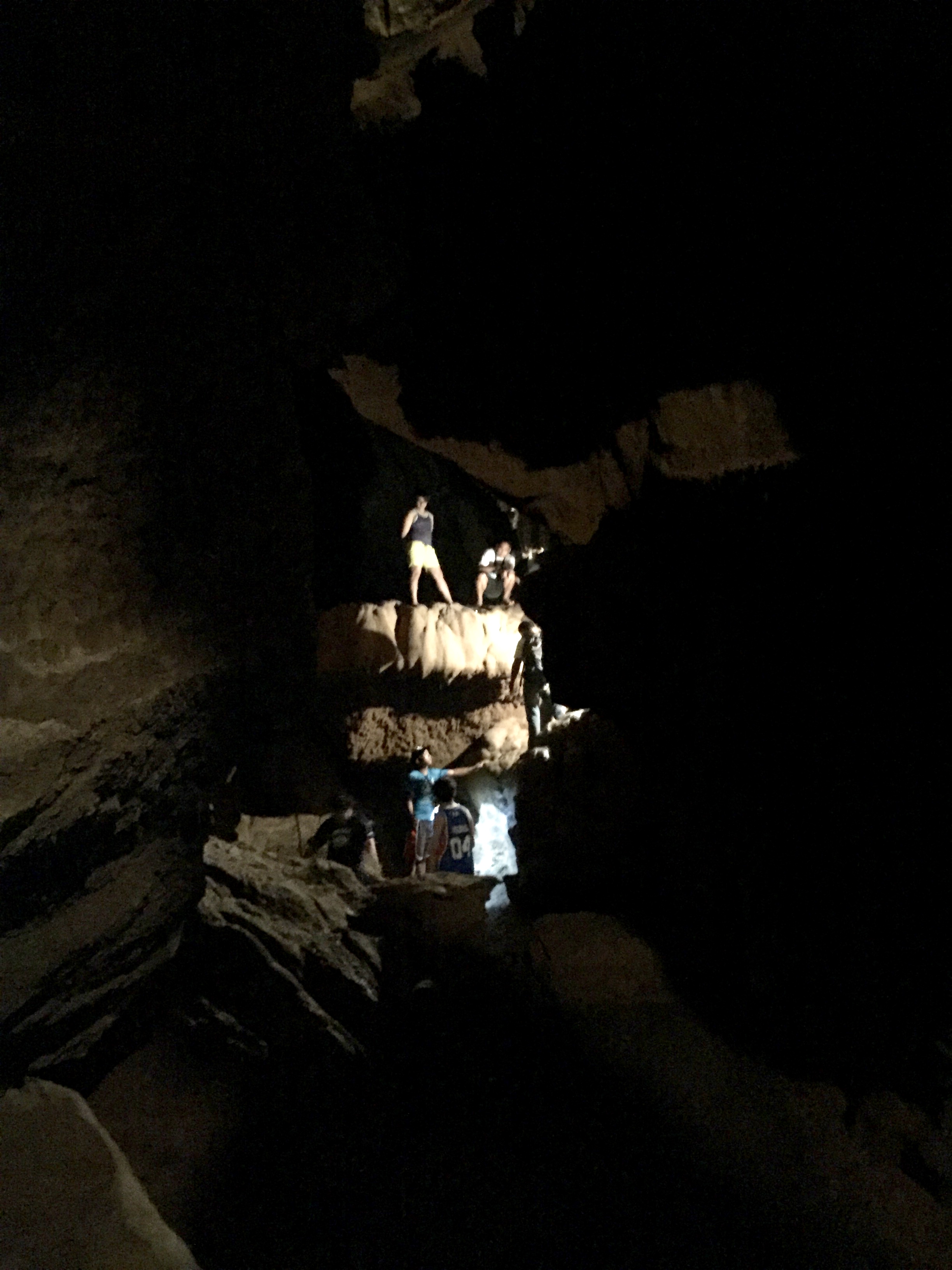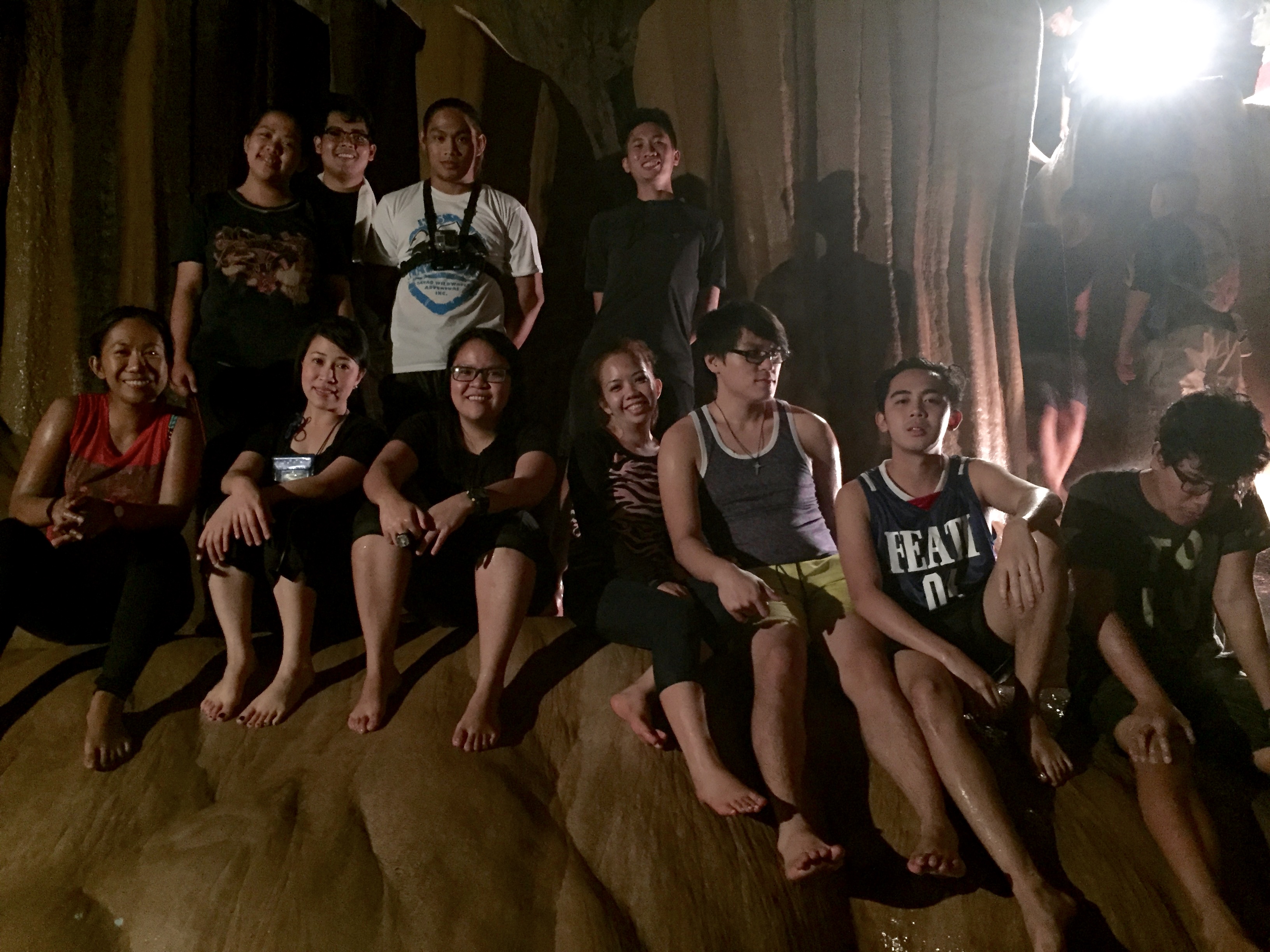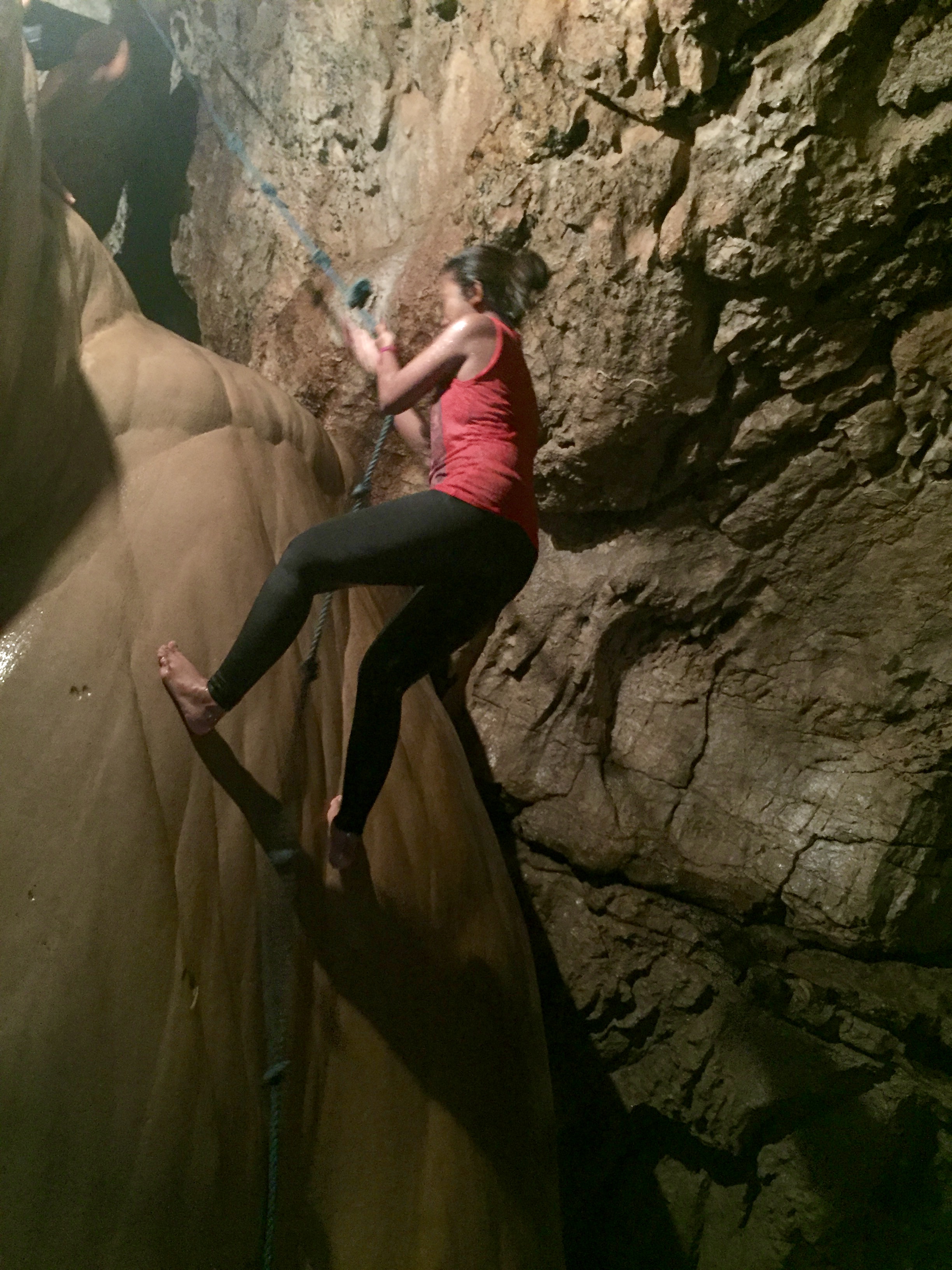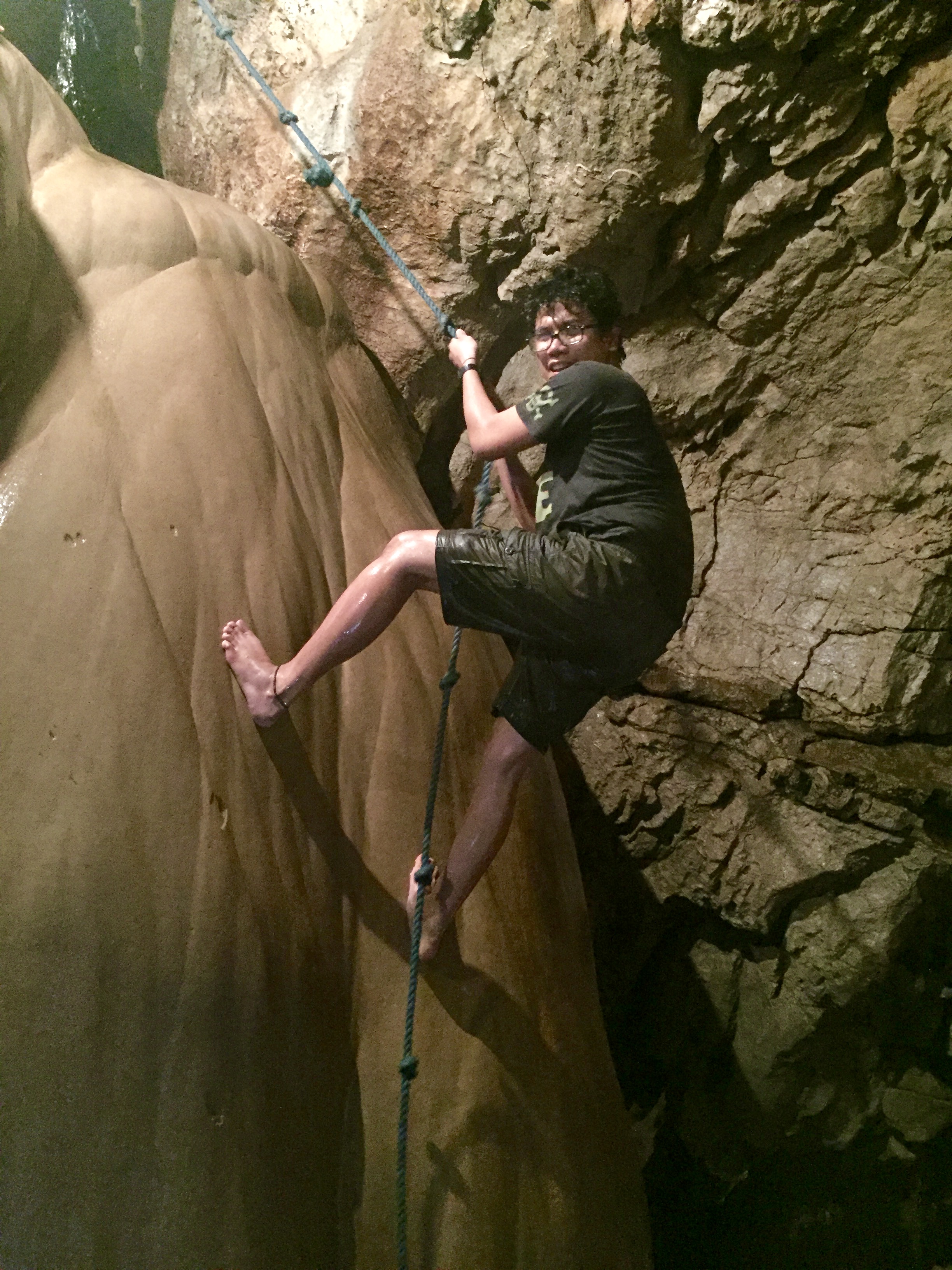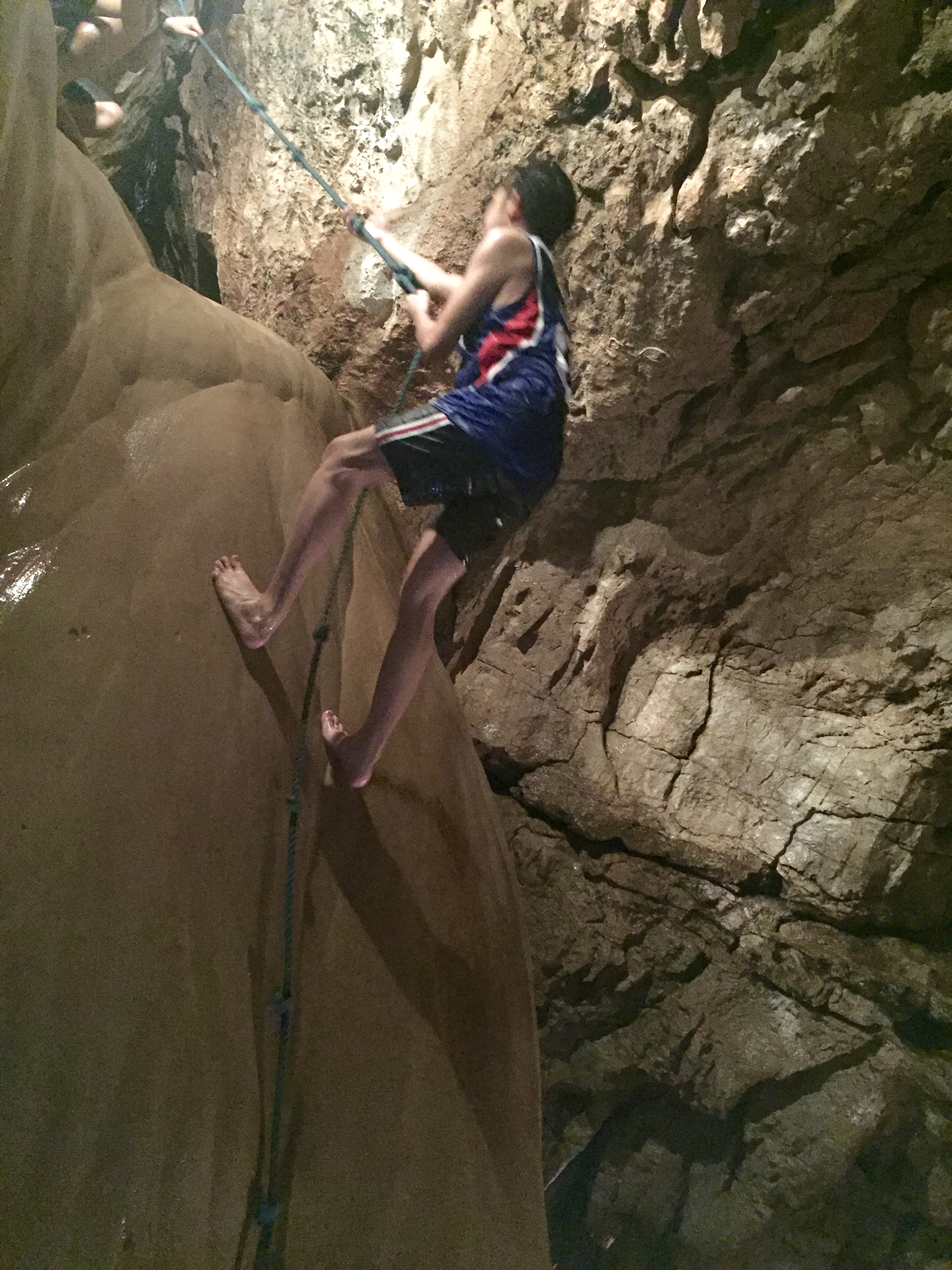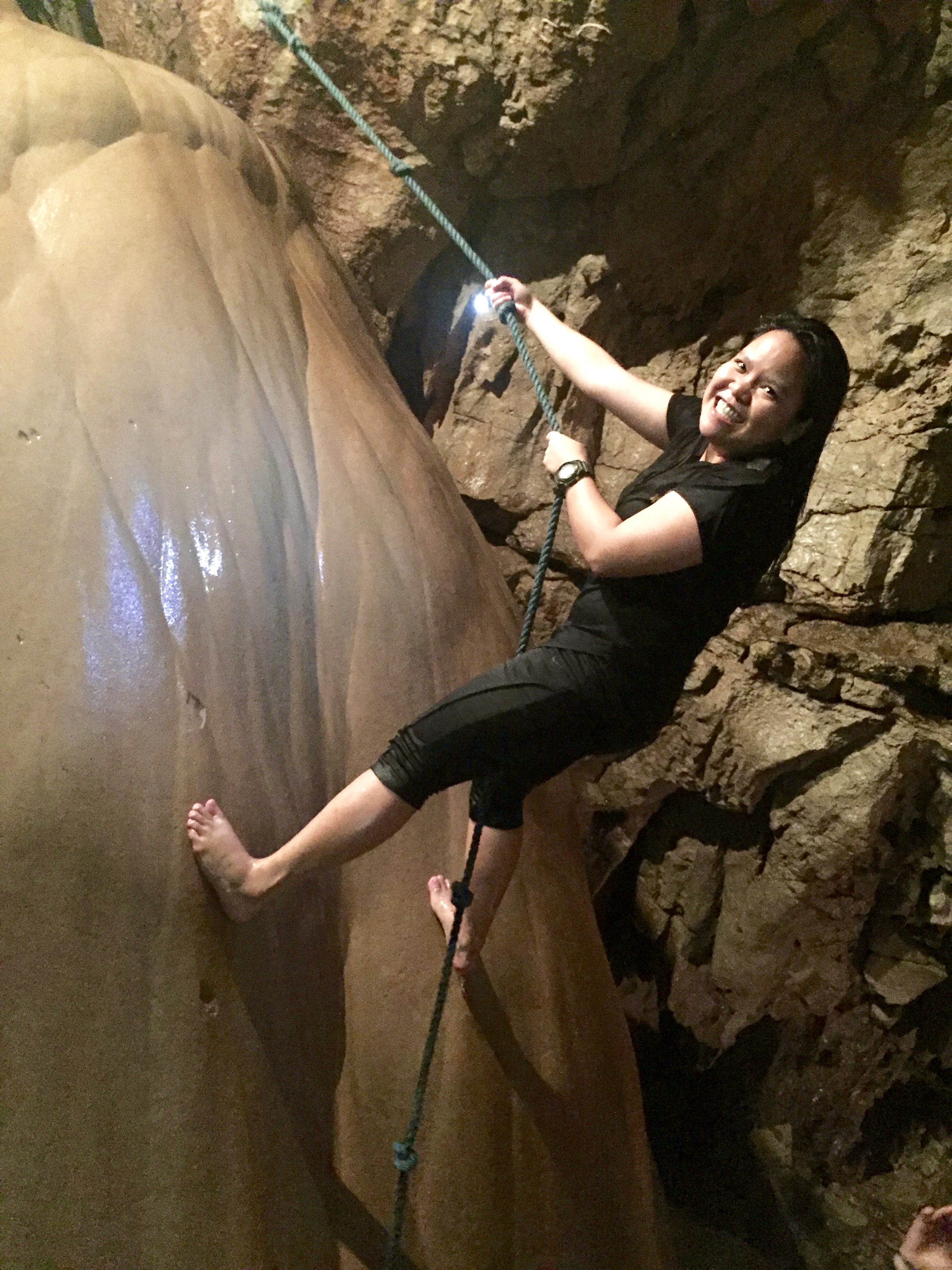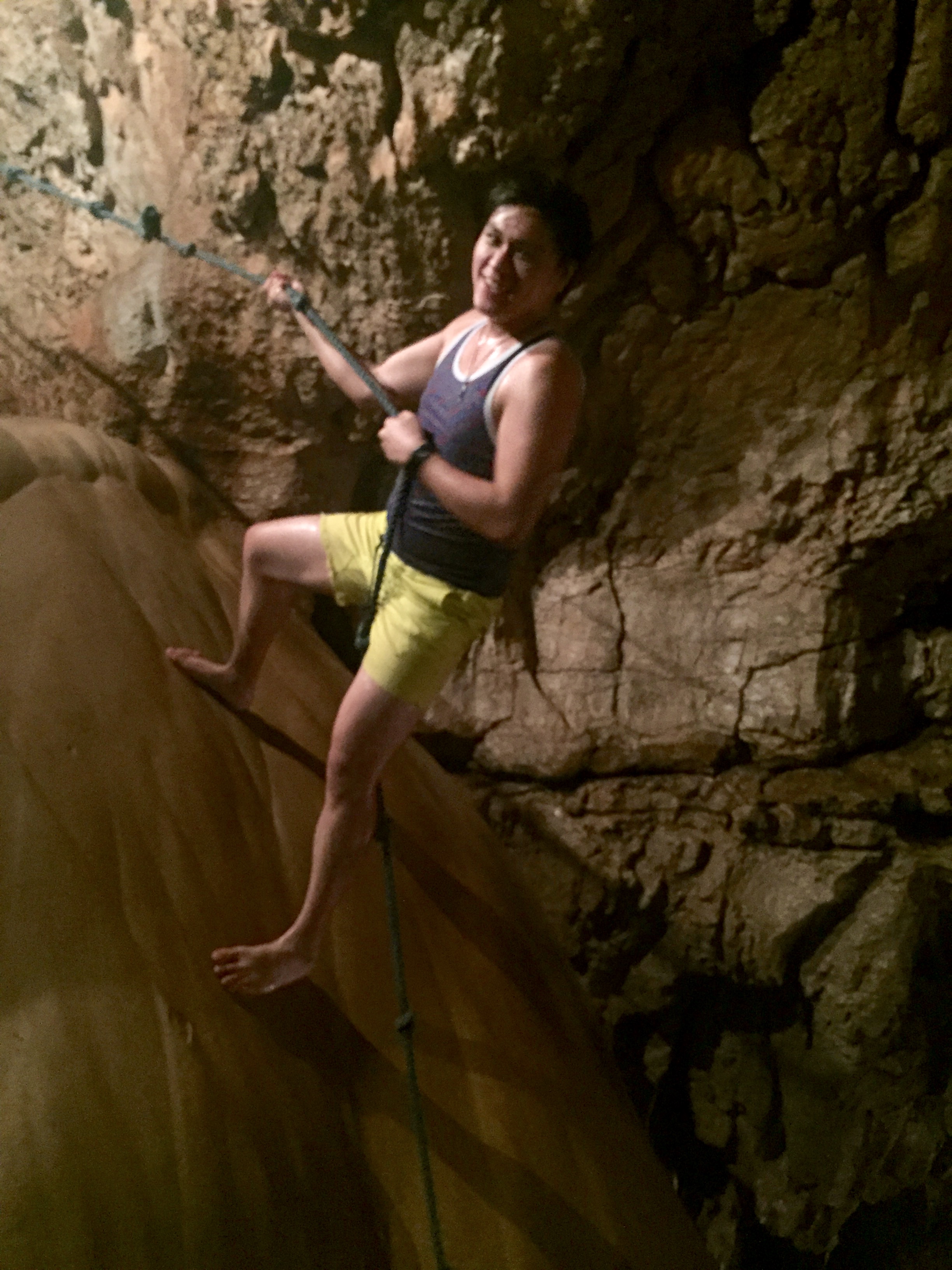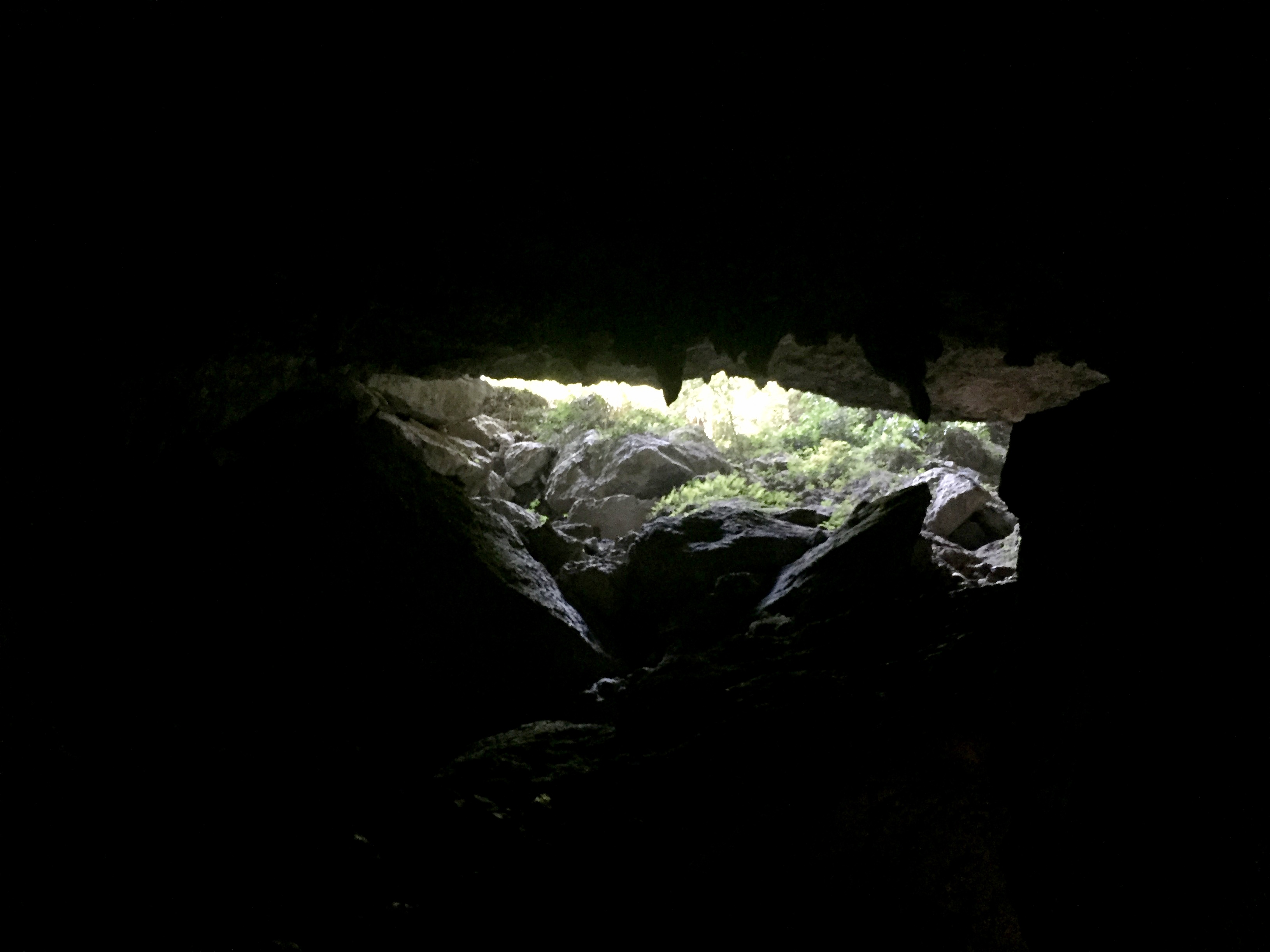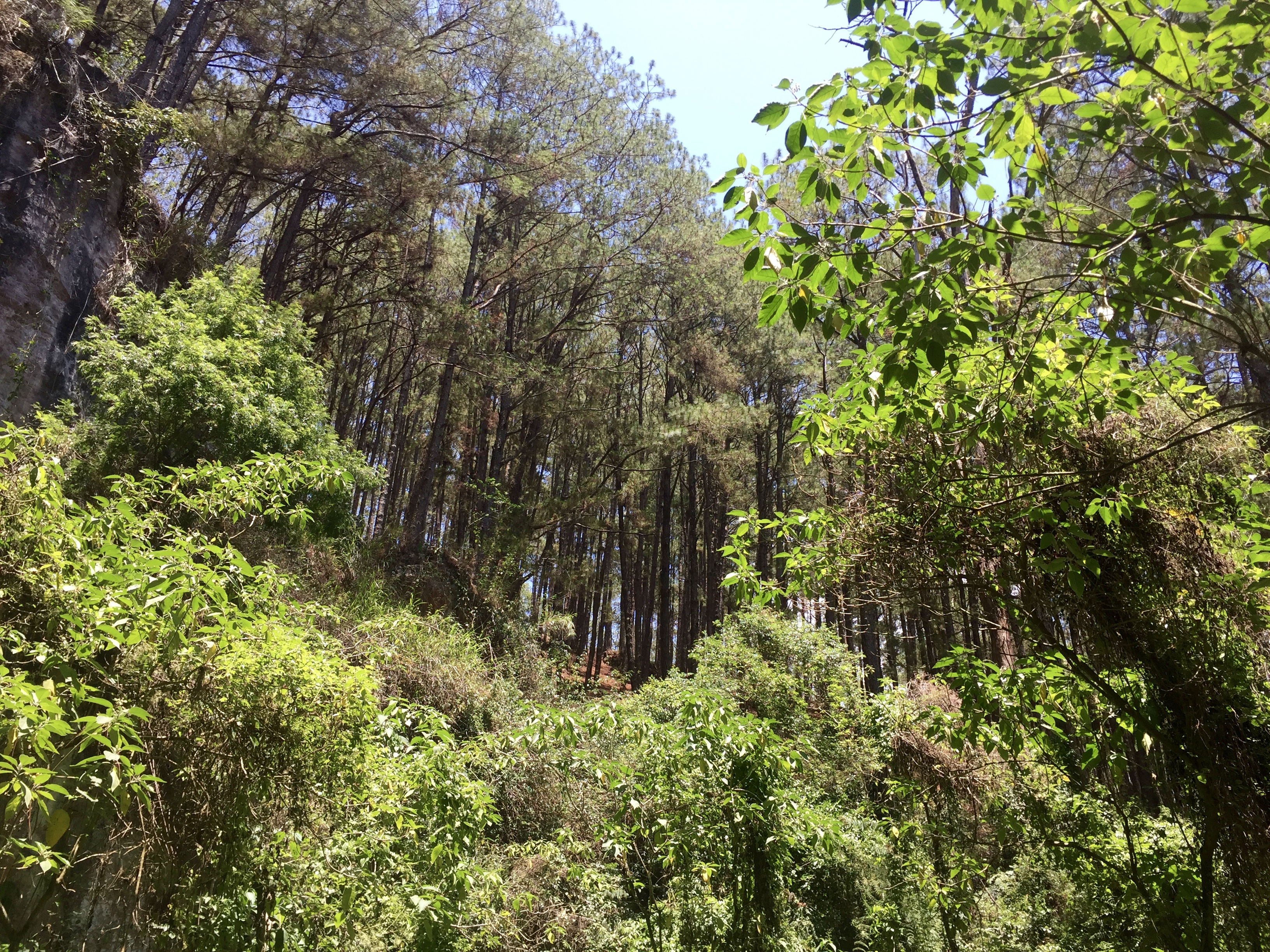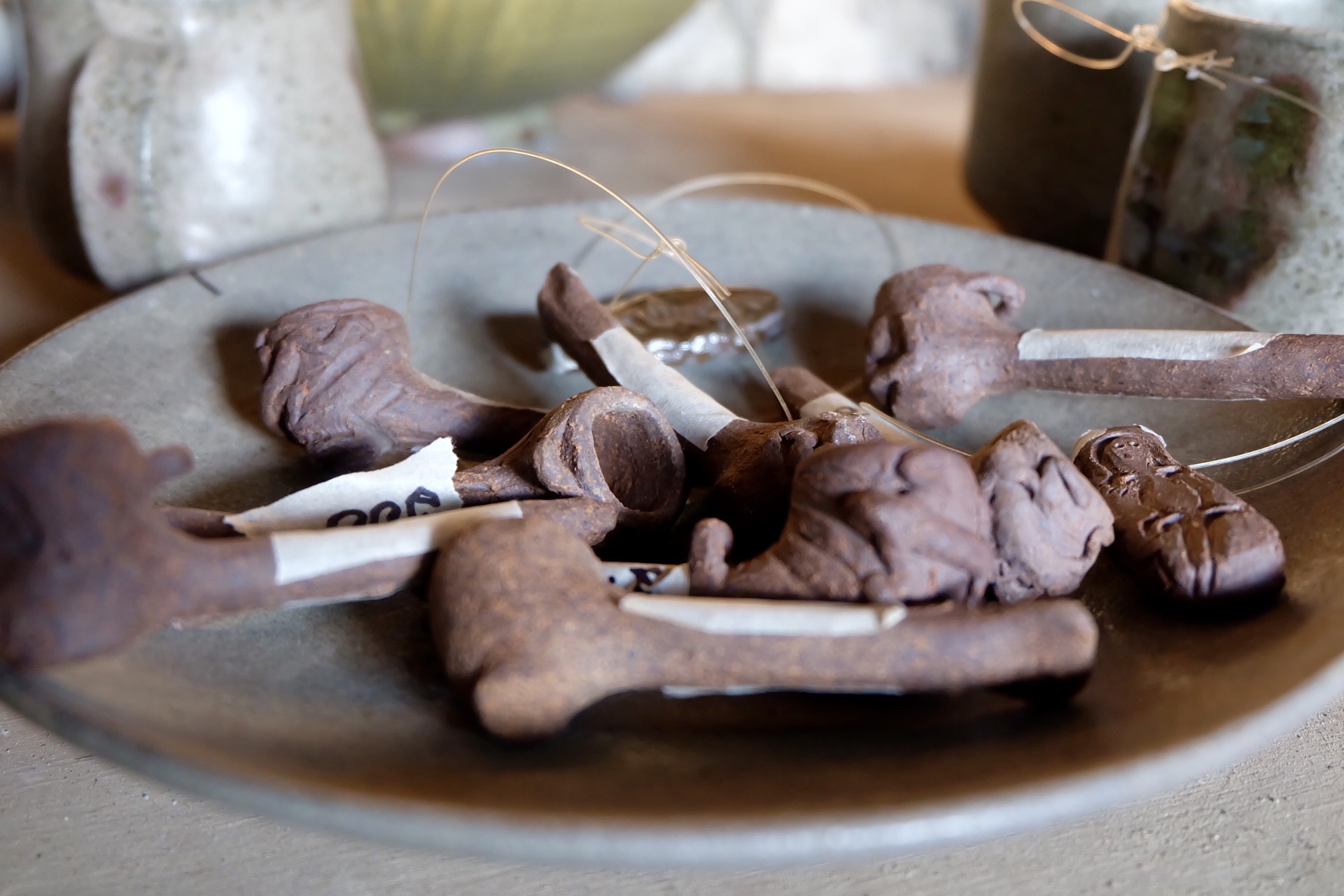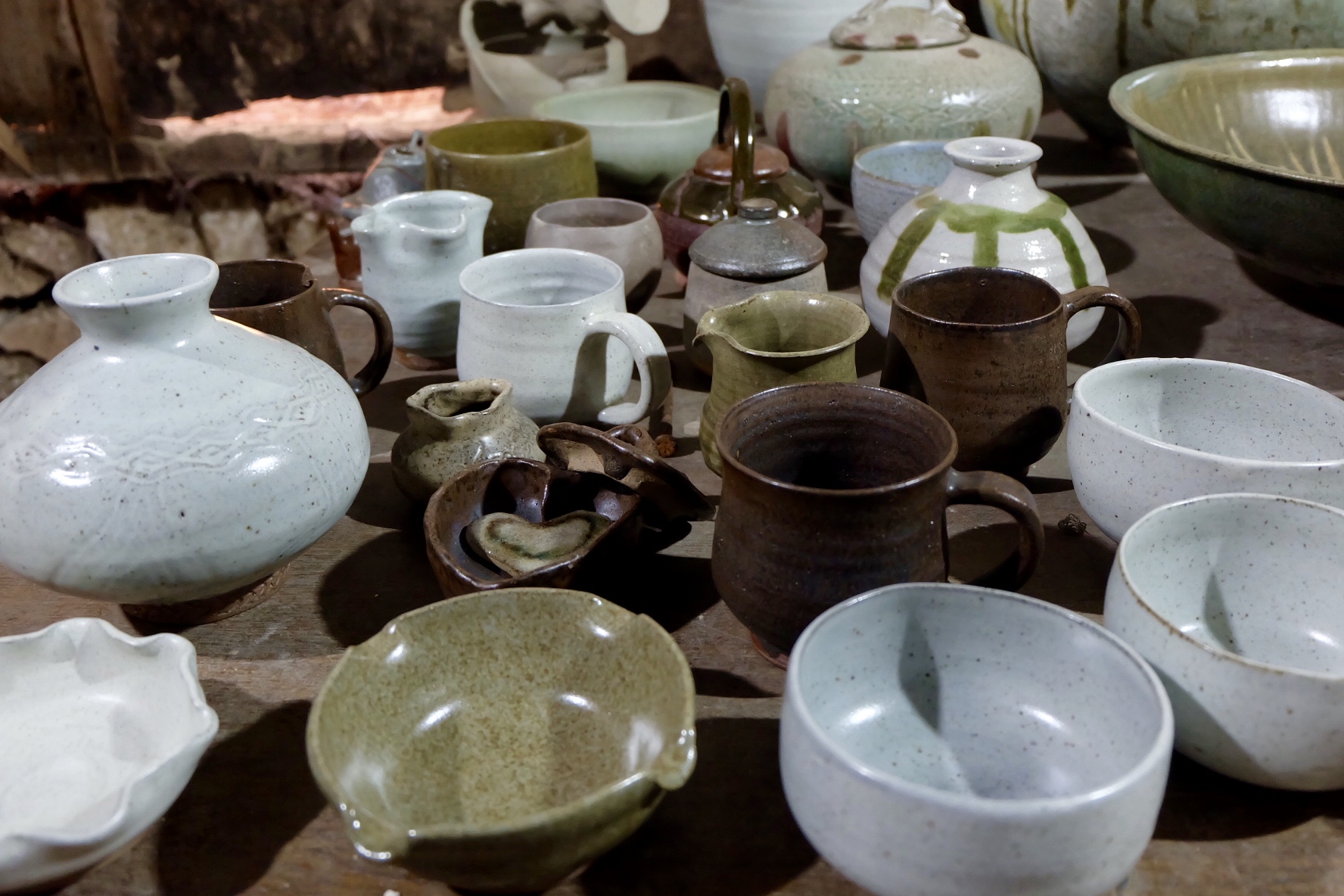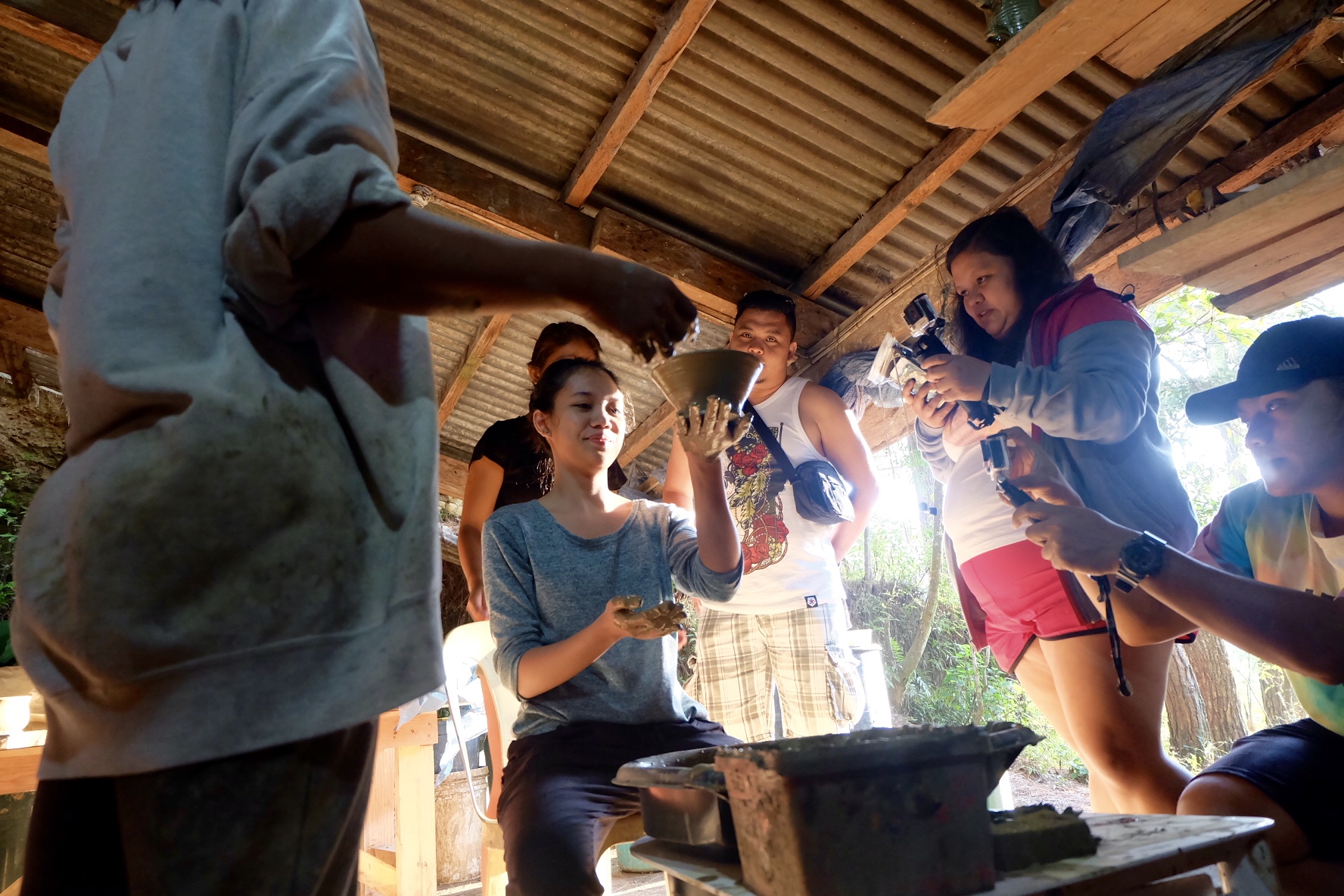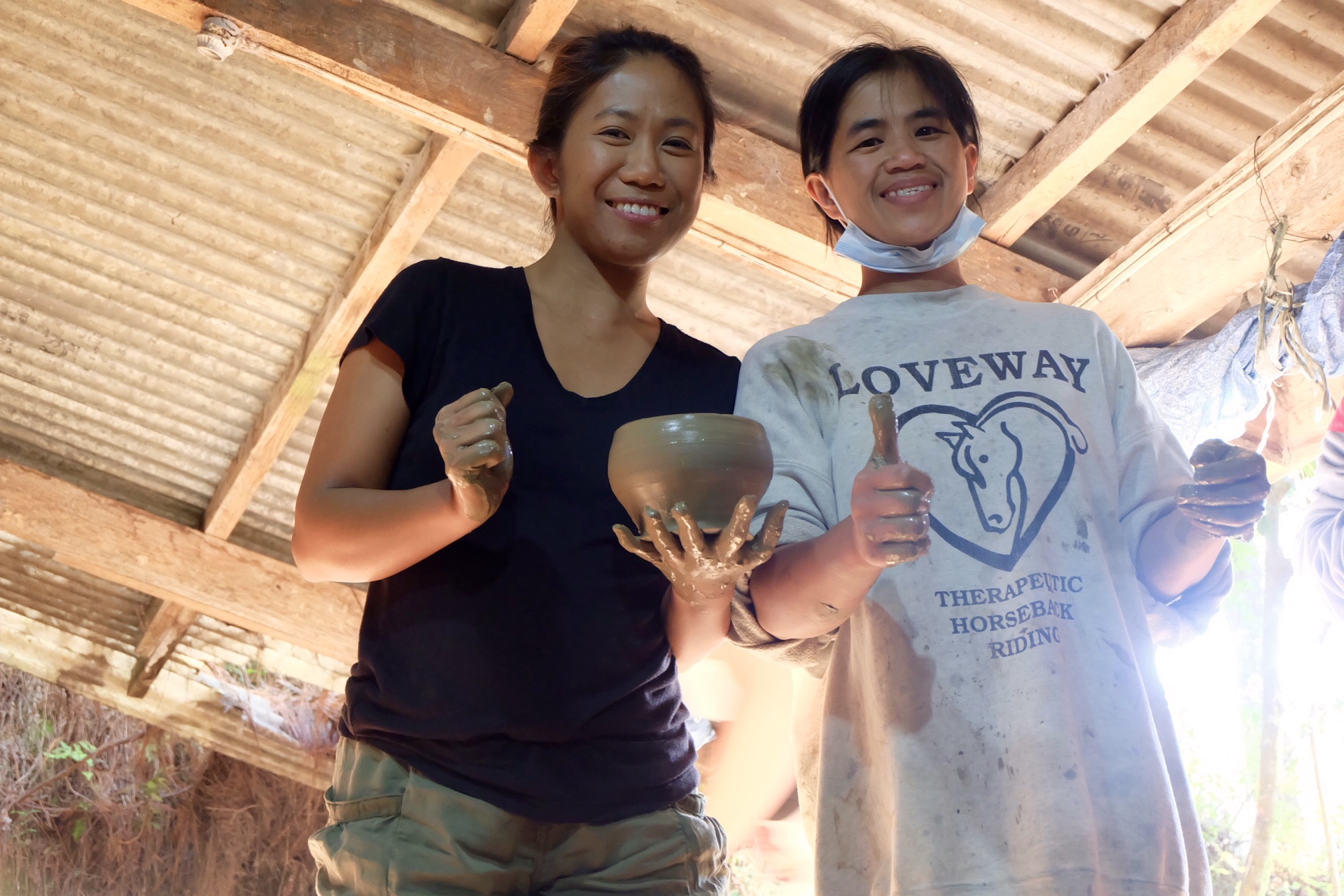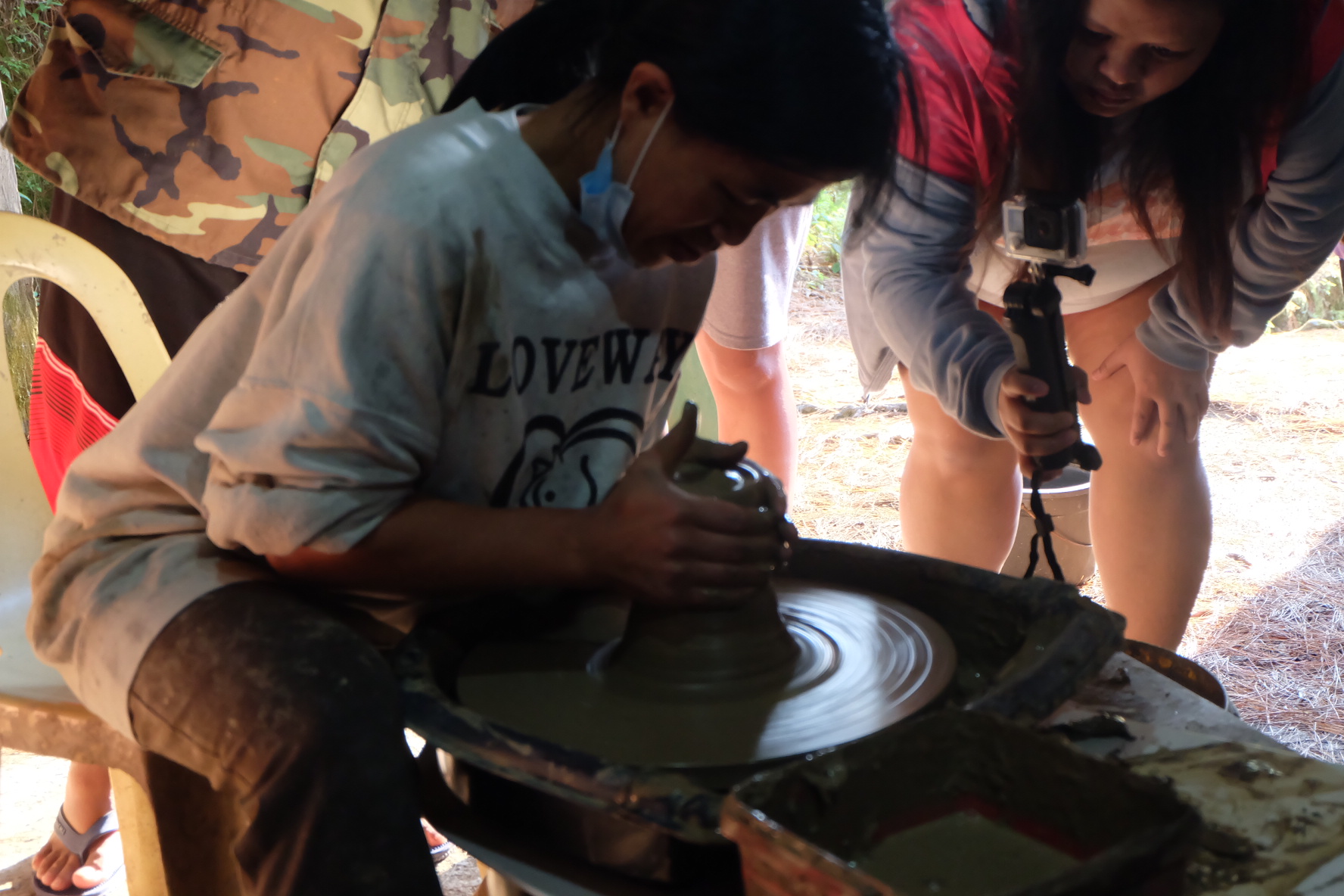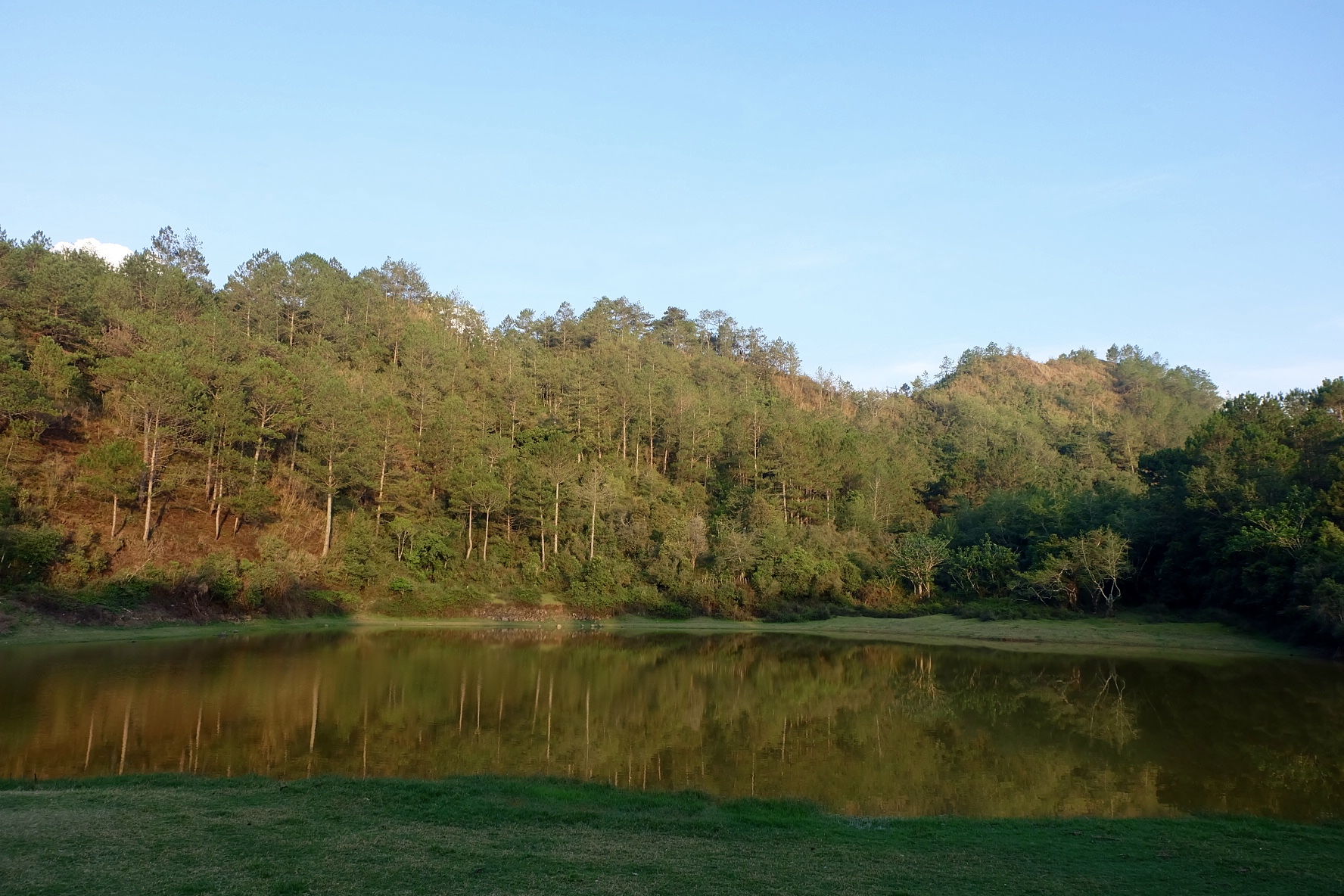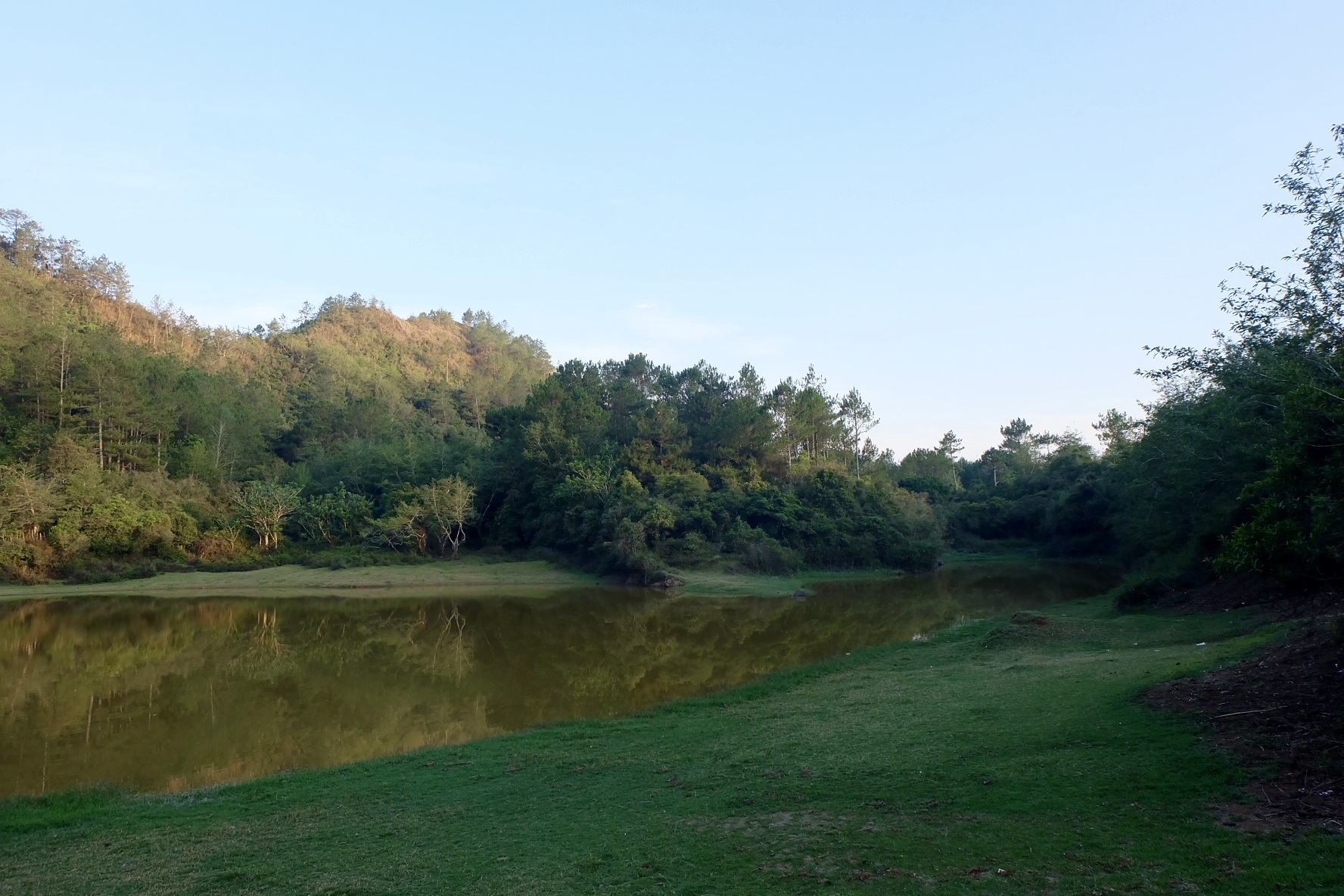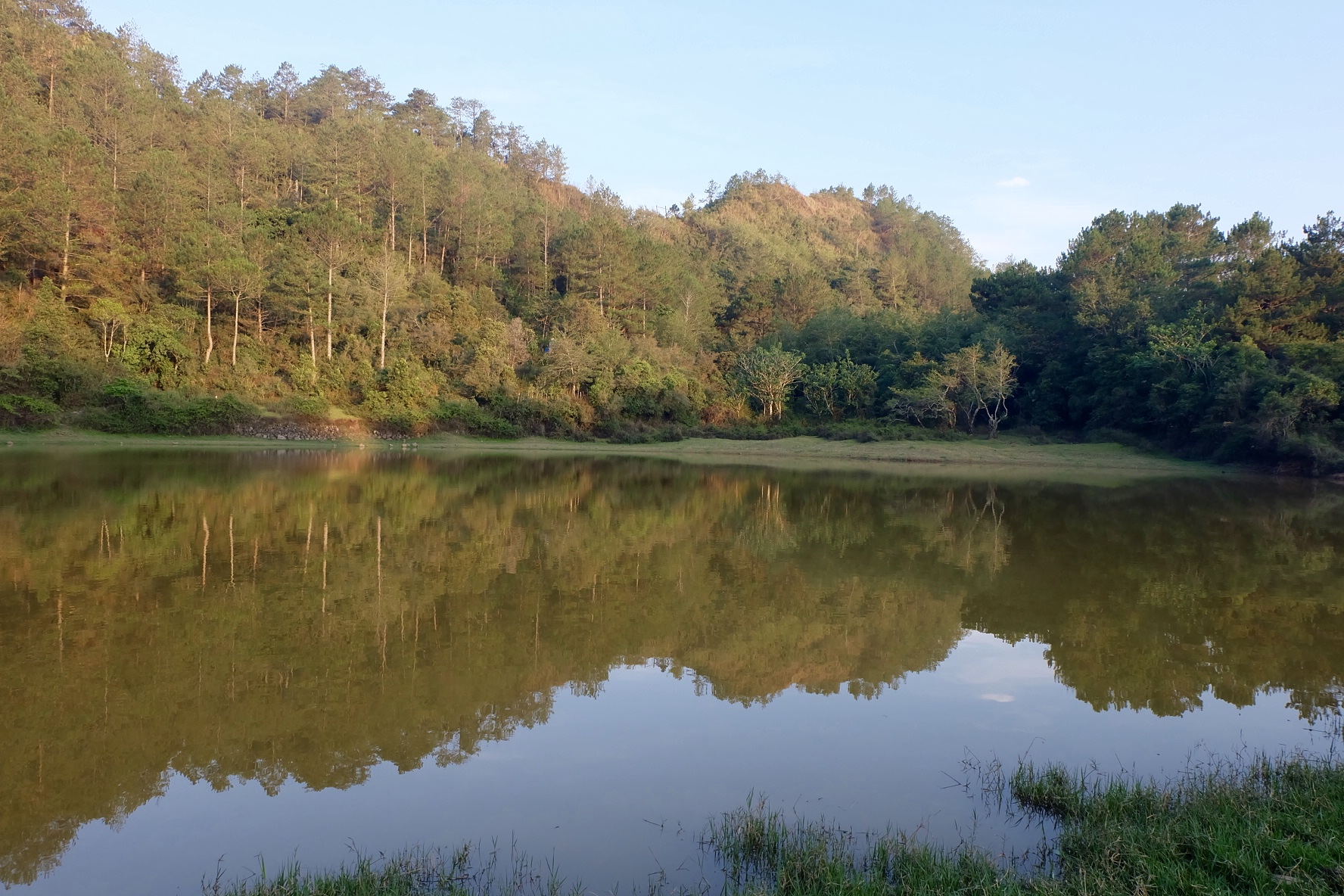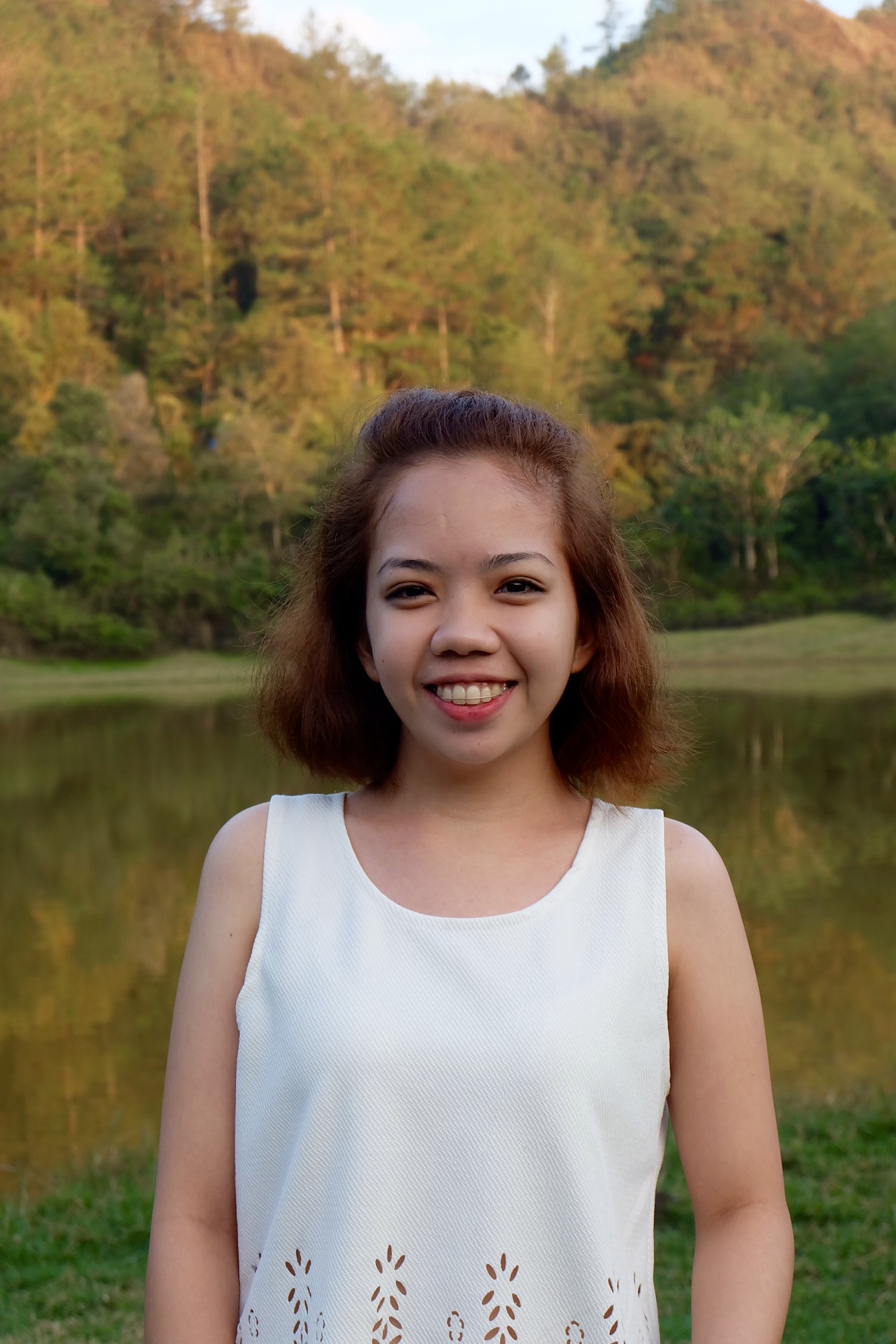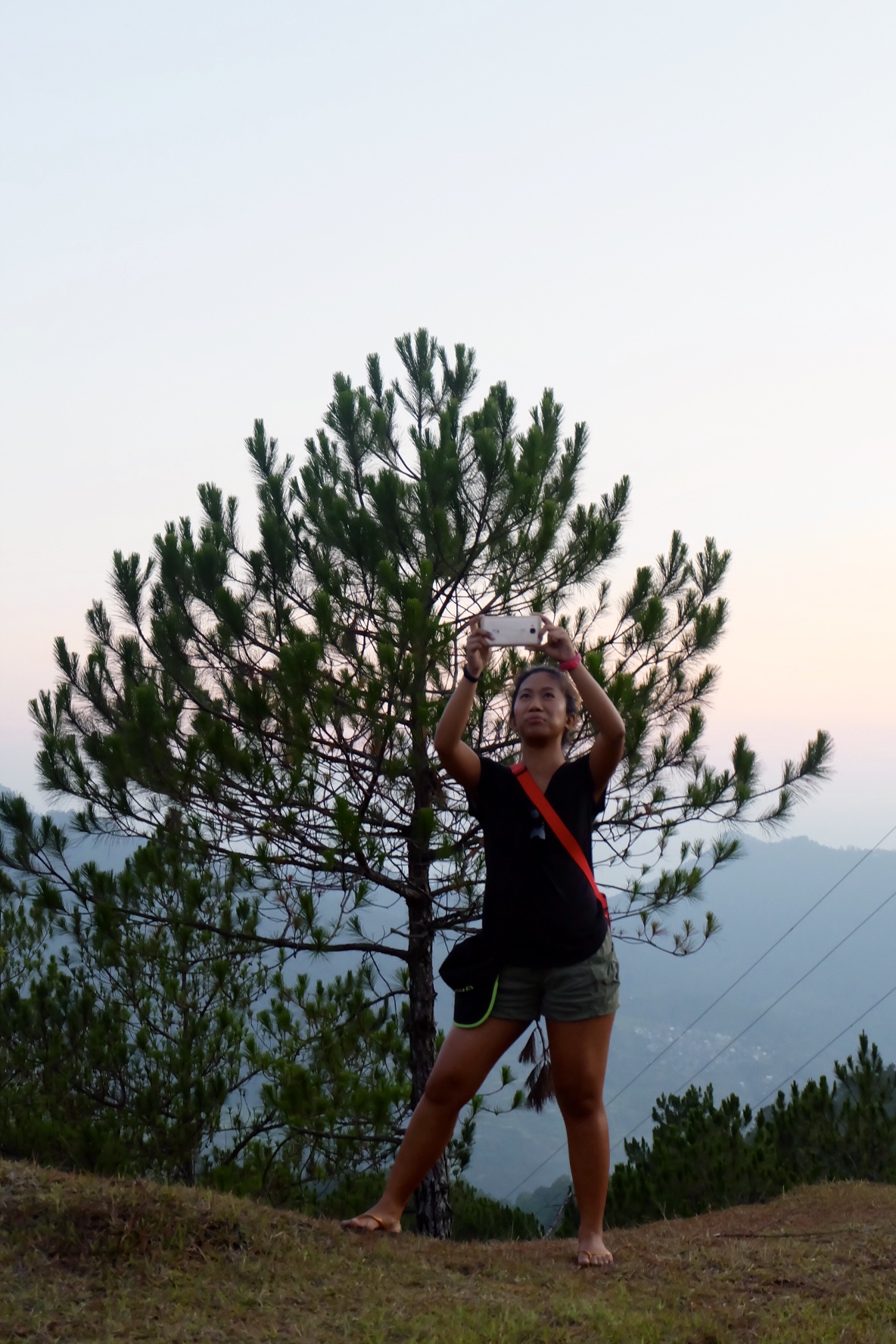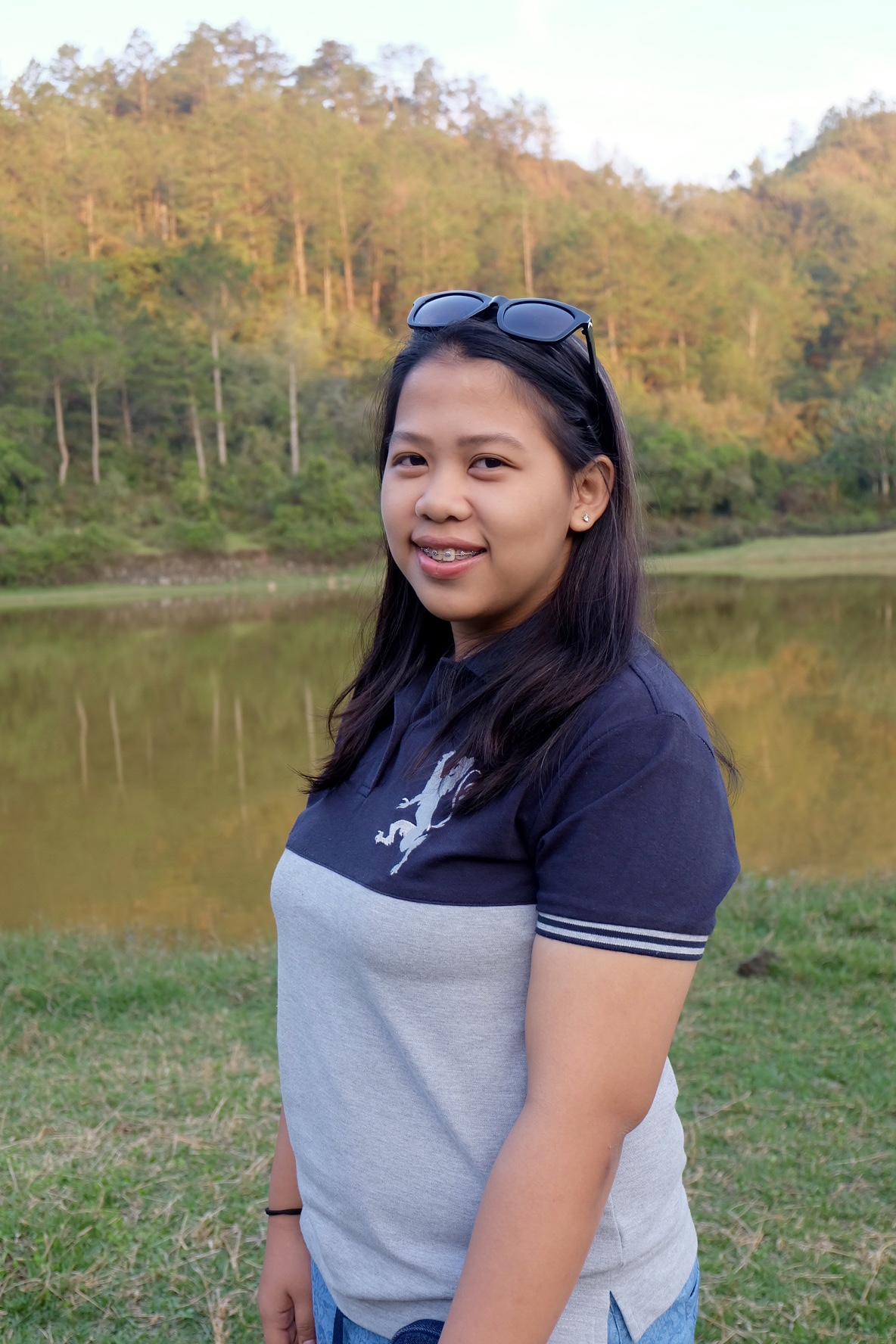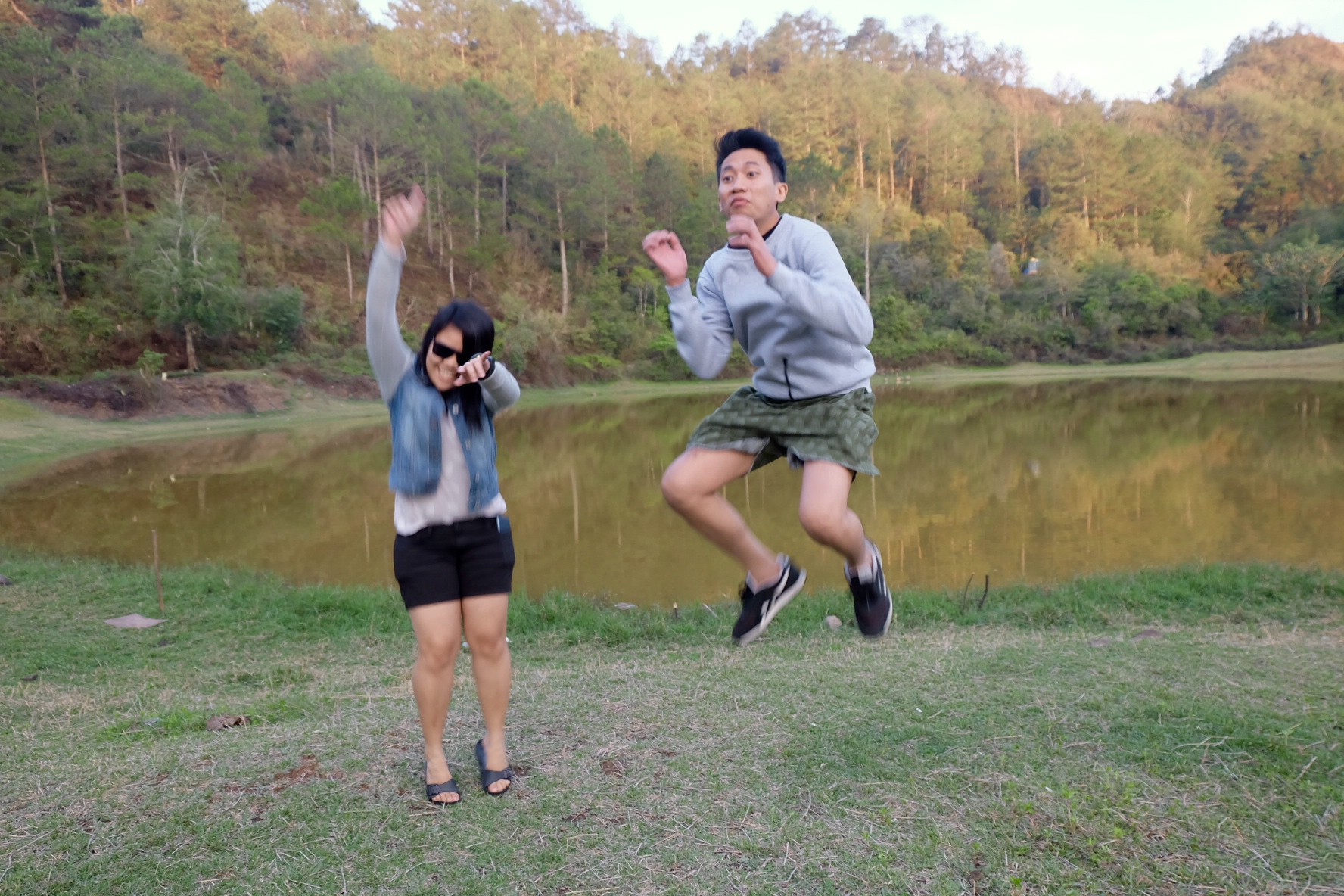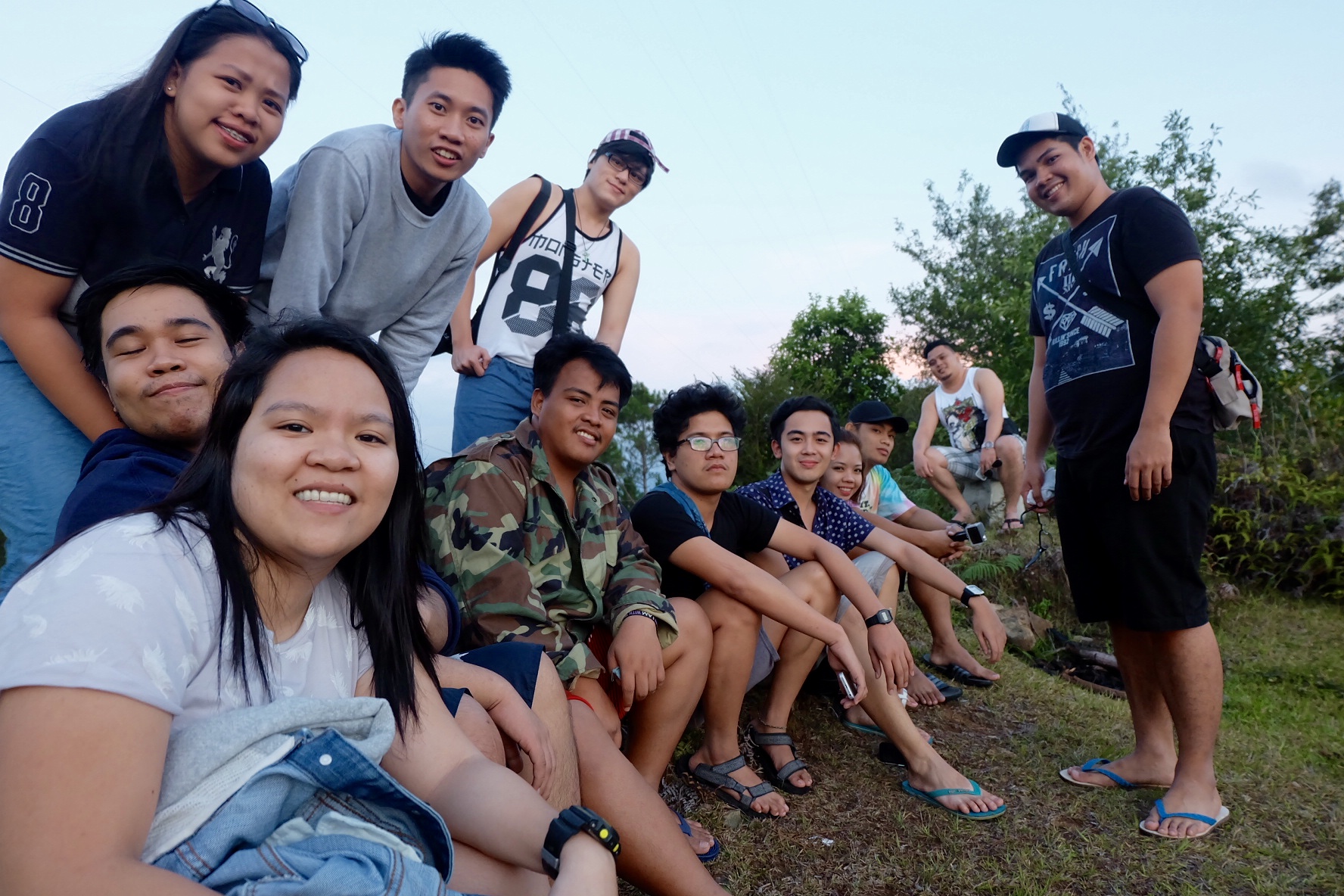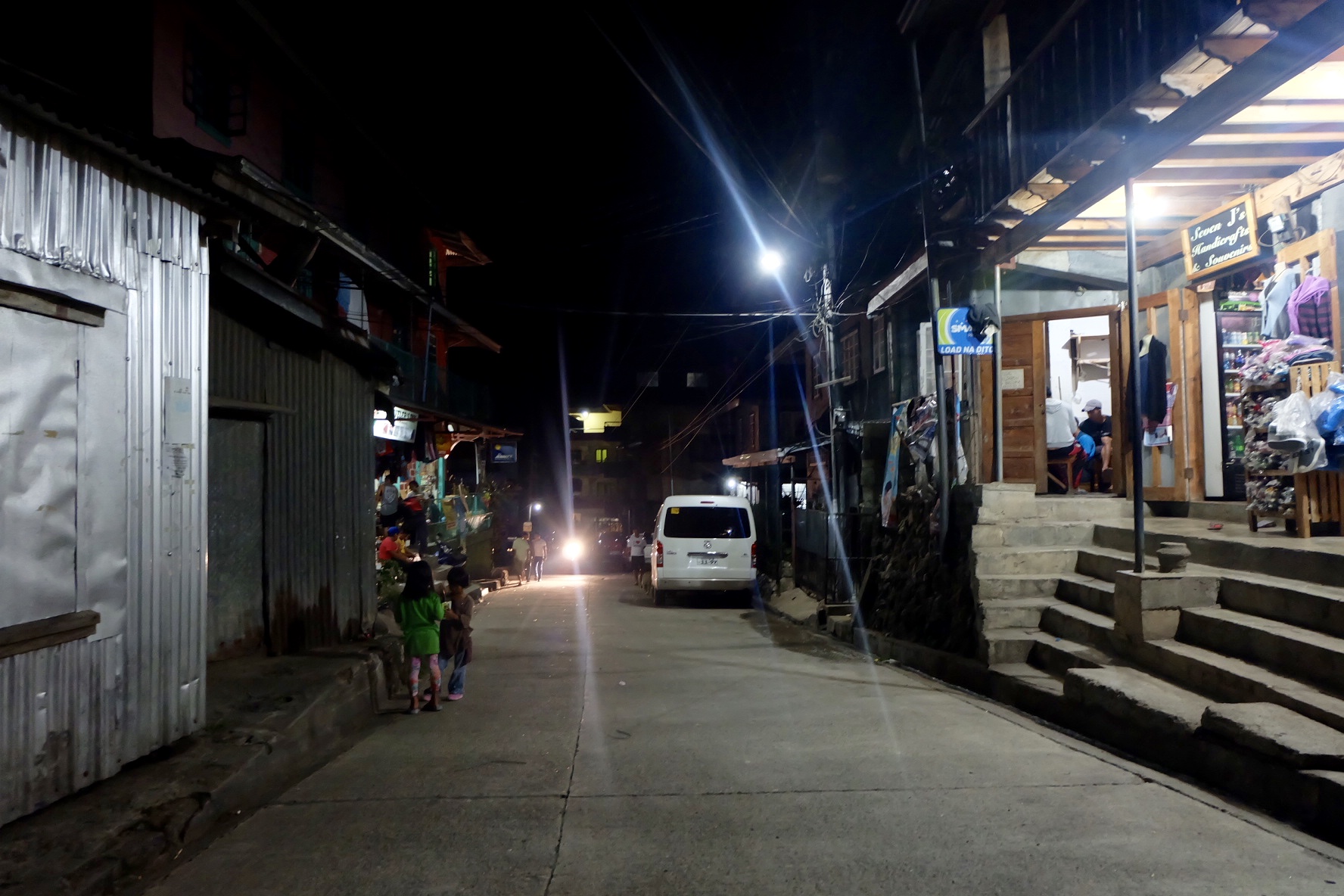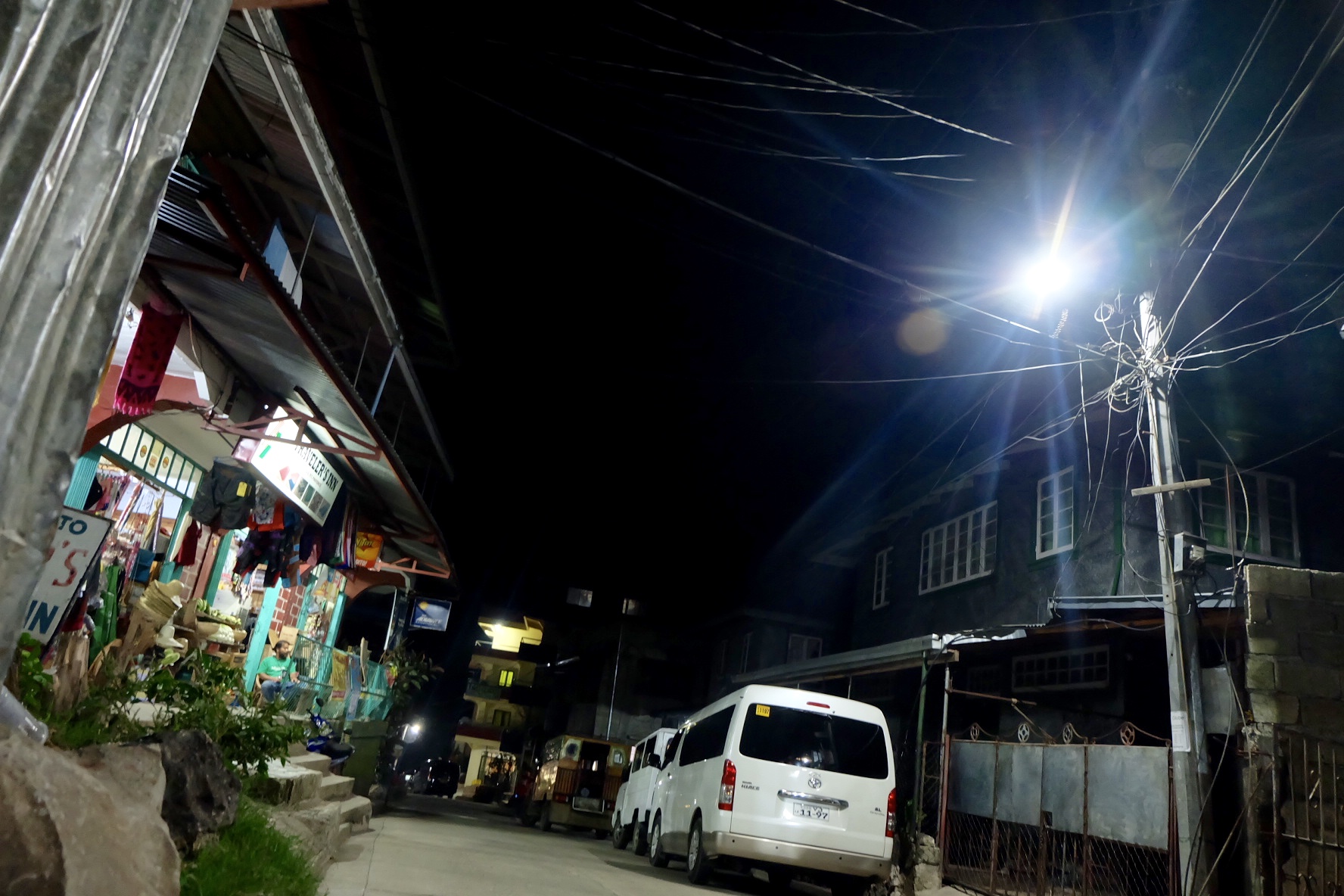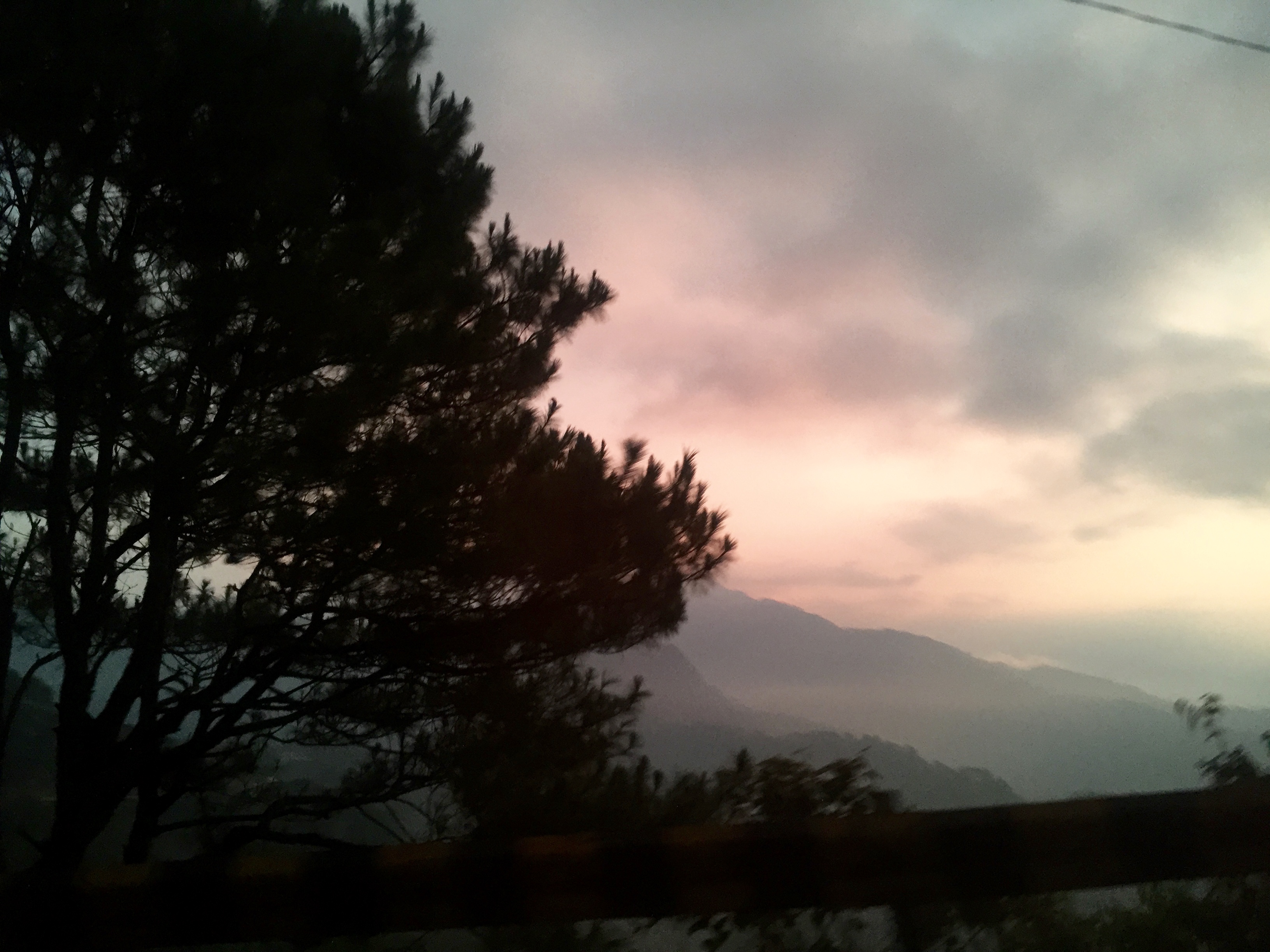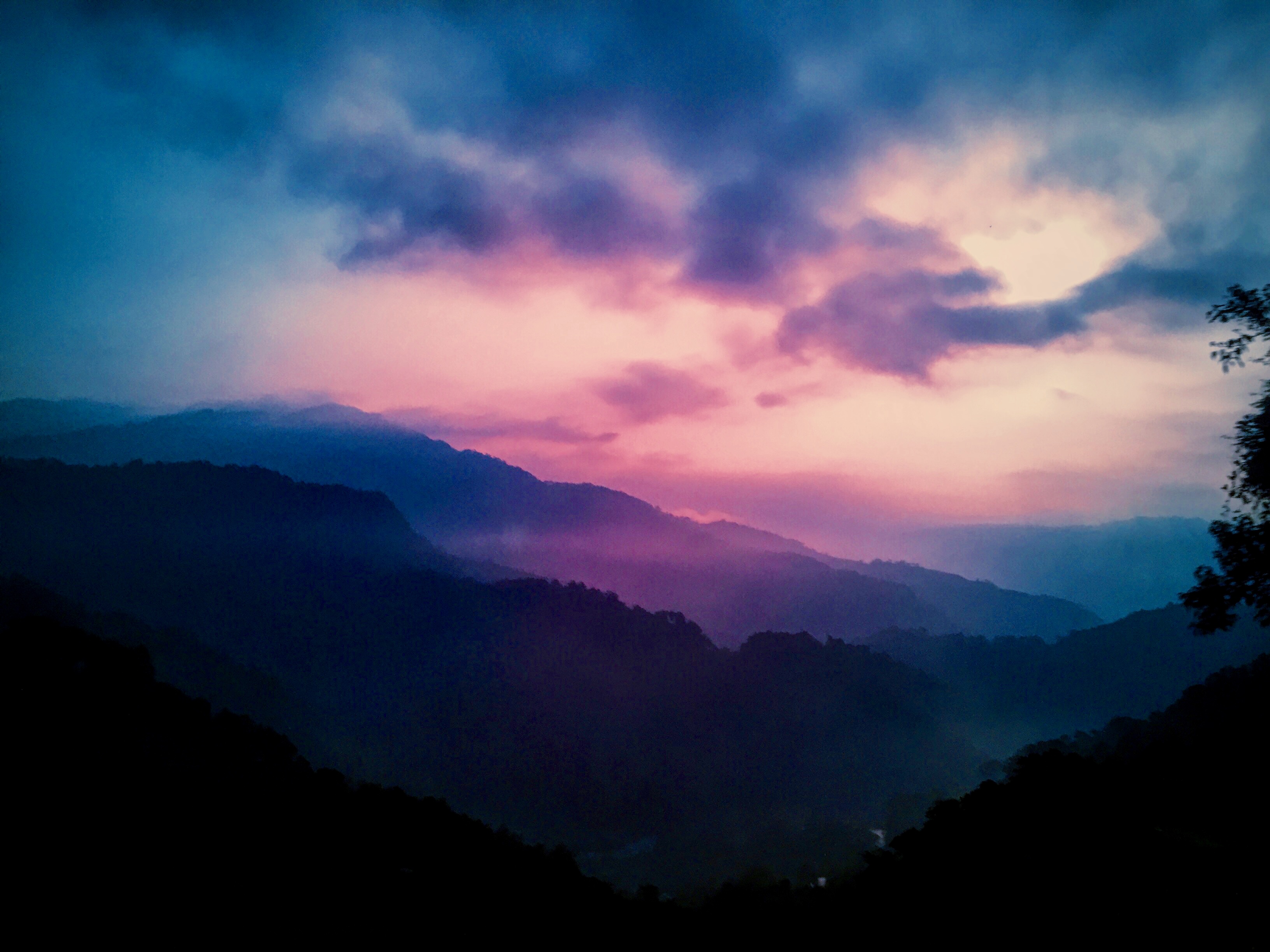One thing I should be thankful this year is that I was able to travel to another place I’ve been wanting to visit all my life— Banaue and Sagada! I felt really blessed that after all these years, I finally made it up there! As a kid, I only used to see this in the posters shown to us in class. I couldn’t contain the happiness I felt all through out the trip, so I blogged about it, and so, yeah, read on!
We left Manila at 9:30 pm last April 26, 2016. Around 7:30 am the next day, the group reached Banaue, Mountain Province. The temperature was about 17°C when we arrived there. Everyone was prepared for the nippy weather and were properly dressed for the tour. We took some group pictures and proceeded to the Halfway Lodge to have breakfast. Everyone was impressed on the view they are seeing because they are having breakfast with the view of the Banaue Rice Terraces. As individuals who are in the architectural profession, we were discussing over breakfast how impressive the view is and how the method of construction could have possibly took place.
After having breakfast, the group proceeded to the Dyannara View Point to see the Banaue Rice Terraces up close. The magnificent Banaue Rice Terraces or “Payyό” as it is locally called, remains an architectural wonder and a true testament of creativity and hard work among our indigenous Ifugao people. Its wonder includes the mode of construction and irrigation systems used for it was built for almost 2,000 years ago to which advanced building systems of construction were non-existent. The Rice Terraces is also a part of the World Heritage List of the UNESCO. A local Igorot greeted us by the name of “Pannagan” a.k.a. Charlie who is a resident in the area came out of his small hut and conversed with the group. He told stories about the way of life of the Igorots. He taught the students the art of how the Igorot people dress up and expressed its symbolism to their culture.
Around 8:30 am, we left Banaue and took another 4-hour drive to Sagada. We proceeded to the Rusty Nail Inn where we had our lunch as we were advised by the tour guide that food in Sagada is prepared and served very slow. Around 1:00 pm, we reached the Hidden Hill for our accommodation. The group rested for an hour before going back on the road for the Sagada local tour.
- Gerard taught how to dress up- Igorot Style!
- Perfect Lighting
- Mang Charlie, a.k.a Pannagan
- Can’t get enough of this magnificent view
- Can’t get enough of this magnificent view
- Can’t get enough of this magnificent view
- Can’t get enough of this magnificent view
- Can’t get enough of this magnificent view
- Can’t get enough of this magnificent view
- Can’t get enough of this magnificent view
- Picture perfect
- Groupie!
- Squad goals
- Gerard and Arch. Harold
- Arch. Nina, Pen and Gerard
- Selfie with Mang Charlie
- Sun-kissed moment
- Arch. Nina with mang Charlie-again
At 2:00 pm, we had the Sagada local tour wherein our first stop was at the Sagada Weaving. We were told that the Sagada Weaving has been producing several quality products such as slippers, bags, and other souvenir items since 1968. The intricacy of the weaving process made it much more interesting to the students as the workers began to create colorful fabrics at the work hall. The process was difficult to understand at first but we were able to get the hang of it after seeing how the ladies worked on each fabric. We were able to relate the process of weaving to architecture through the patterns and shapes that were created during the weaving session.
A few meters away from the Sagada Weaving is the St. Mary the Virgin Episcopal Church, a known landmark at the center of the town. Sagada is known to be the only town in the Philippines who’s majority of its religion is Protestant because it was not colonized by the Spaniards during the Spanish Colonization Era. Before the foundation of the Church, the Sagadan people were believed to be animists, to which they believe that all plants, animals and objects have spirits. When the church was founded, almost 95% of the people in the area were baptized. It was built by the American Missionaries in 1904 and is located at the Anglican Mission Compound. According to research, it was founded by the Reverend John Staunton who went to Sagada to spread the Christian faith in the area. The church is built with thick masonry walls with massive rose windows that allow the sunlight to enter the structure. Even with thick walls, air can still flow freely inside the church which allows cool breeze to come in. The location of the church is placed in a verdant garden setting that absolutely harmonizes with nature.
Moving on with the tour, we were brought by the tour guide to the Calvary Hill and Cemetery, the burial ground for the people of Sagada. The tour guide mentioned that people who reached old age and went through “good death” , for instance, they did not die due to murders, accidents or any form of diseases are the ones that are given the honor of having their tombs hanged at the cliffs. Sagadans who are not given such special honors are laid to rest however, at the Calvary Hill. It was also discussed to us that the burial process in Sagada is not determined by the status symbol but by the cause of death of the person. We were set to go to the Echo Valley where the Hanging Coffins were located. There, students shouted to their heart’s desire and experimented the acoustical properties of nature. It was believed that the Sagadan people would shout their prayers and wishes at the Echo Valley hoping that the spirits would grant them and answer back their requests. Unfortunately, we were not able to go down to see the famous hanging coffins because the rain started to pour so we hurriedly went back to the vehicle to which they took us to the Ganduyan Museum, a small museum in the area that showcases the artifacts and utensils of the Sagadan people.
- © Kat Nobleza
We were greeted by Mr. Lester Aben, the son of Mrs. Christina Aben- the owner and curator of the museum who just recently passed away a year ago. Mr. Aben said that the museum was named after the original name of Sagada which was “Ganduyan”. He was able to explain to the group all the display materials that are inside the museum piece by piece and was able to tell which piece was of value and importance especially to the Igorots. It was observed that Mr. Aben was very passionate in telling stories and one can be able to tell that he is a natural raconteur about the Igorot art and culture. He also told us that all materials that are inside the museum were passed on from generation to generation. He mentioned that not so far outside the town proper, an Ifugao Village is being constructed to showcase the lifestyle and culture of the Sagadan people which will be available for public viewing hopefully by 2017 and hoping that the College may once again come back to Sagada. Unluckily, taking photos inside the museum is strictly prohibited.
The Sagadan Rain made this trip extra special. We were all soaking wet and added more fun to it. We were able to drink the famous Sagada Coffee and pair it with fishballs! We had so much fun walking in the chilly rain, no cellphones or any form of gadgets, just us, laughter, food, and jumping in the puddle like kids!
At 5:00 pm, everyone went back to the lodge to freshen up and at 6:00 pm, we headed to the popular Yoghurt House to have our dinner and then got back again to the lodge at around 8:00 pm. The faculty ensured that lights should be out by 10:00 pm as the call time for the next day is at 5:00 am.
The next day, April 28, 2016, the group was set to witness the sunrise at the Kiltepan Peak. It took us around 10 minutes to drive from the lodge to the ridge of the Kiltepan Tower. The area is bounded by three barangays- Kilong, Tetep-an and Antadao, hence, the name Kiltepan. Around 6:15 am, the sun began to rise and unbridled it first rays of the day which illuminated the clouds below it and began to unveil the beauty of the Kilong Rice Terraces which looked like broken glasses that formed an artwork. Everyone was astonished by the surrealistic view of the landscape and genuinely appreciated the wonder of nature. It was explained to the students about the importance of a spirit of a place, otherwise known as “genius loci”, that creates a distinctive atmosphere that transcends the built environment.
Everyone took their place to capture the impressive moment and then after 30 minutes, we headed back to the town proper to have our breakfast at the Happy House Restaurant. The tour guide reminded us to eat heavy breakfast for the next activity would require us to exert ample amount of energy.
After breakfast, we were set to go to the Lumiang and Sumaguing Cave Connection. Around 8:30 am, we reached the entrance of the Lumiang Cave. Names and information of the people who will enter the cave were submitted to the SAGGAS (Sagada Guides Association) for security and records purposes. Before anything else, we started the activity with a prayer for the safety of everyone. We were given a briefing and orientation by the tour guide along with his four (4) trained and authorized guides in order for the group to be able to navigate properly and safely through the caves.
The Igorots consider the Lumiang Cave (also known as the “Small Cave”) as a sacred place for them for it is where they bury their dead and these burial rites form a very important role in forming their culture. Pine stacked coffins were cut out like a canoe were present at the Lumiang Cave entrance itself. It is a tradition that has been practiced for about 500 years already. The tour guide said that the coffins were positioned at the mouth of the cave because they believed that light coming in will protect the soul of the deceased from bad spirits. We have noticed that the size of the coffins were smaller than the regular ones. The explanation was that the corpses were placed in a fetal position like in the womb for they believed that they should leave the world in the same formation as they have entered it. The symbol of gecko was also present on some coffins to which the guide explained that the person died at a very old age, hence signifying long life. During this day and age, they rarely adapt this way of burying the dead because of the presence of the Episcopalian Church in town.
The objective of the spelunking is basically form-finding wherein it is considered the basic foundation for creativity in coming up with concepts in producing good designs. Nature is considered as the best source for inspiration for the design of human environment, consequently results to the term biomimetics or biomimicry. It is an approach to innovation that seeks sustainable solutions to human challenges by emulating nature’s time-tested patterns and strategies. Such a challenging task spelunking was! It really required such physical effort to wander through the caves, however, gives you the satisfaction that you enter the caves as a sissy and then come out of it as a total bad ass! The struggle was real, but was worth all the body pain!
As we descended through the mouth of the Lumiang Cave, incredible rock formations began to reveal its forms. Rock forms of plants and animals were shown to us. Some rocks appeared as chocolate pudding, curtains, image of Jesus Christ and Mother and Child. As we reached the Sumaguing Cave, often referred to as the “Big Cave” or the “Cave Princess”, limestone, stalactites and stalagmites were seen inside that is formed from water drips from the ceiling of the cave. The water contains calcite that is a major component in the formation of the stalactite and stalagmite. The activity took us almost 3-4 hours before reaching the end of the cave. At exactly 12:00 noon, we reached the exit point of the cave and headed back at the lodge to freshen up and then we ate our lunch again at the Happy House Restaurant. At 2:30 pm, we got back at the lodge to rest for a while.
At 4:00 pm, we headed to the Sagada Pottery House. Several finished product were presented to us and then Seigrid, the in-house pottery-maker, conducted a demonstration on how to mold a pottery piece. After the demo, the student and faculty volunteers also did a hands-on workshop and created their own “masterpiece”, of course, with the guidance and supervision of the potter. We were given ample time to roam around the Pottery House to check out the different finished product and appreciate the artwork of the potters.
Come 5:00, we left the area and headed to the Lake Danum to witness the sunset after participating in a major activity in the morning. Sunset watching was the perfect activity in the afternoon that does not require much effort. Lake Danum was derived from the Kankanay and Ilocano word “danum” which mean “water”. Locals say that it is the best place to see the sunset. Landscape appreciation was also conducted at that time because of the presence of various types of plant and tree species.
At 6:00 pm, we went back to the town proper to have our dinner at Salt and Pepper. While waiting for the food to be served, some of us scouted for pasalubong to be brought back home. The souvenir shop was located at the ground floor where the restaurant is situated. At 8:00 pm, everybody was already back at the lodge. The inn-keeper prepared a bonfire for the group to gather around and considered it as a bonding session for the students and faculty. Everyone shared random stories and we believed that this activity brought everyone closer and somehow helped in enriching the camaraderie of the college. The bonfire was put off at 10:00 pm.
On April 28, 2016, we left Sagada at 5:30 in the morning going back to Manila. We stopped over at the Strawberry Farm at La Trinidad, Benguet at around 10:30 am to buy more pasalubong. We reached Baguio City proper to eat lunch at ‘50s Diner. At 2:00pm, we left Baguio and reached Manila at 7:30 pm.
Of course, I wouldn’t dare to miss to eat the ever famous strawberry ice cream and strawberry taho! While walking down the strawberry fields, I was singing inside my head “Strawberry Fields” by the Beatles. Lai (my best friend) and I would always sing it very time we go strawberry picking! Oh how I miss our crazy antics!
All in all, the Tour in Banaue and Sagada has been an educational and memorable experience for us. Everyone was thankful that we arrived home safely without incurring any form of mishap or injury. The tour definitely opened up everyone’s consciousness about the importance of designing with nature and appreciate the culture of the people from the Mountain Province. Different ideas and concepts were developed in recognizing and adapting the natural environment into human settings. Activities were done with consideration to the perceptual, cognitive, affective, behavioral, cultural and social processes that are incorporated on how we understand and experience the natural environment. Stewardship was also developed. Its importance was explained to the students that responsible use and protection of the natural environment must be practiced through restoration, recycling, conservation and other form of sustainable practices. Most importantly, I came to realize that I really love this place because somehow, I felt I was home. The Sagada ambiance reminded me so much of the town where I grew up in- Vintar, a humble town in Ilocos Norte. Some say, travel so that you will be able to find yourself. I say otherwise. Travel not to find yourself but to remember who you’ve been all along. I am, after all, will always be by heart, the girl from the valley.
